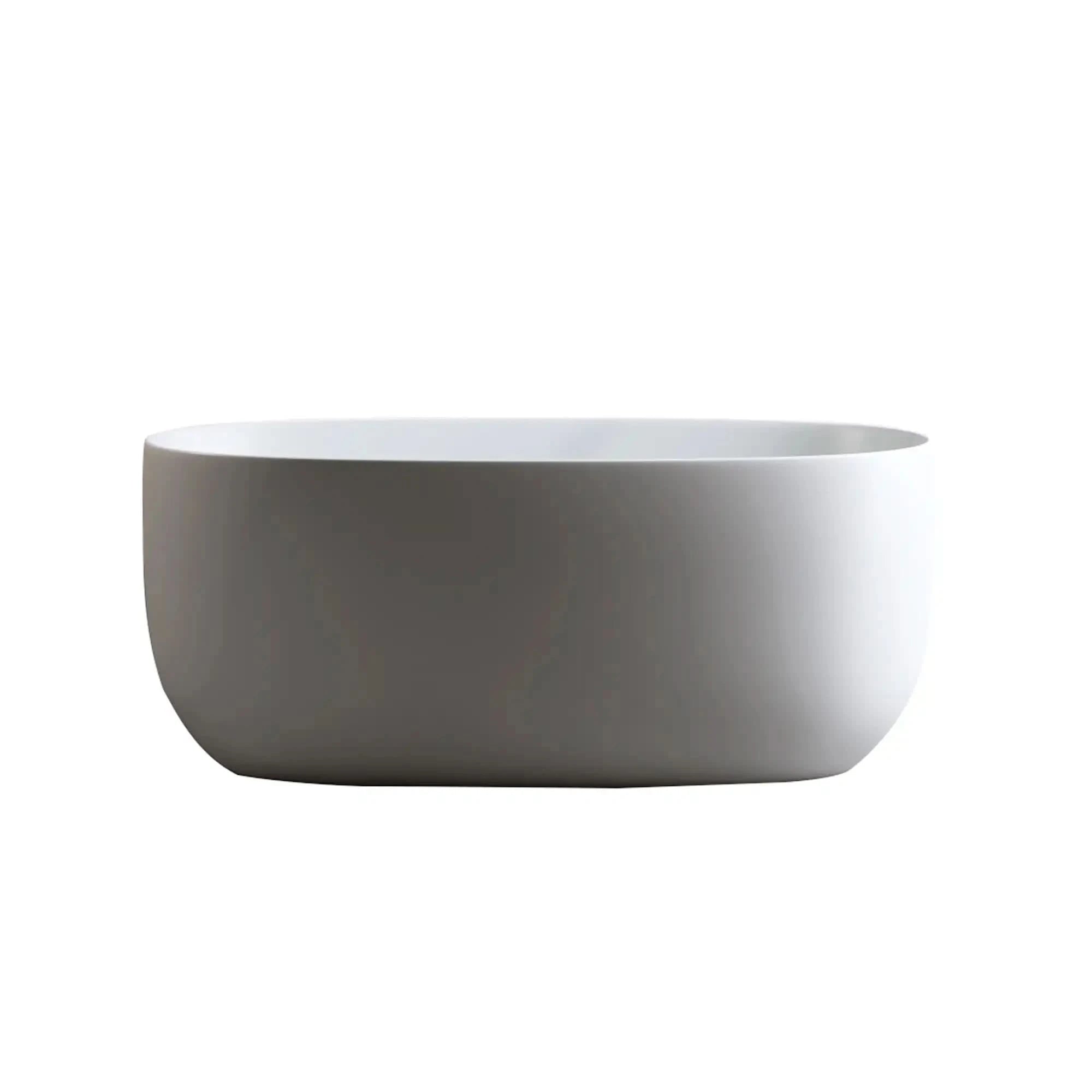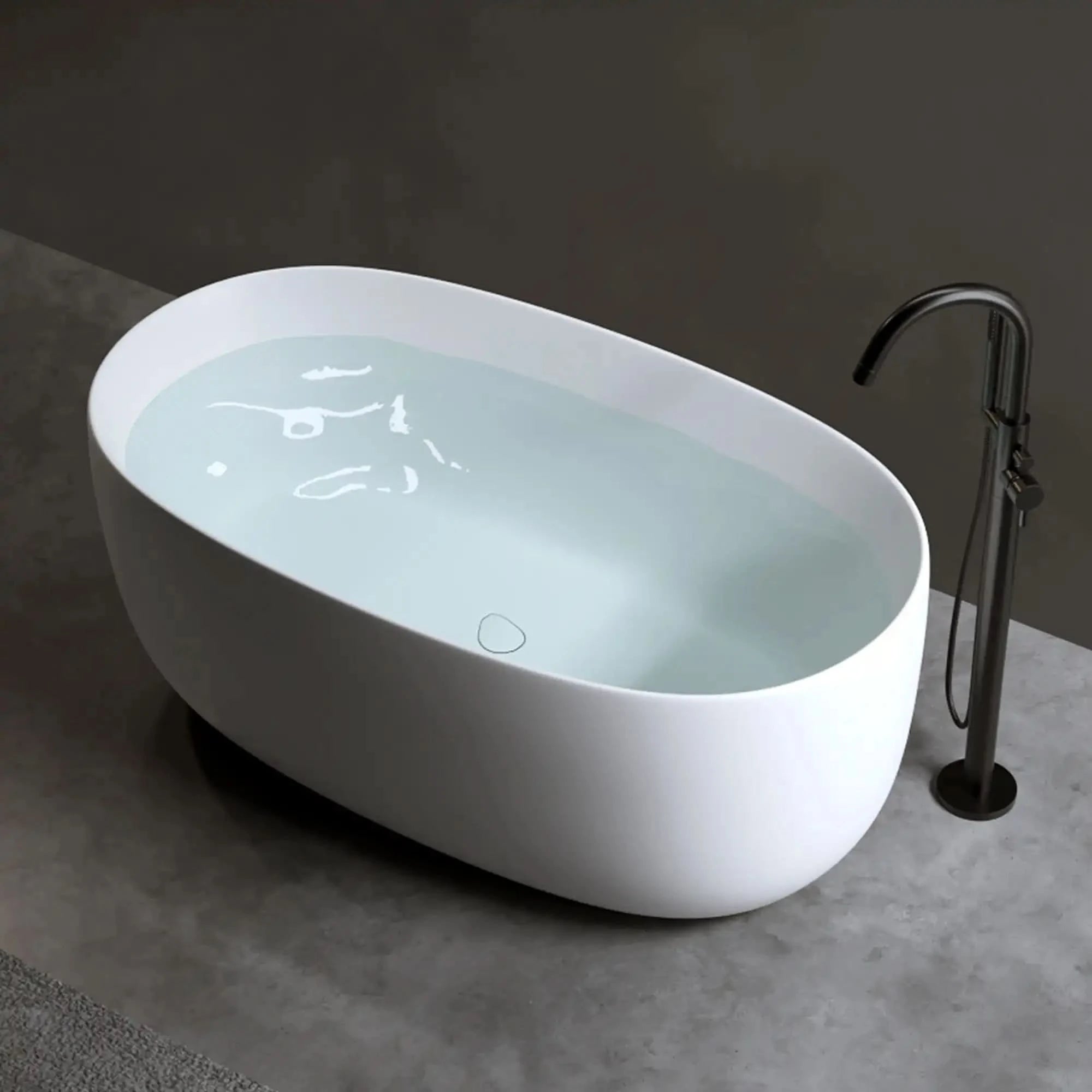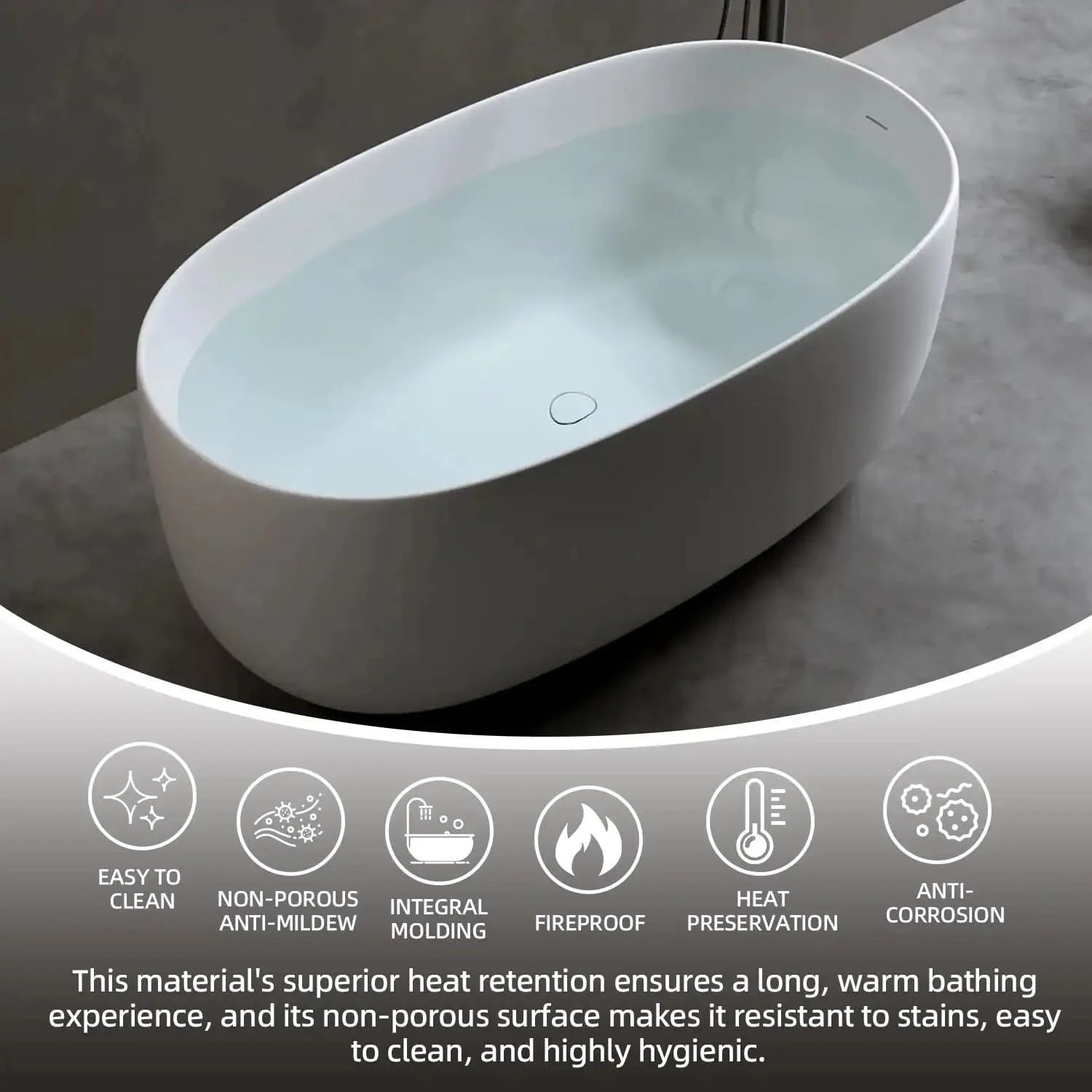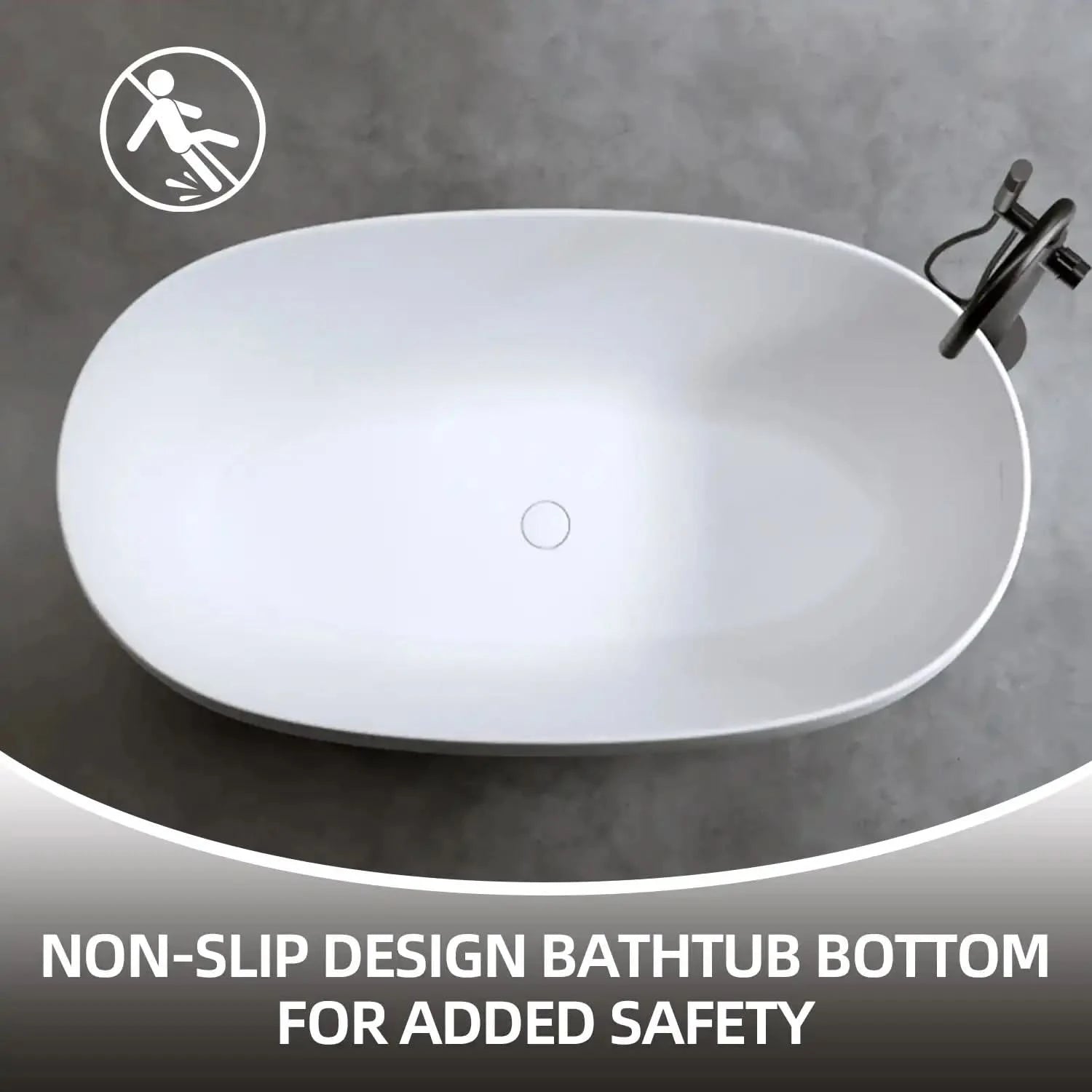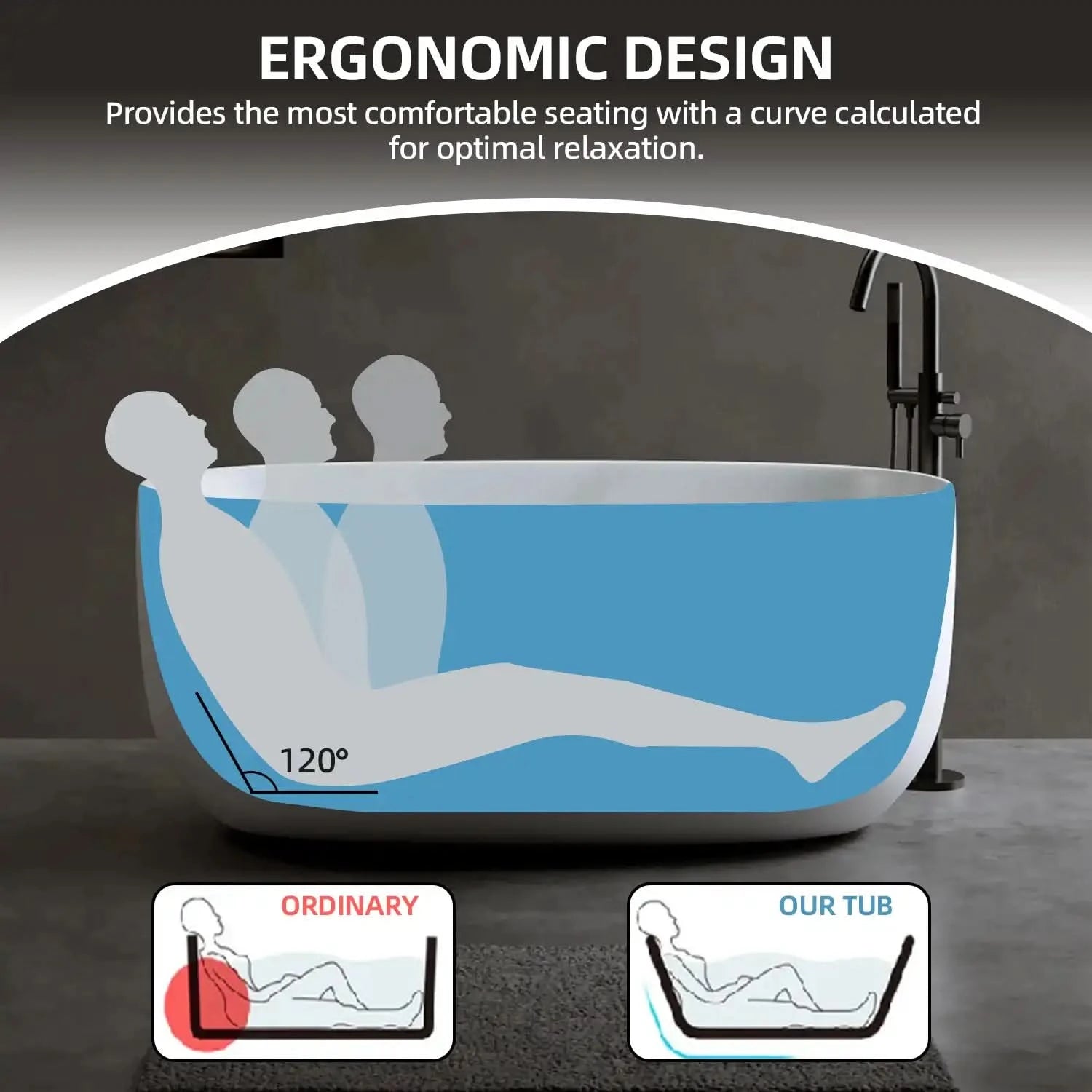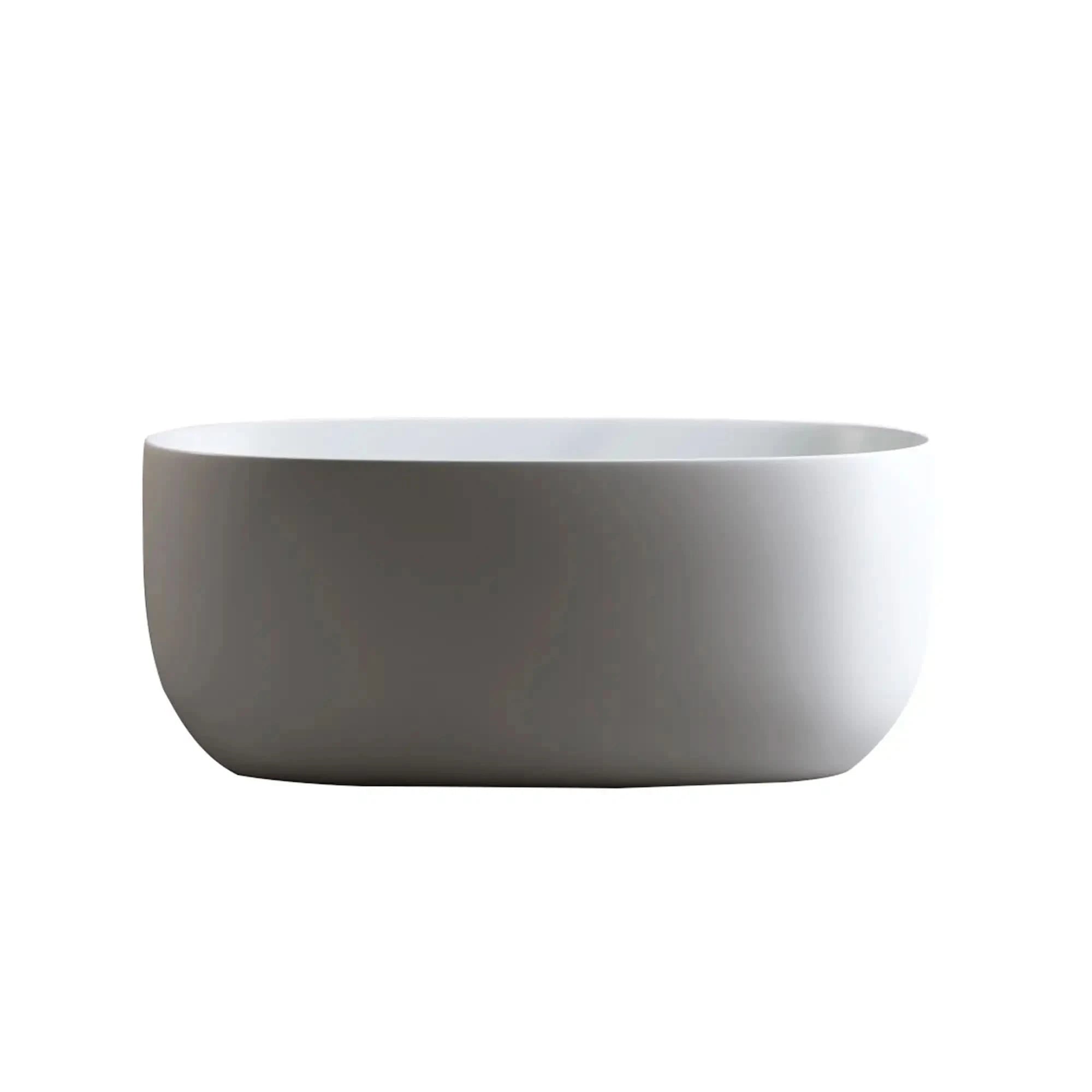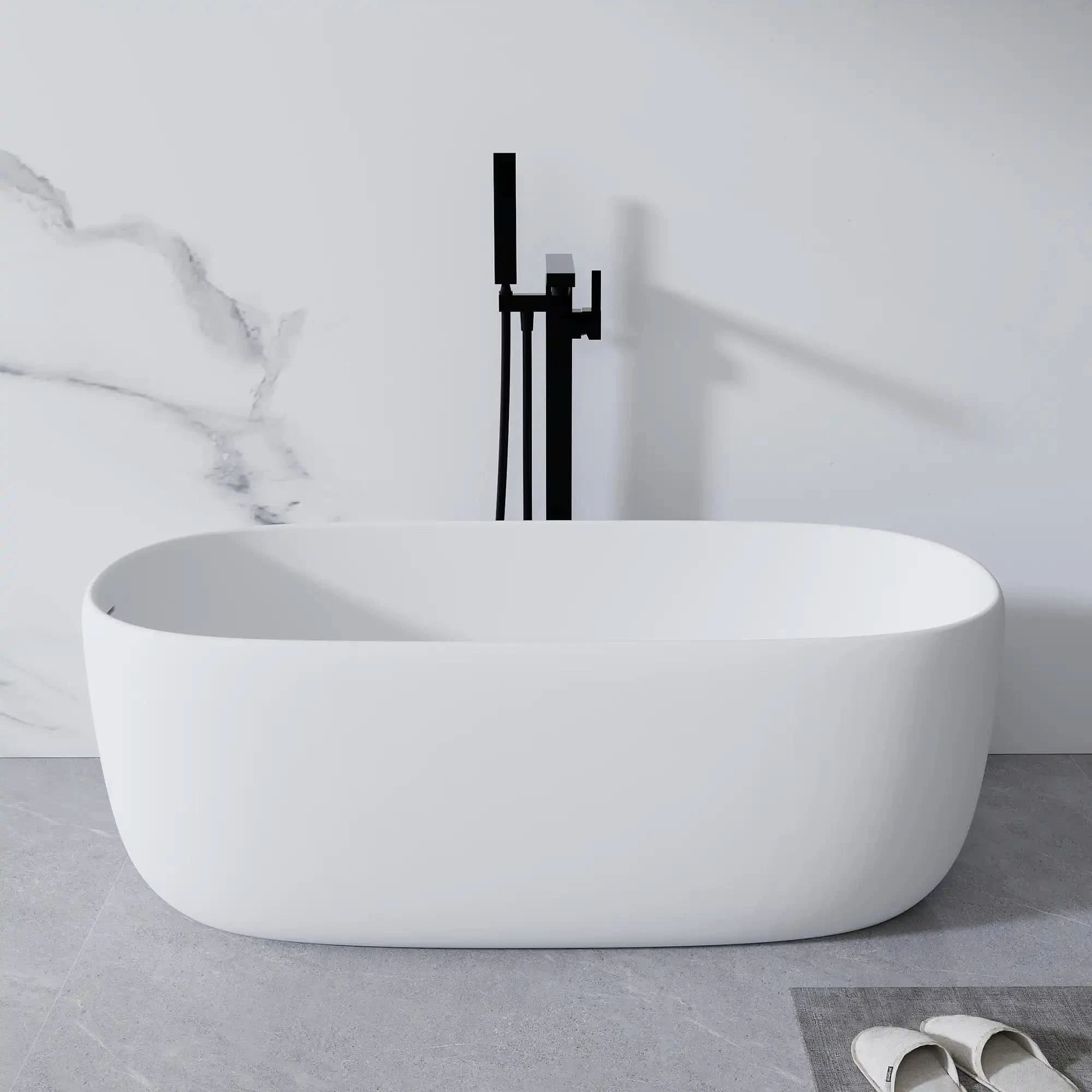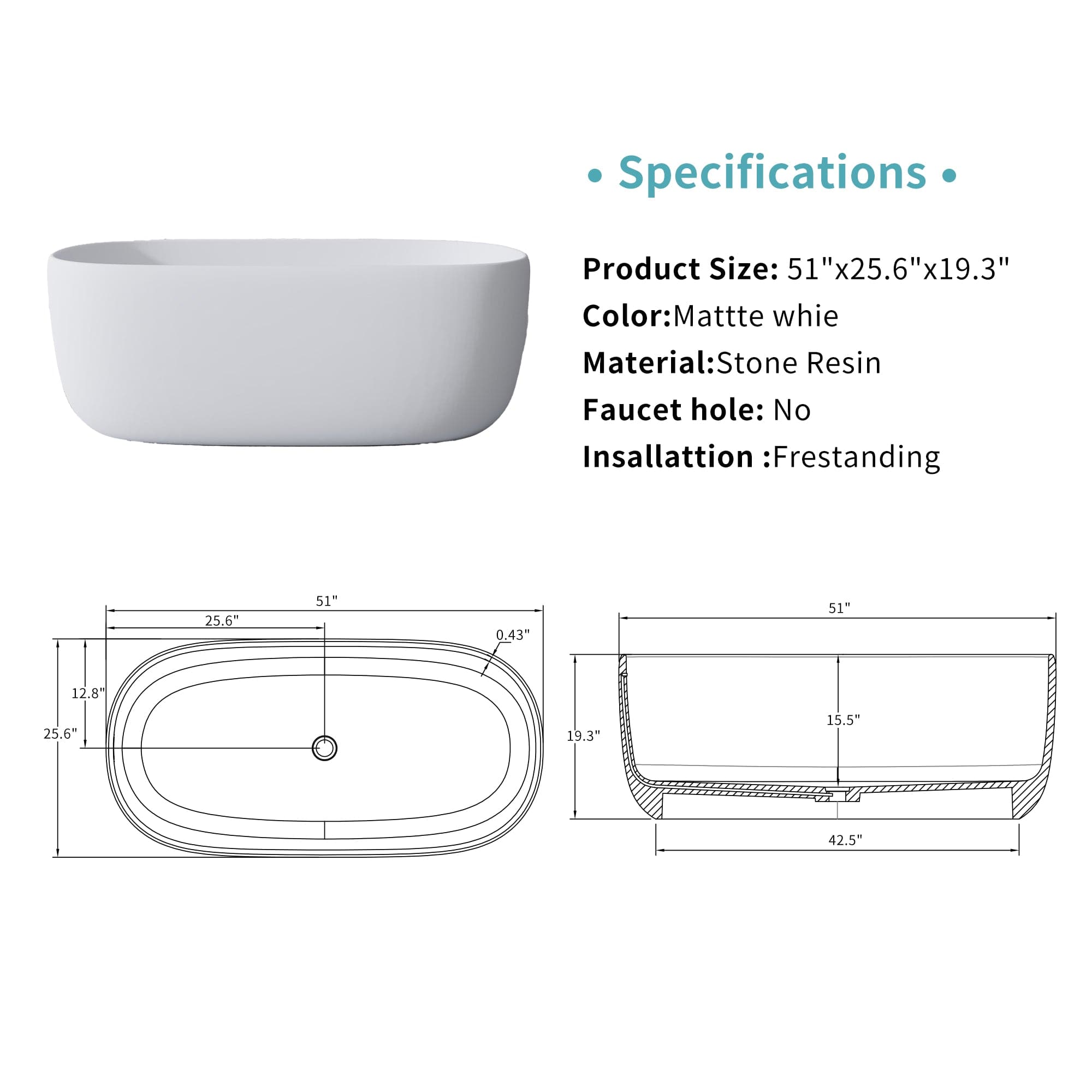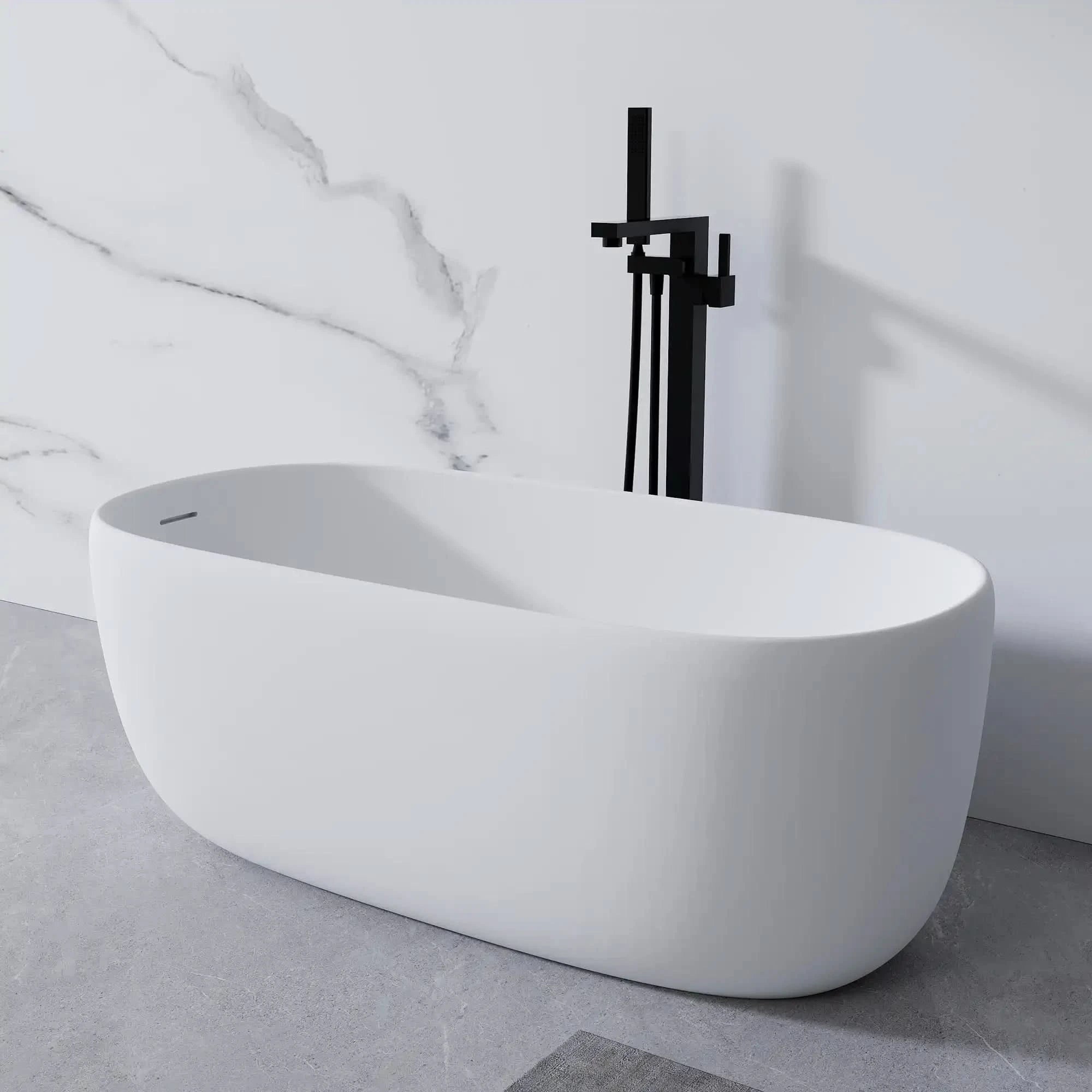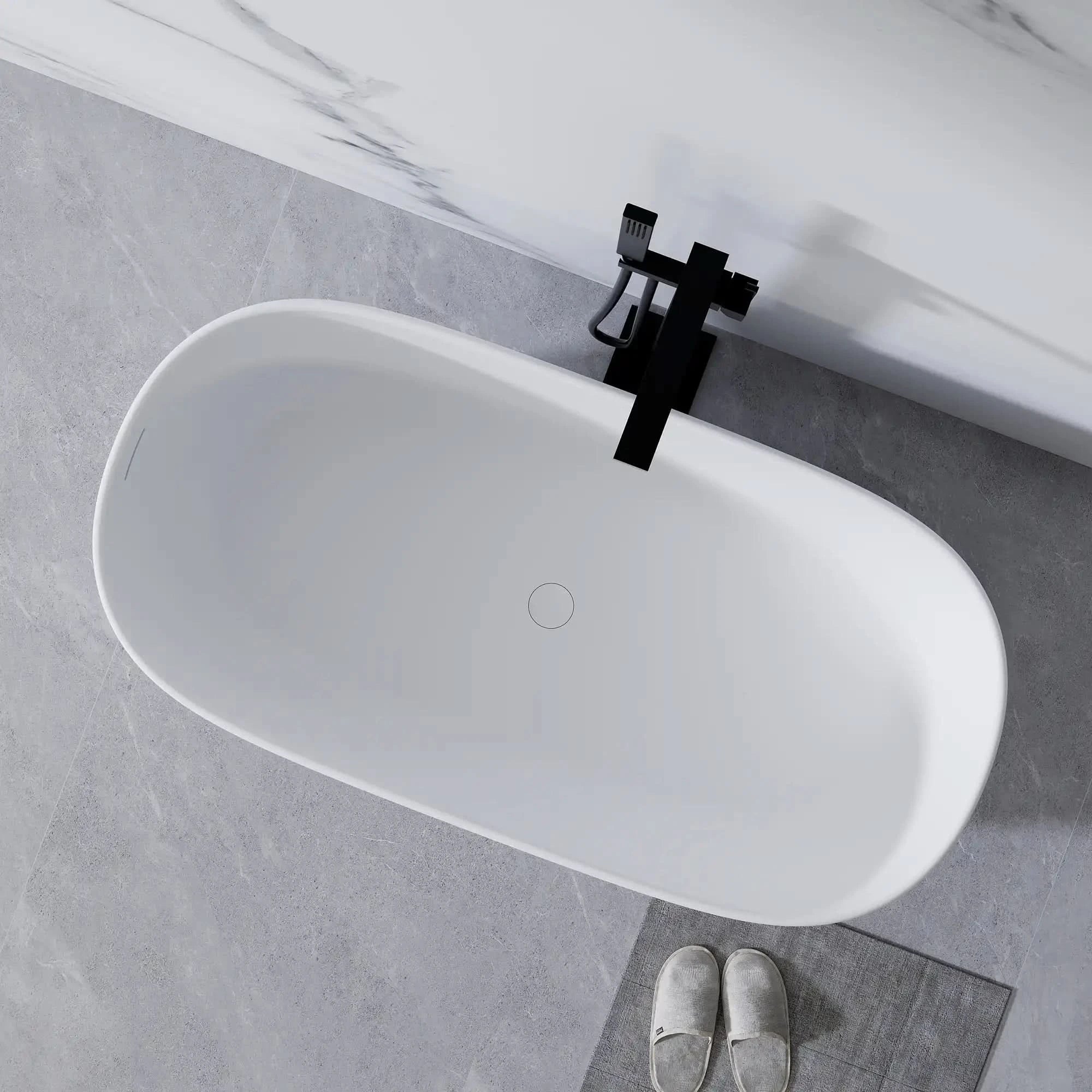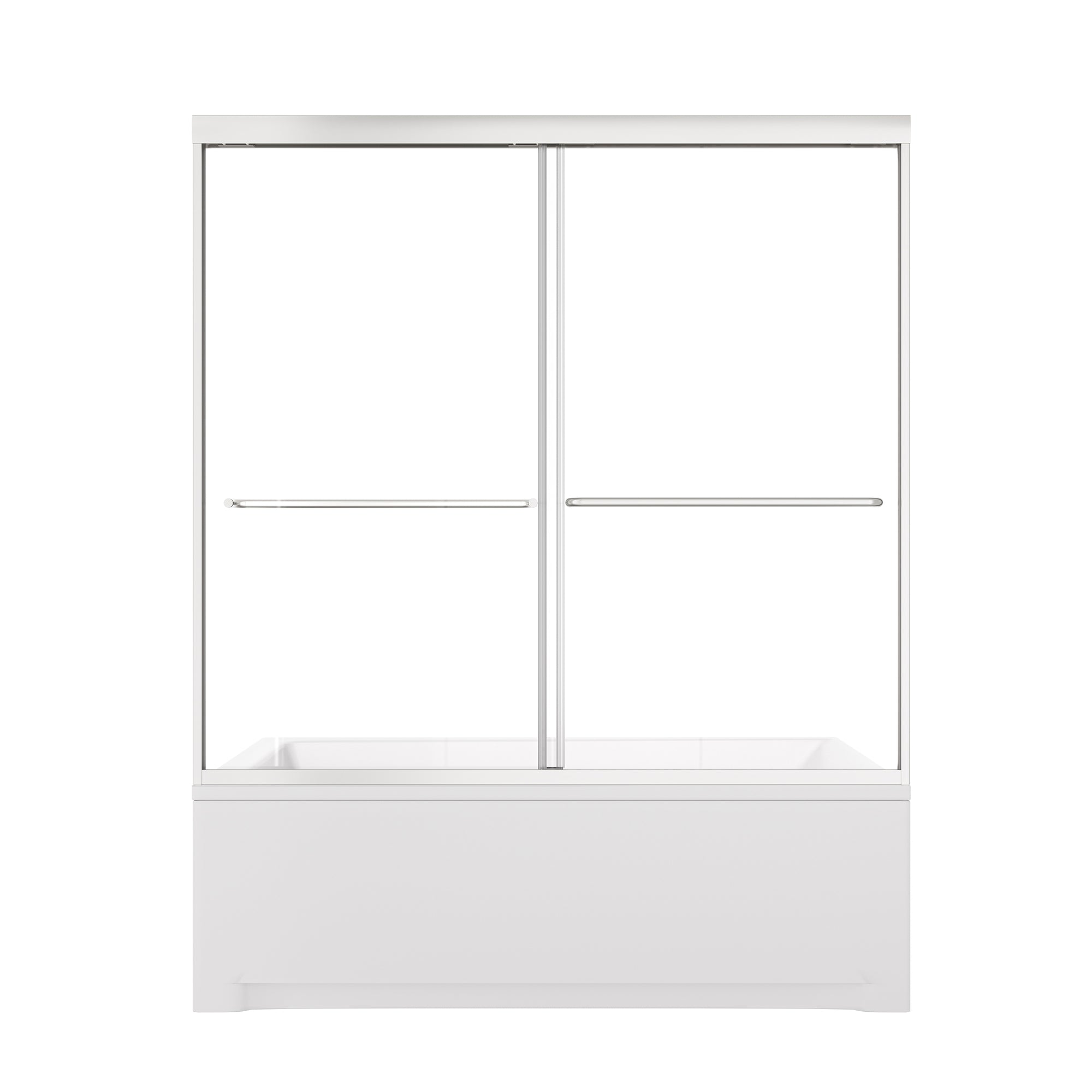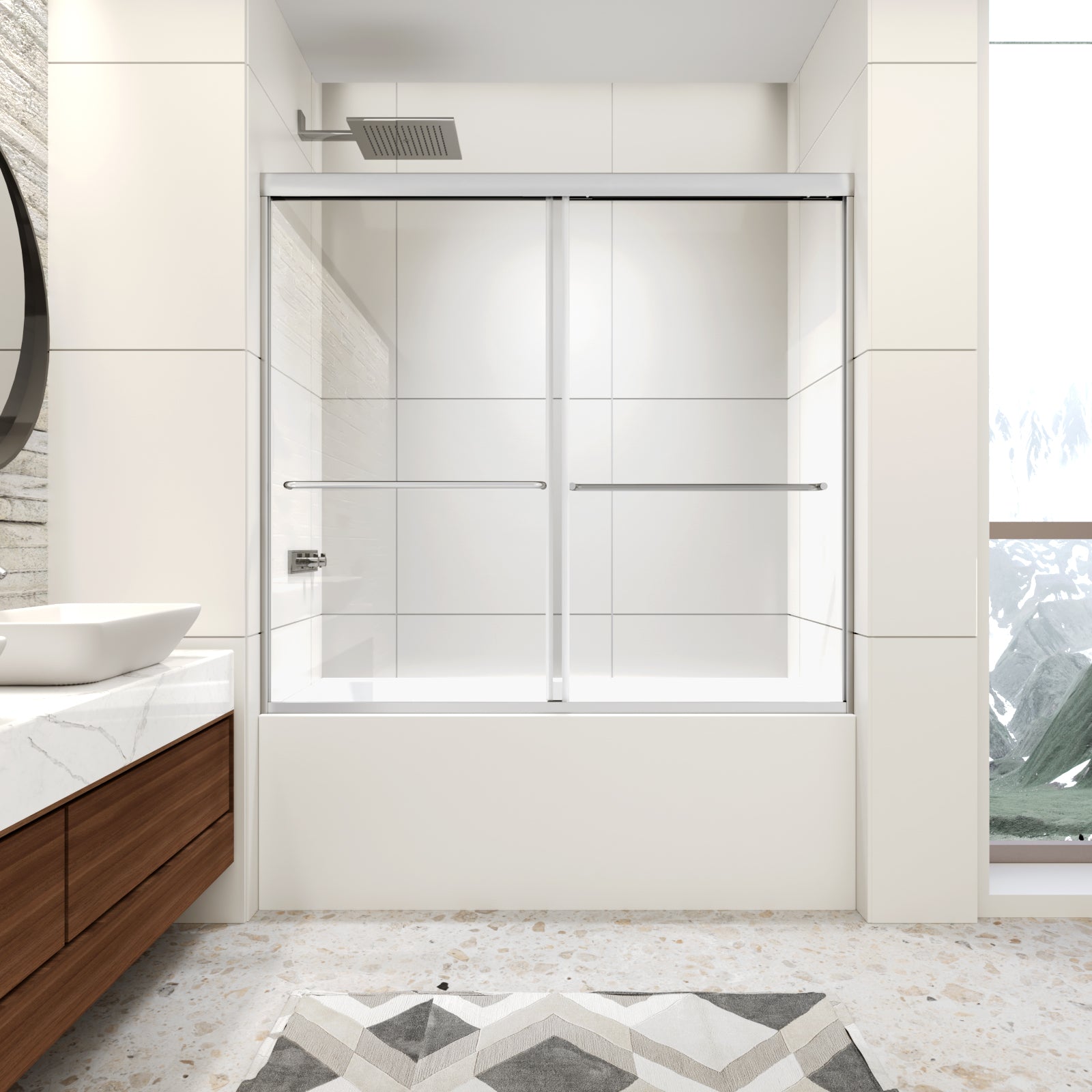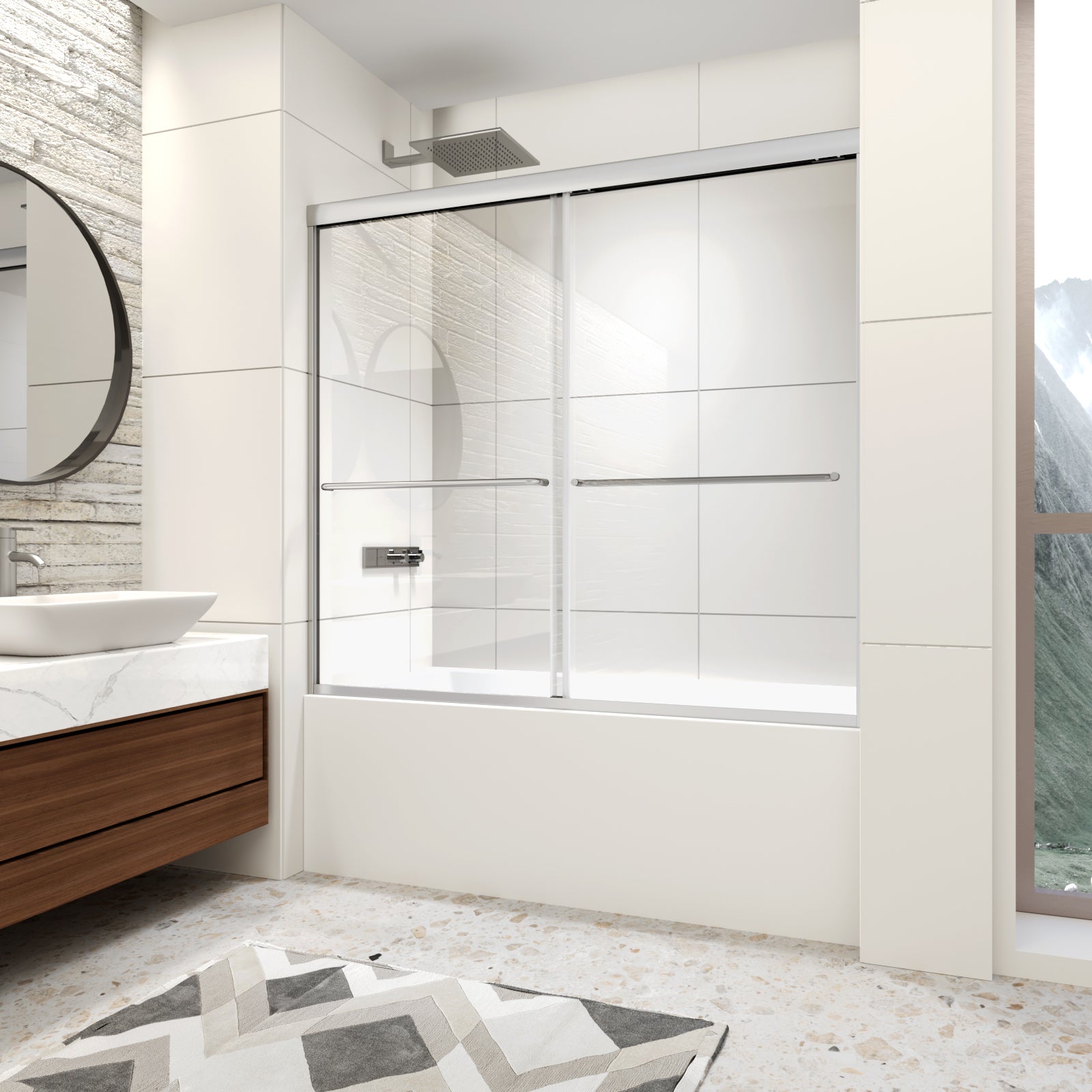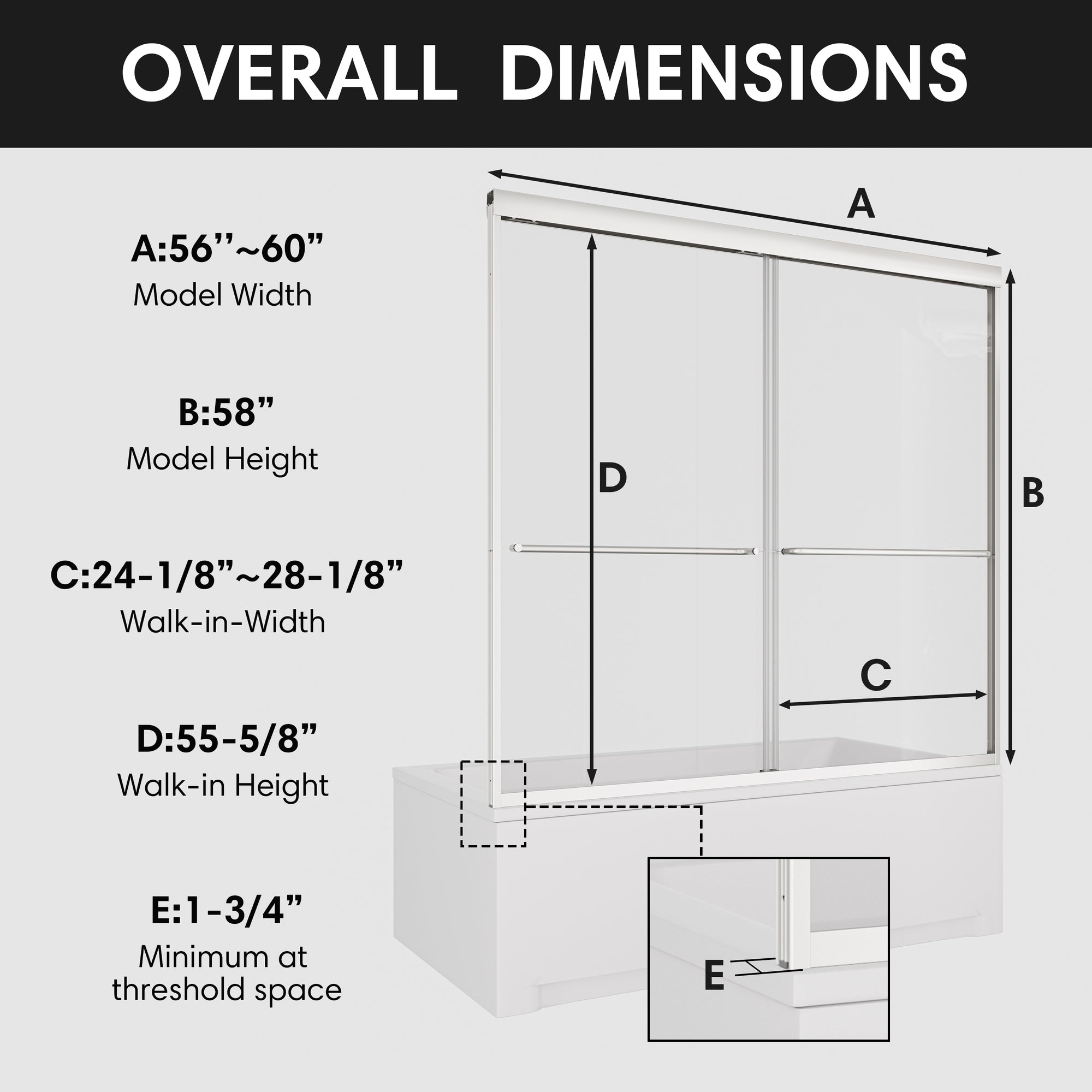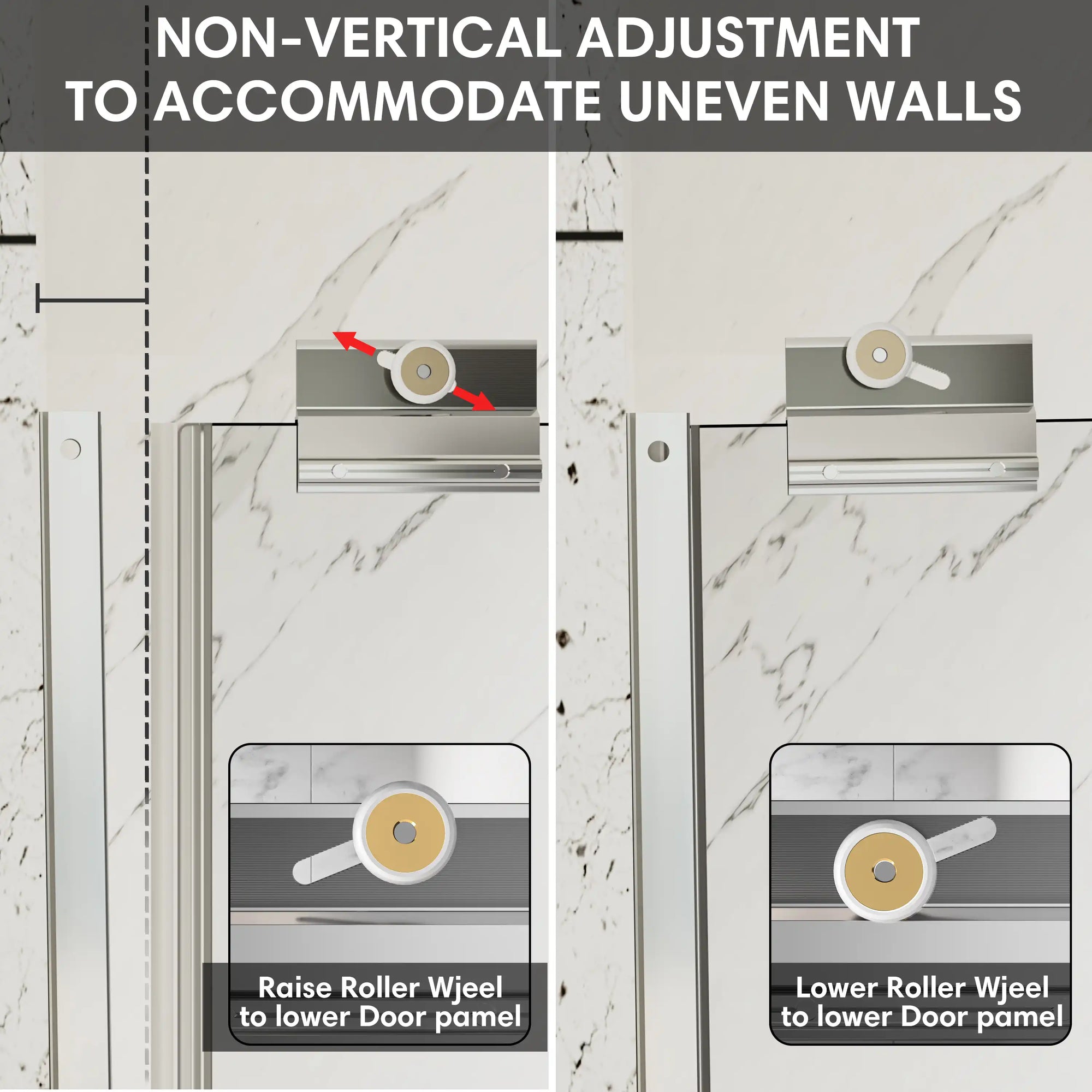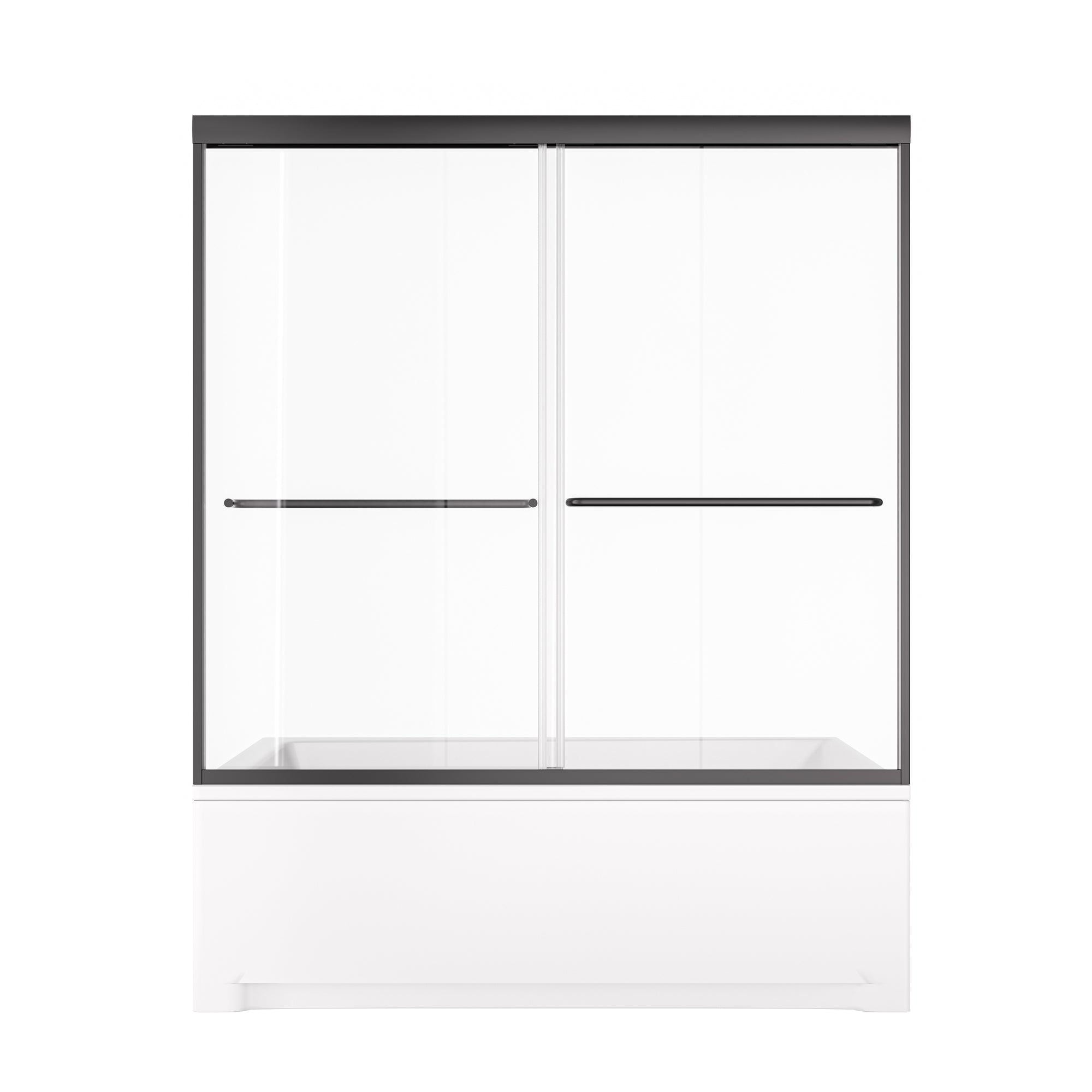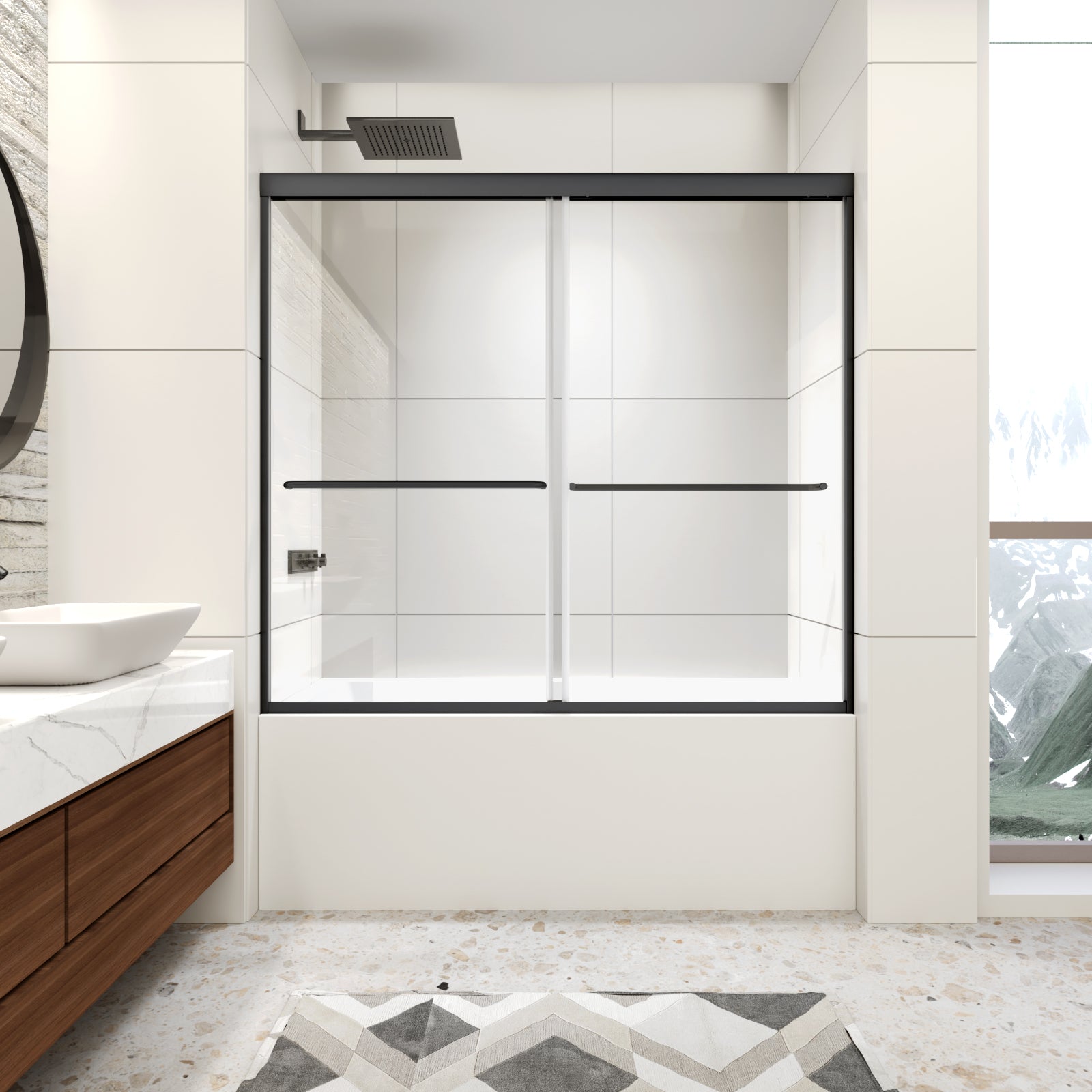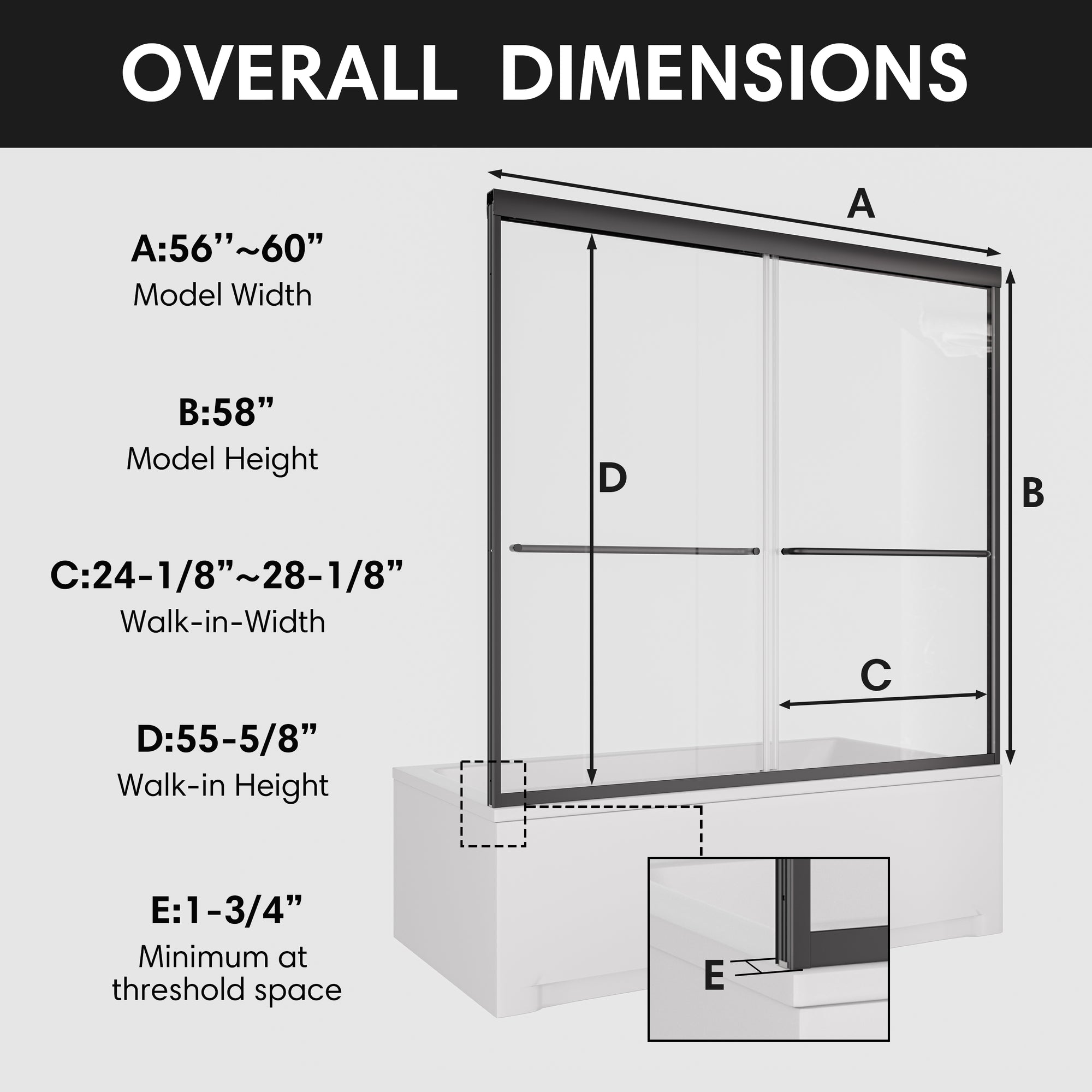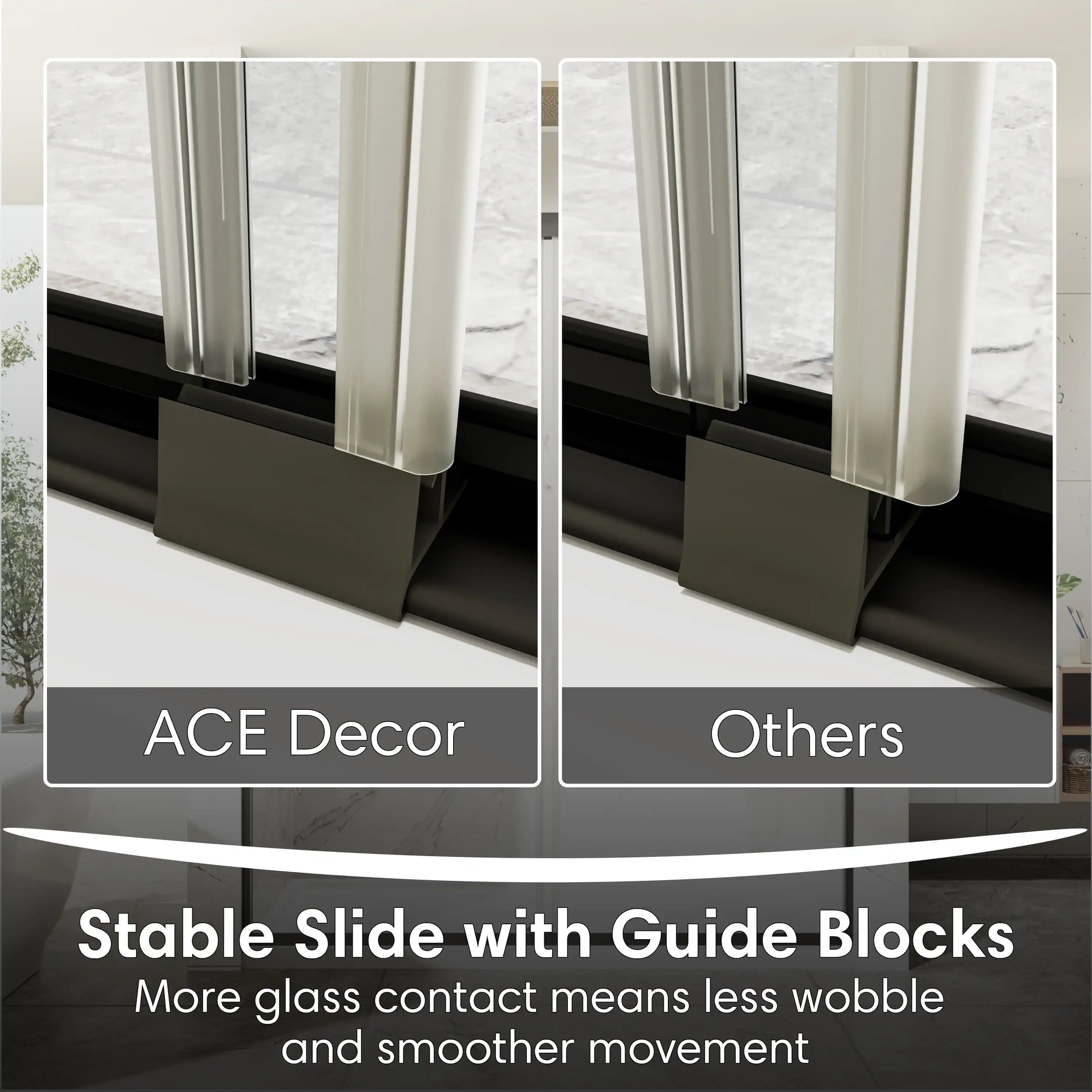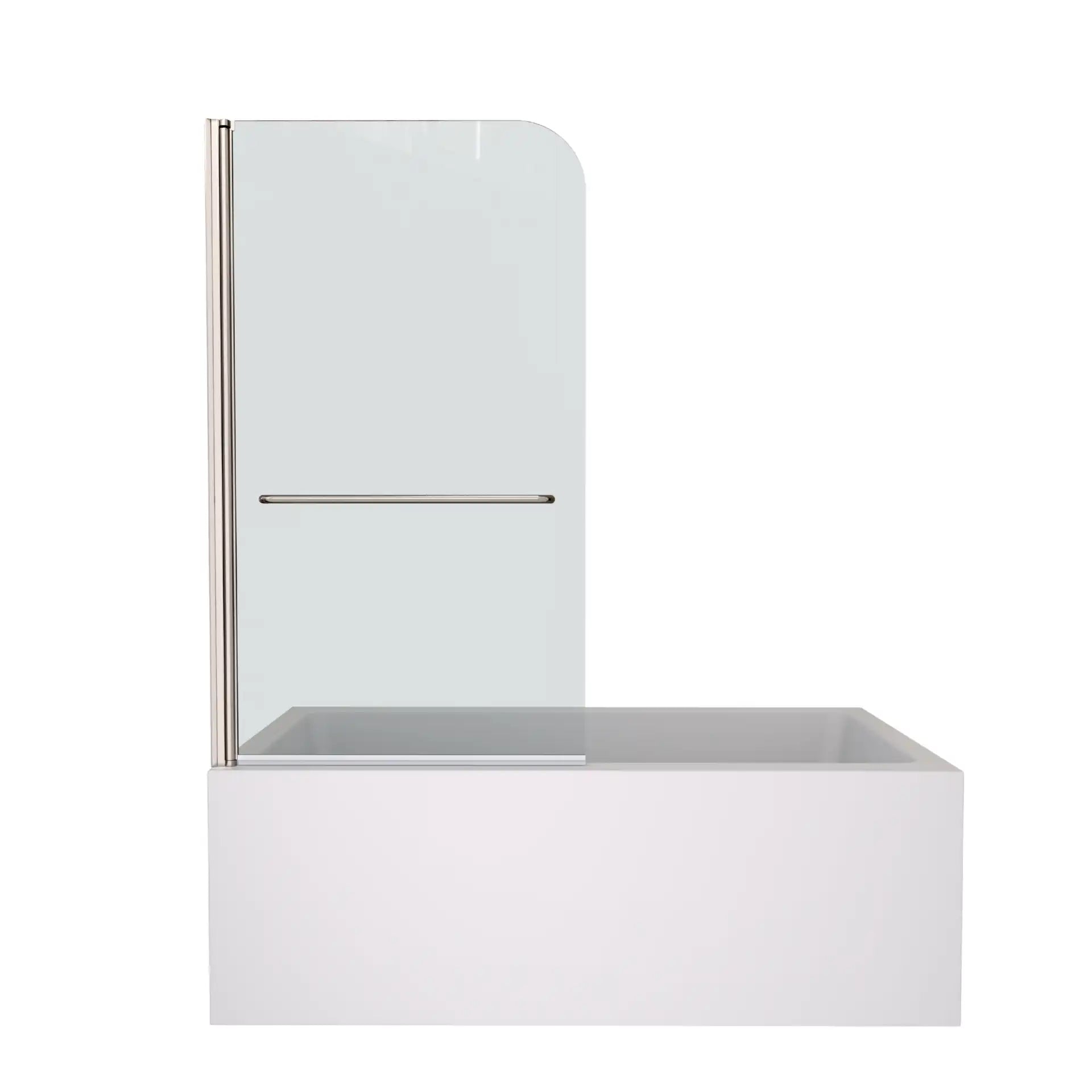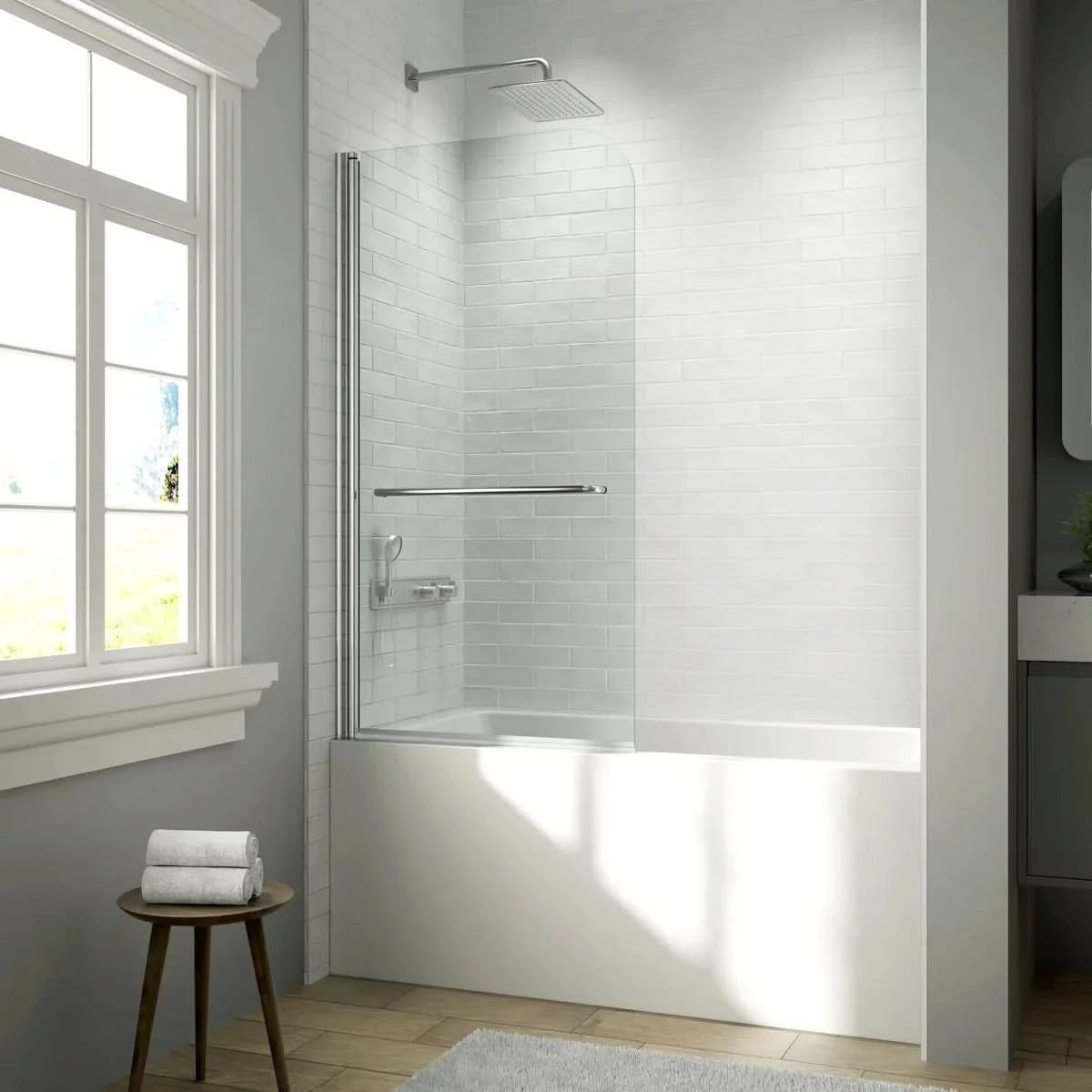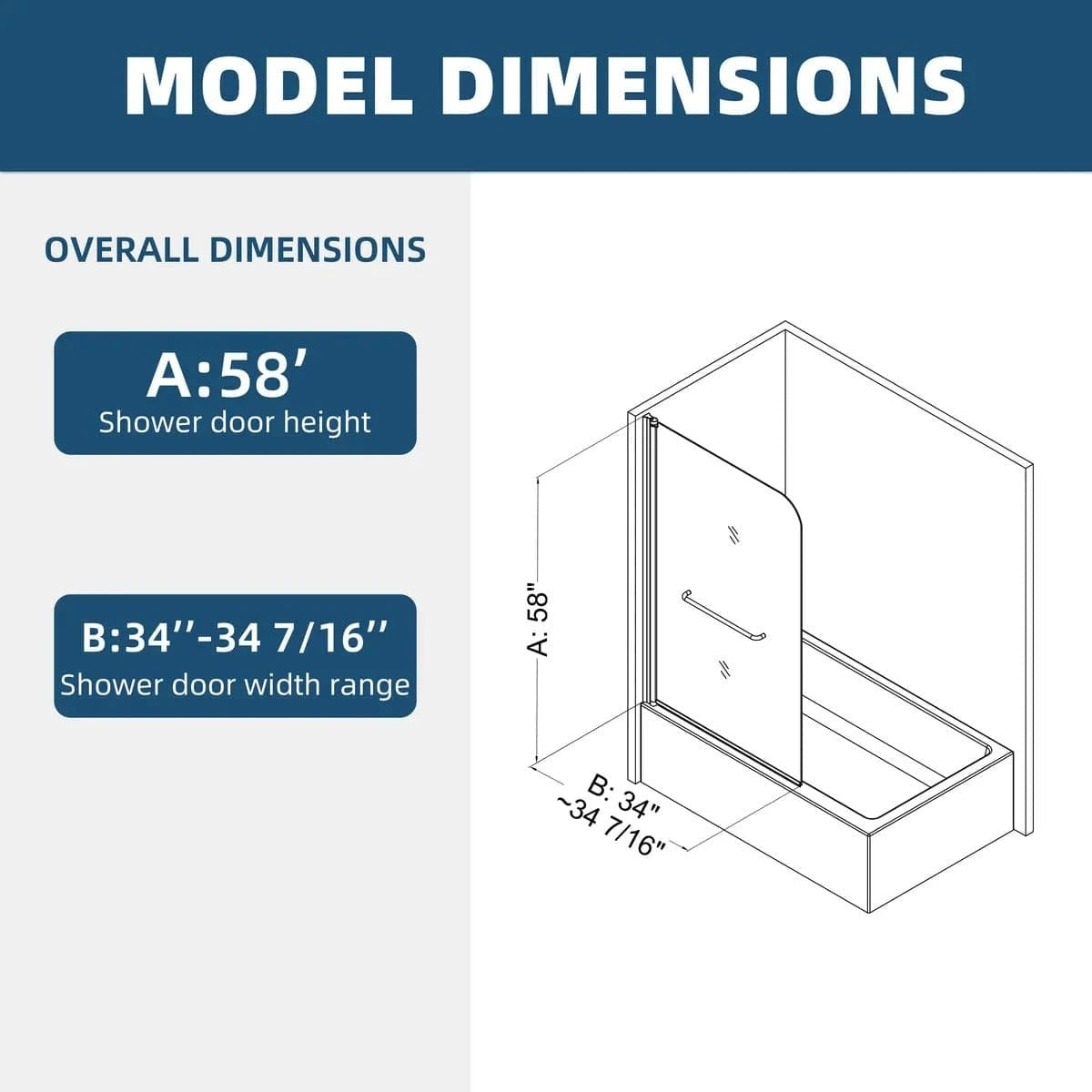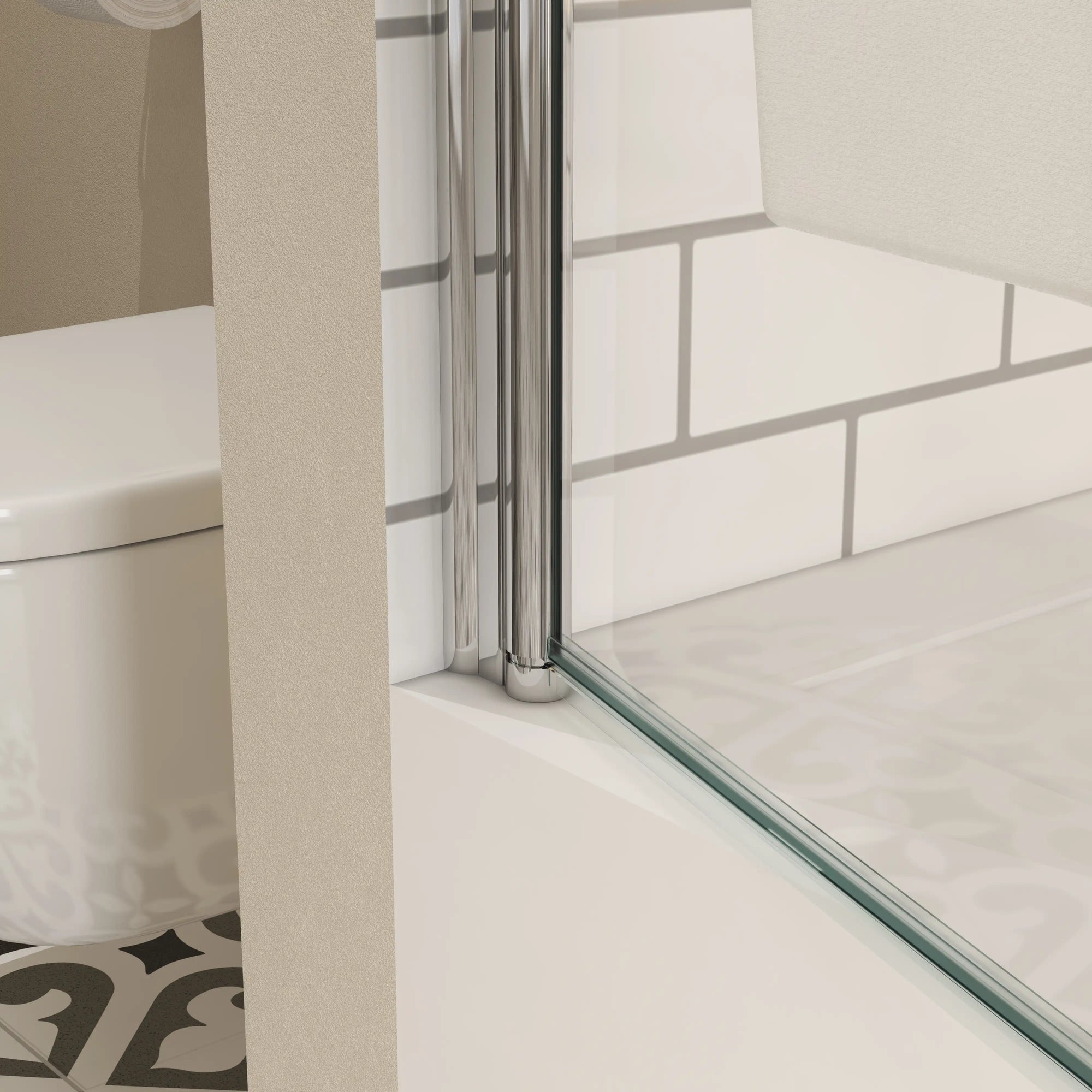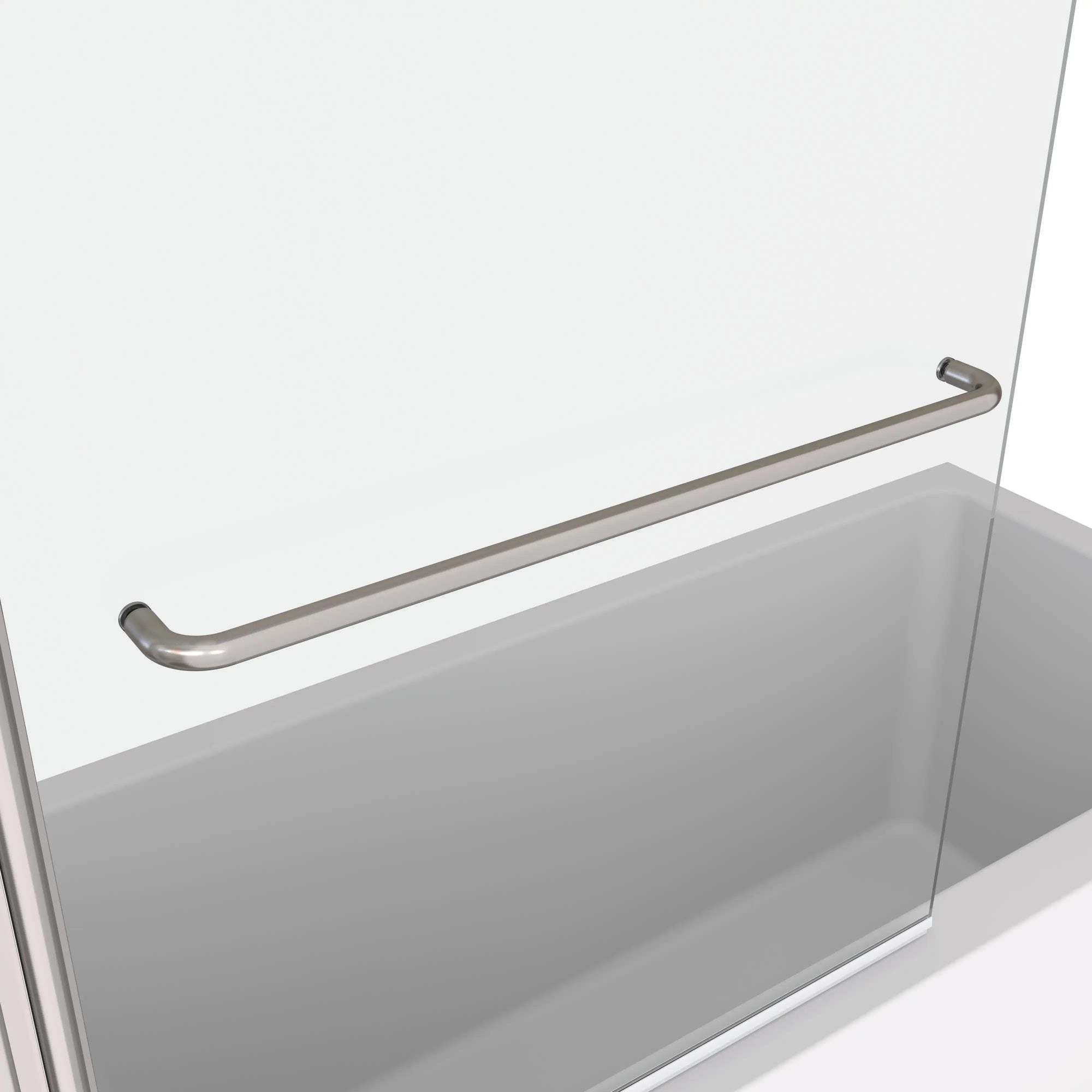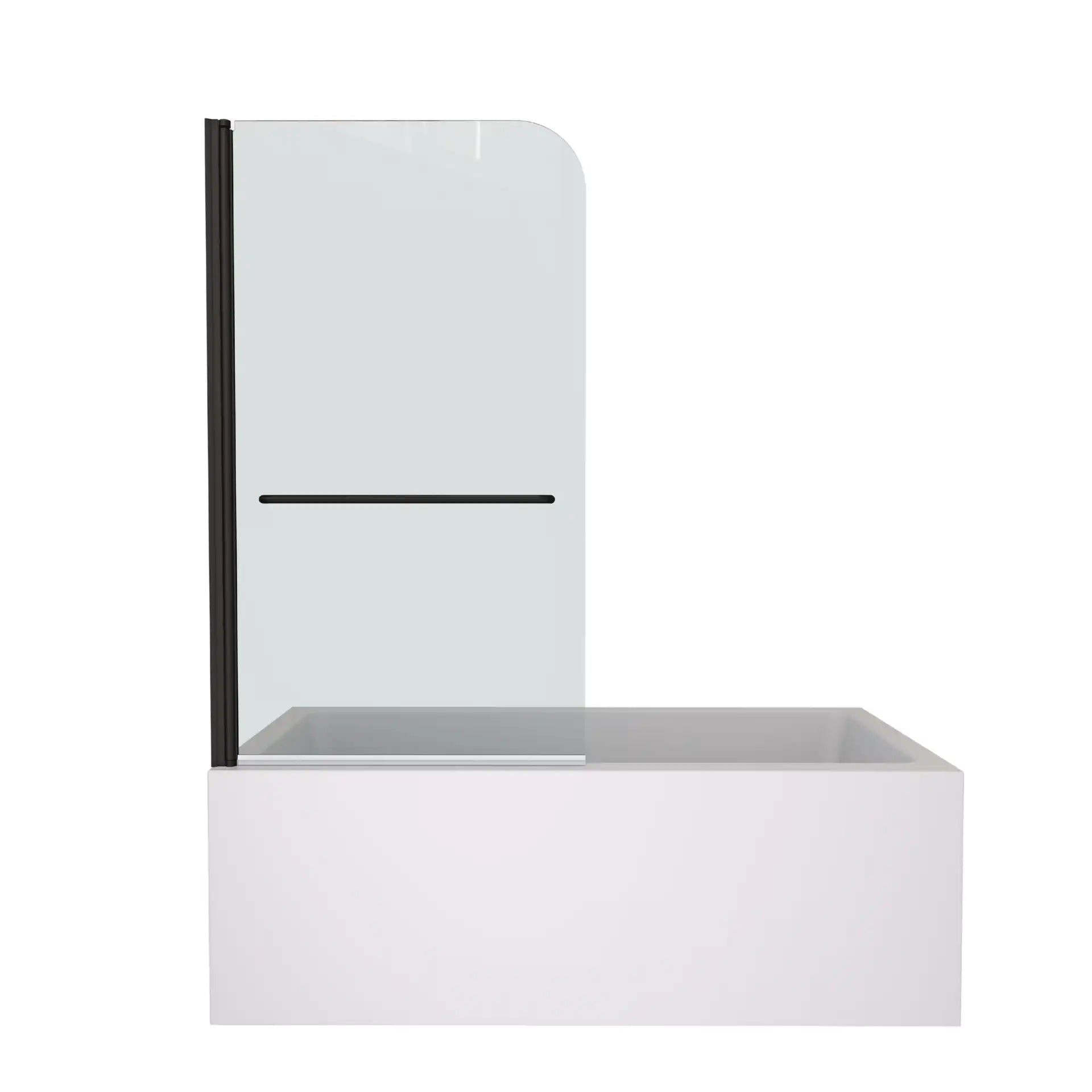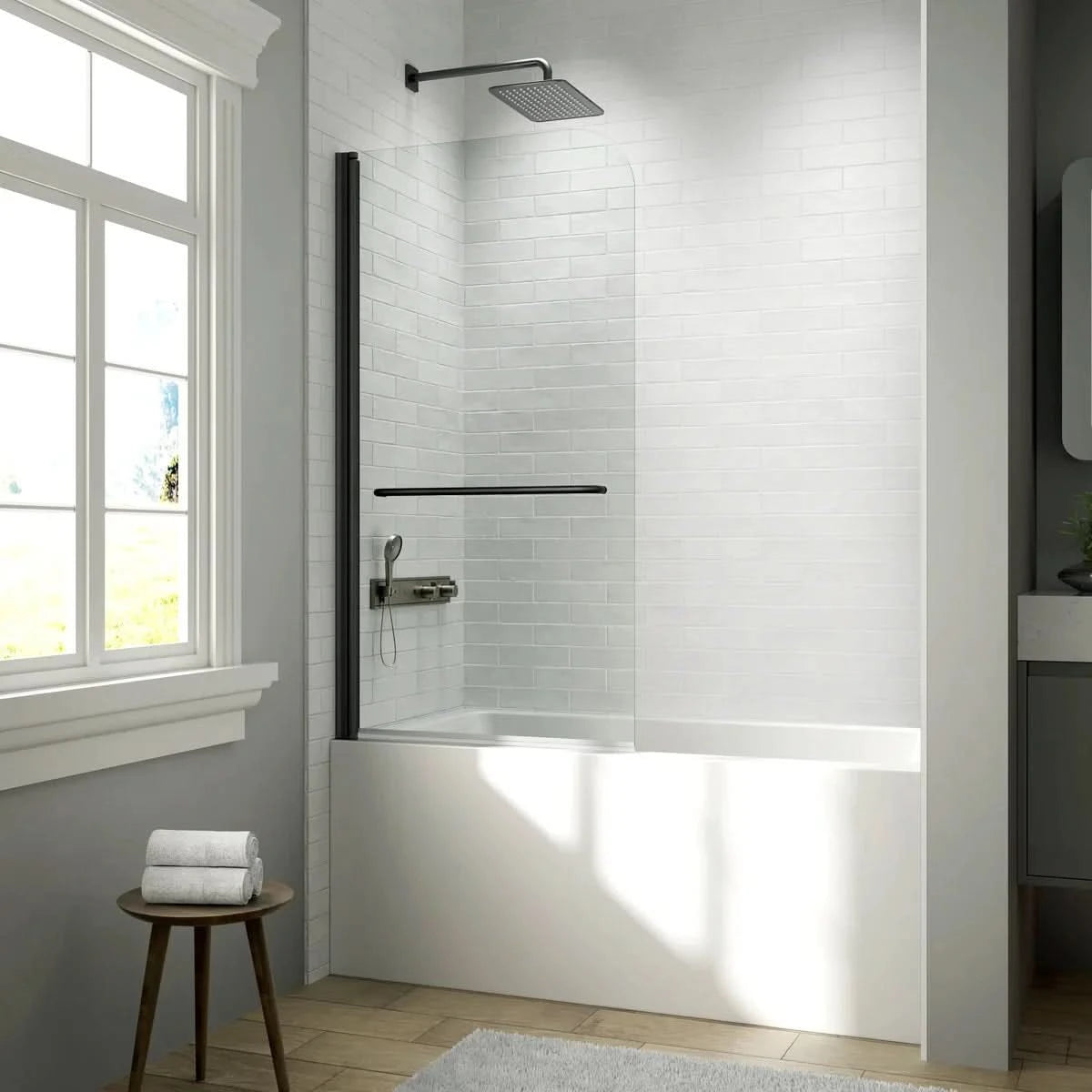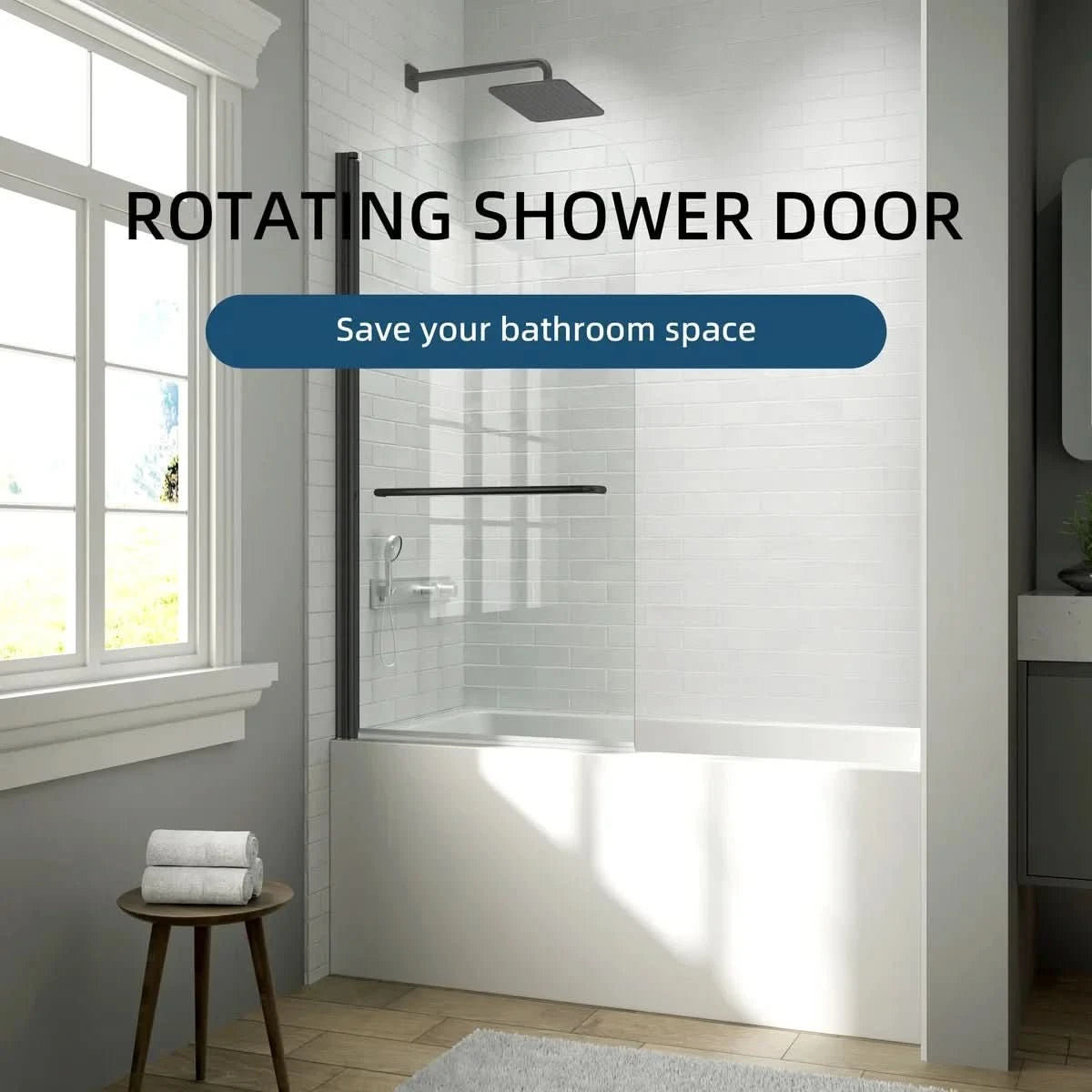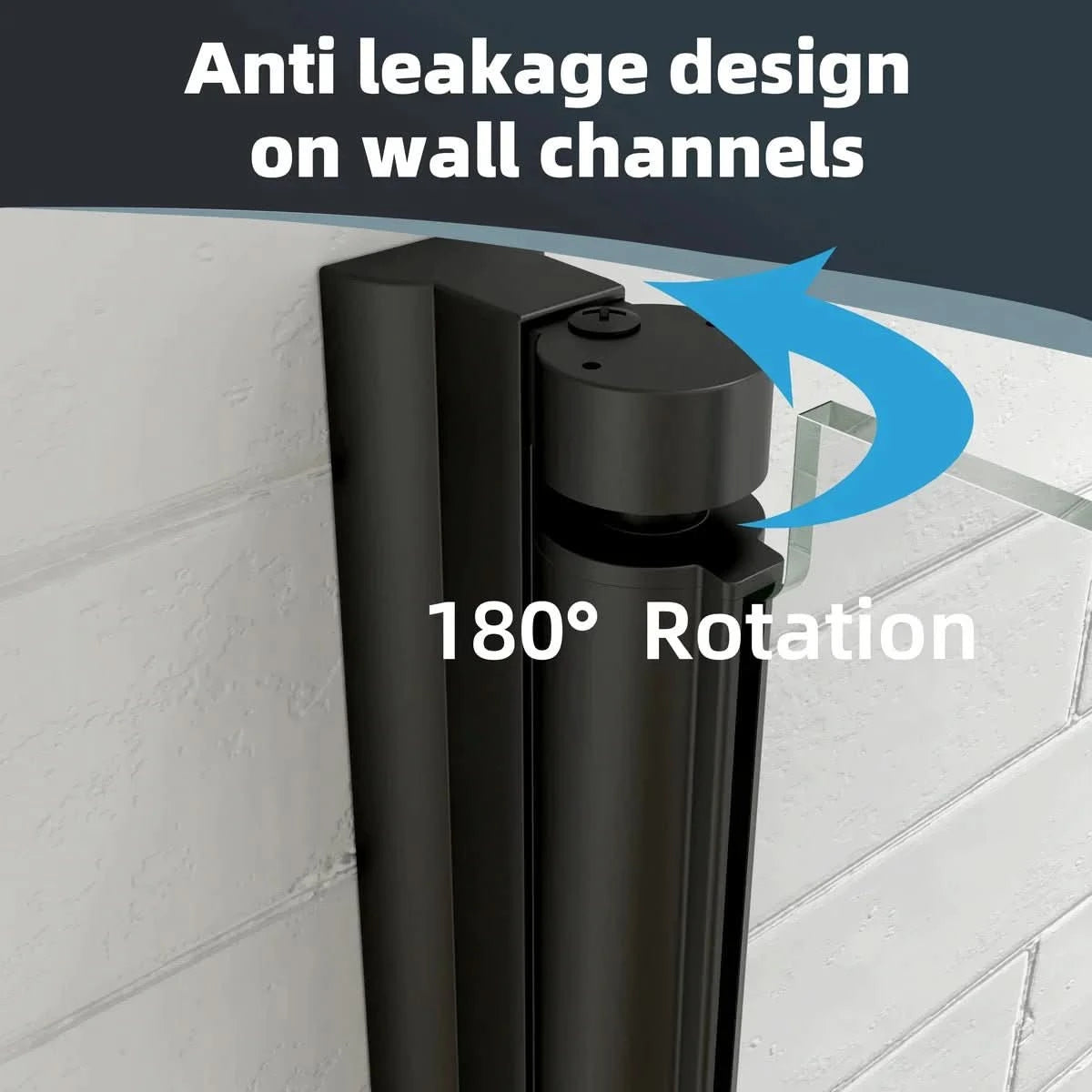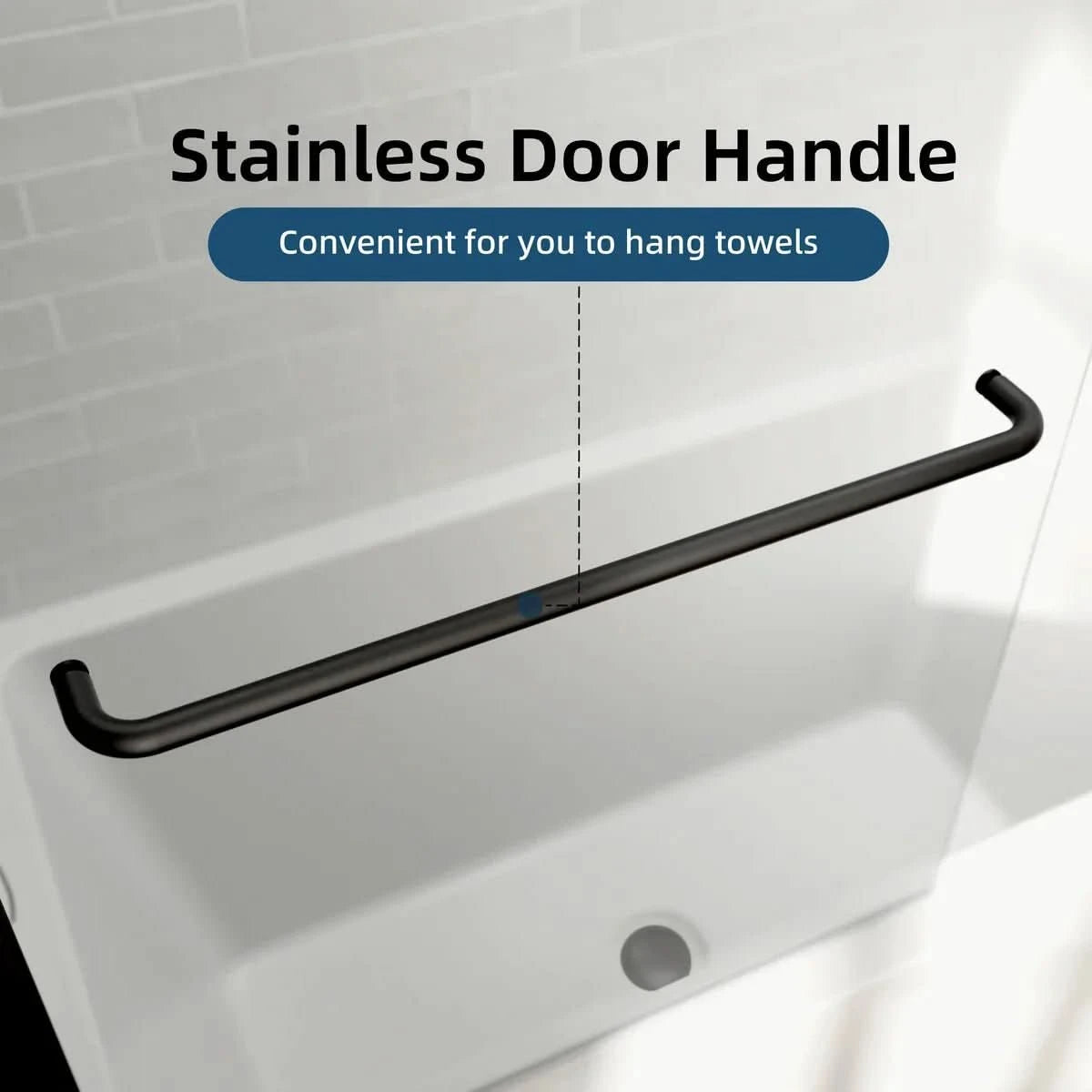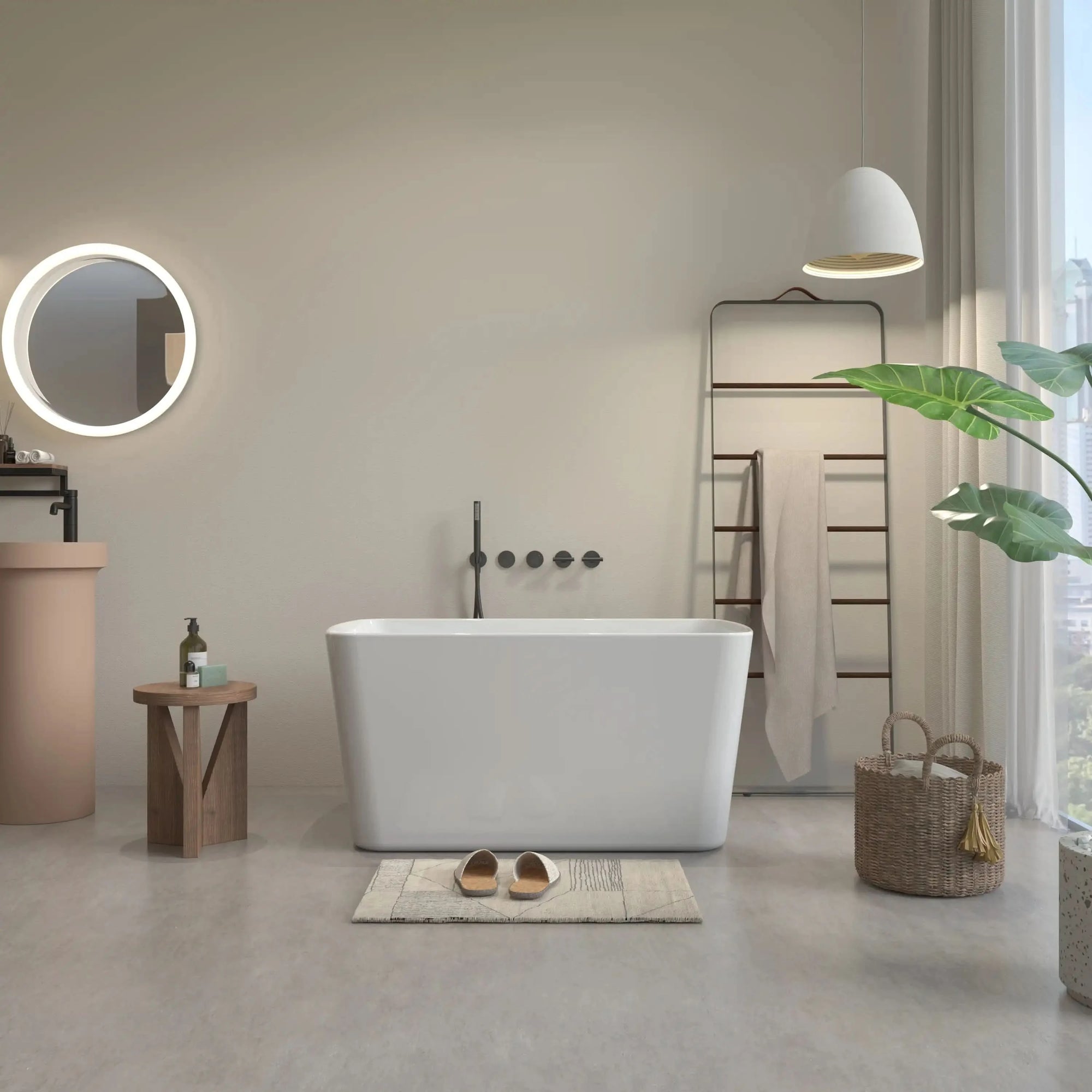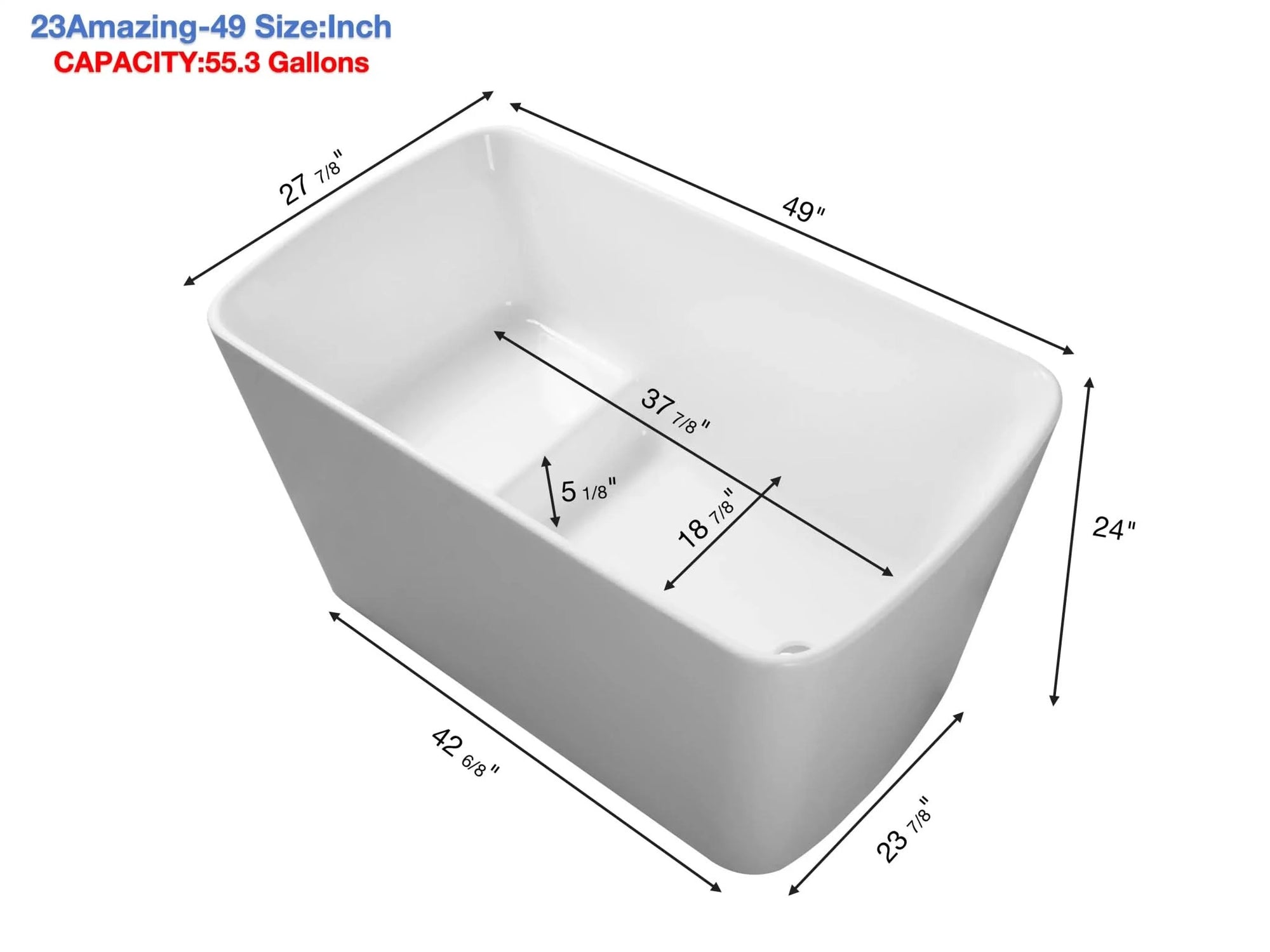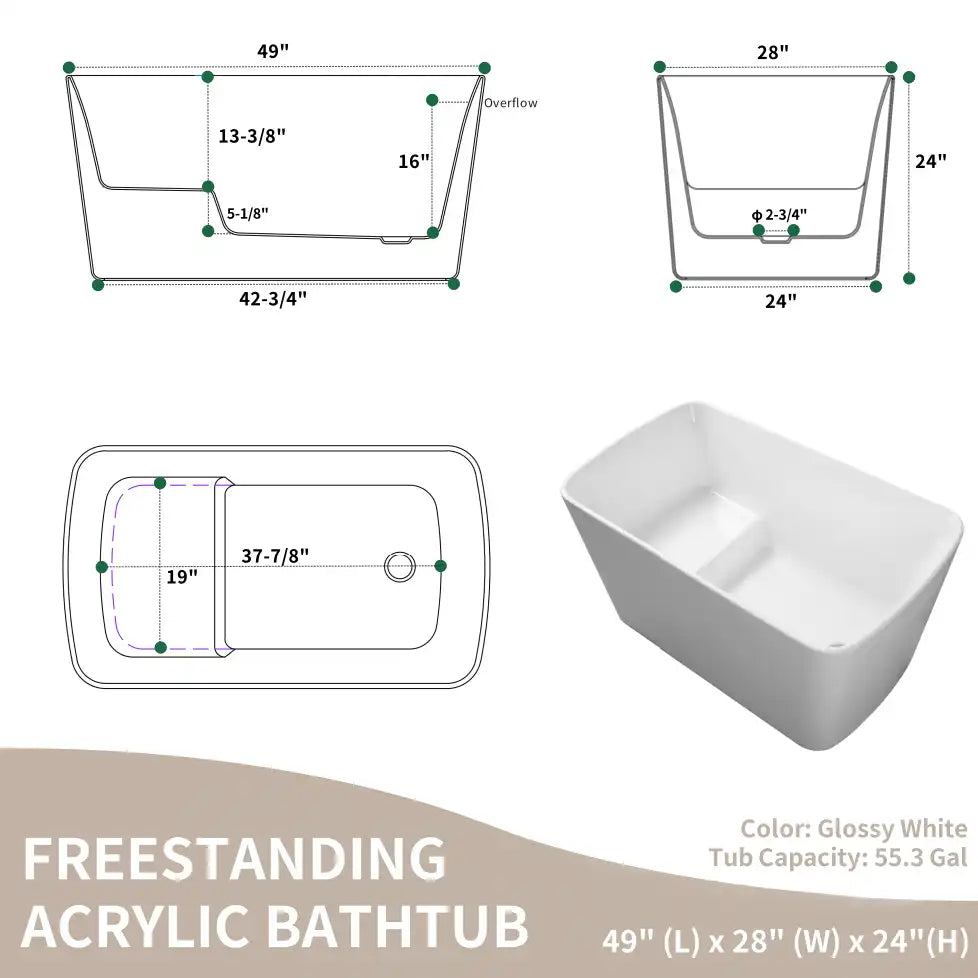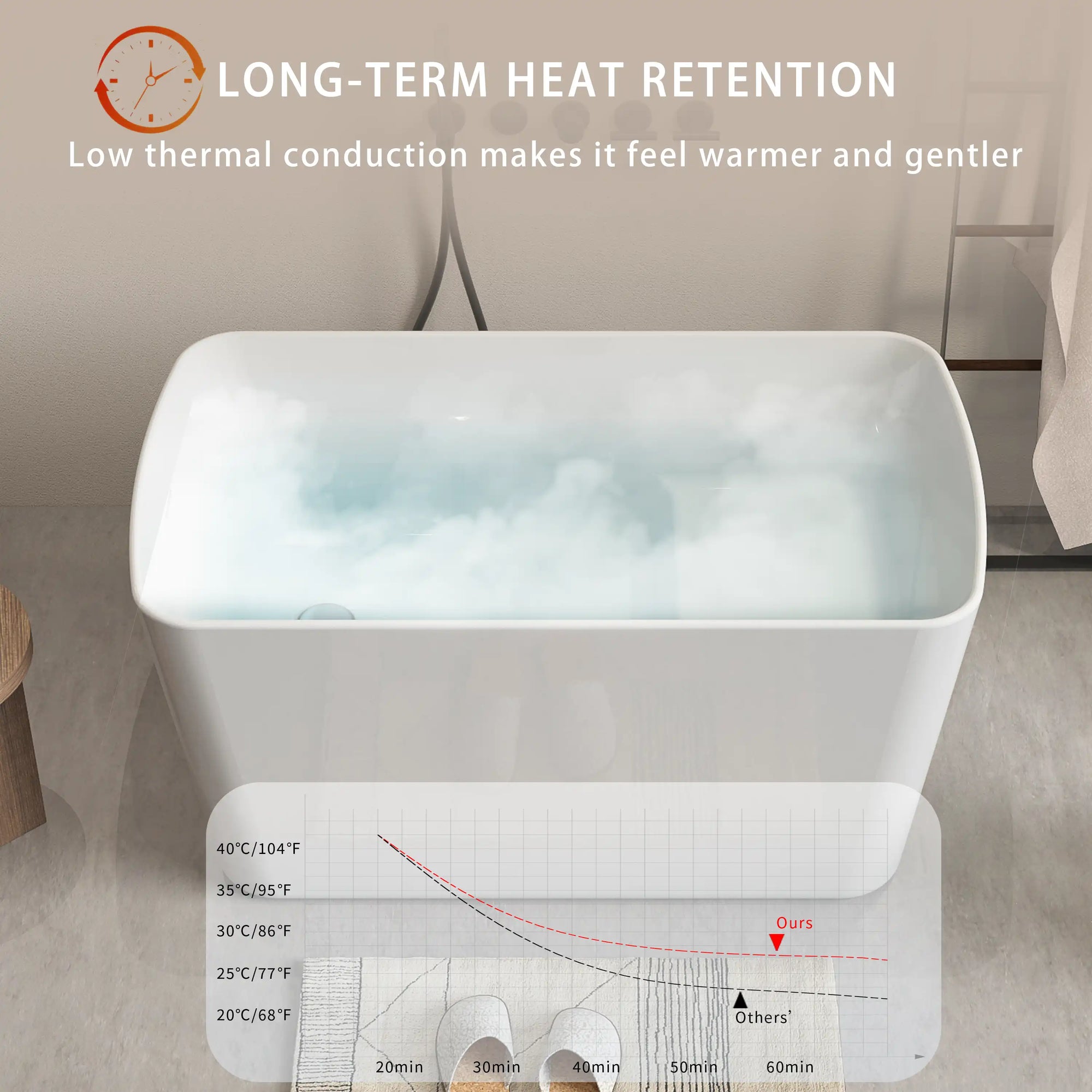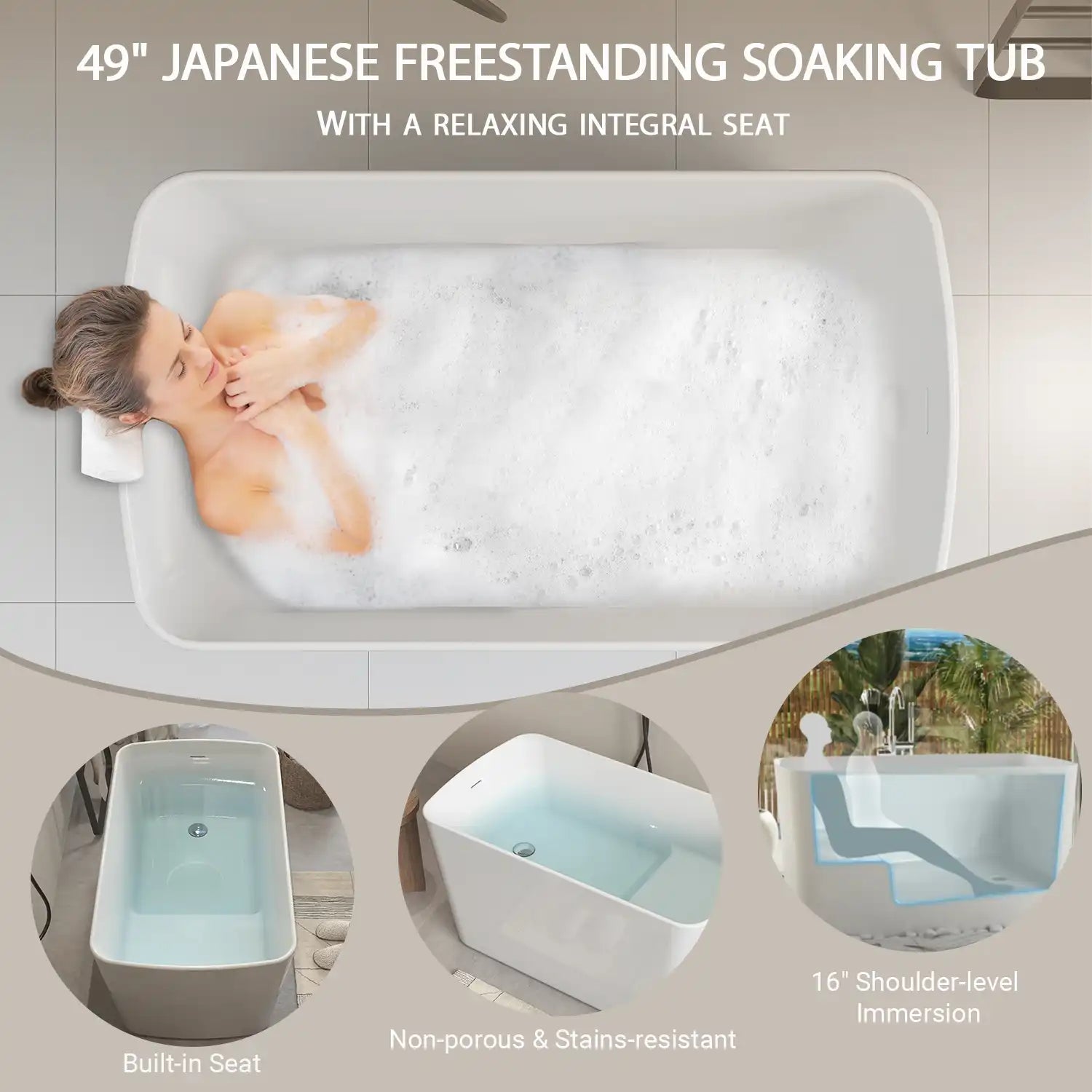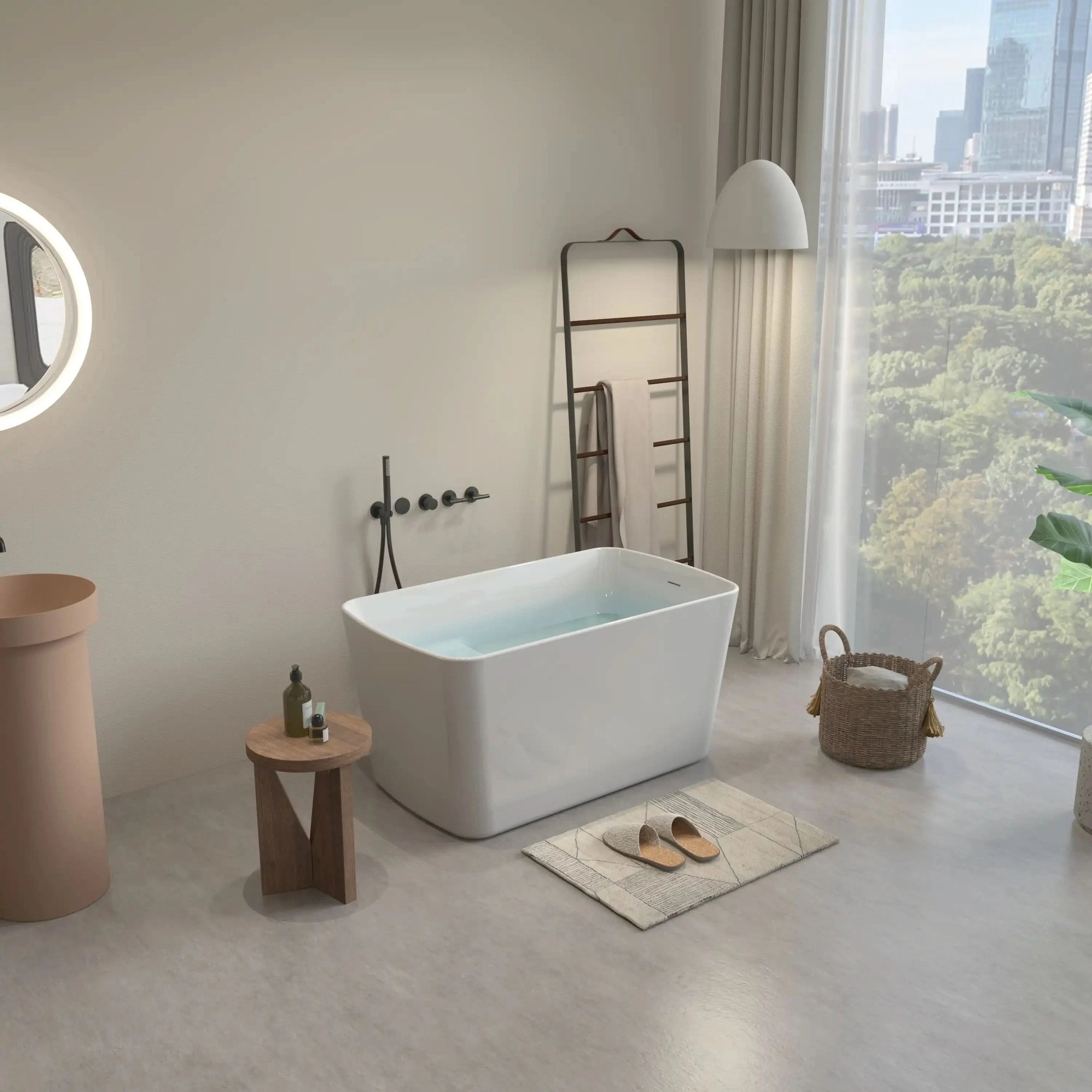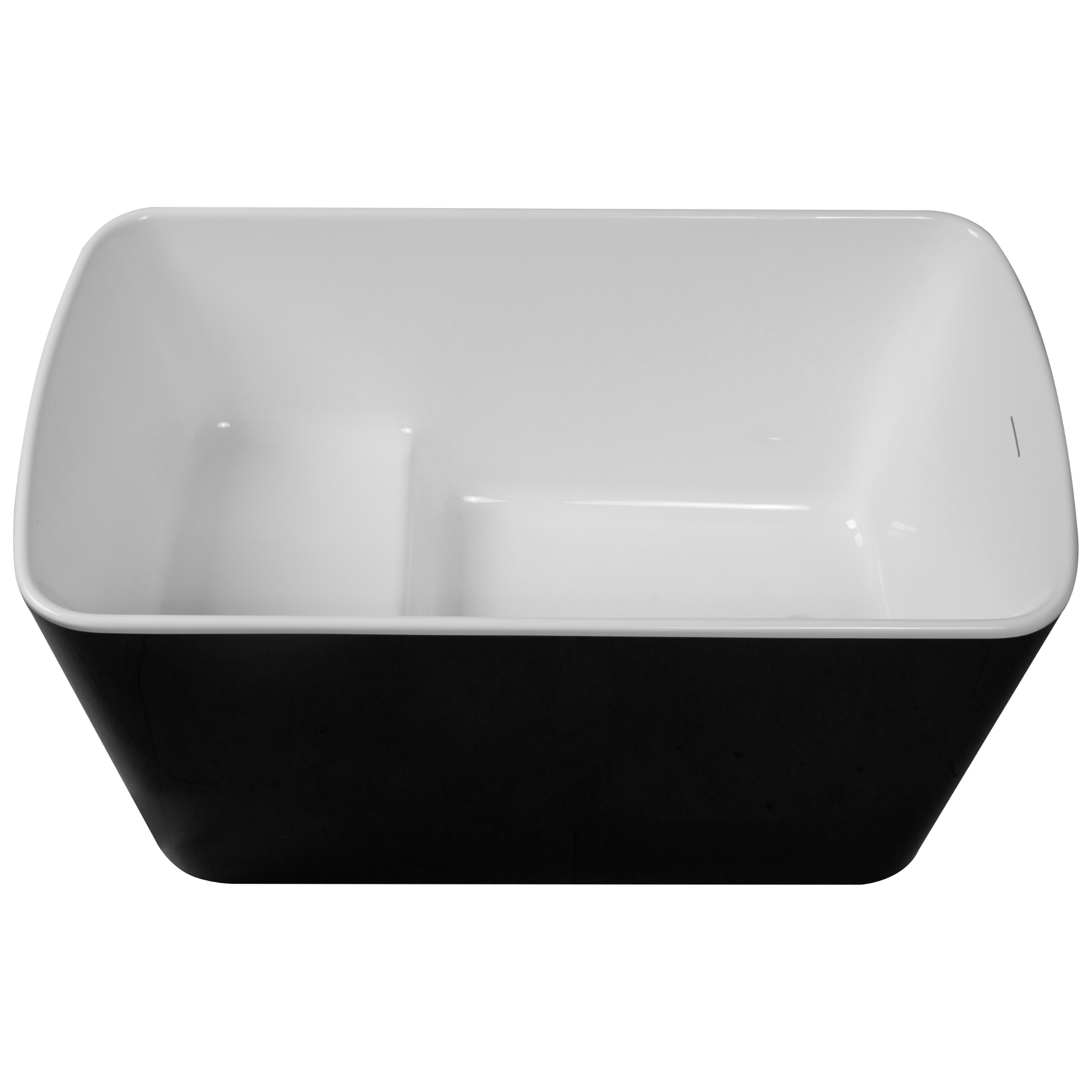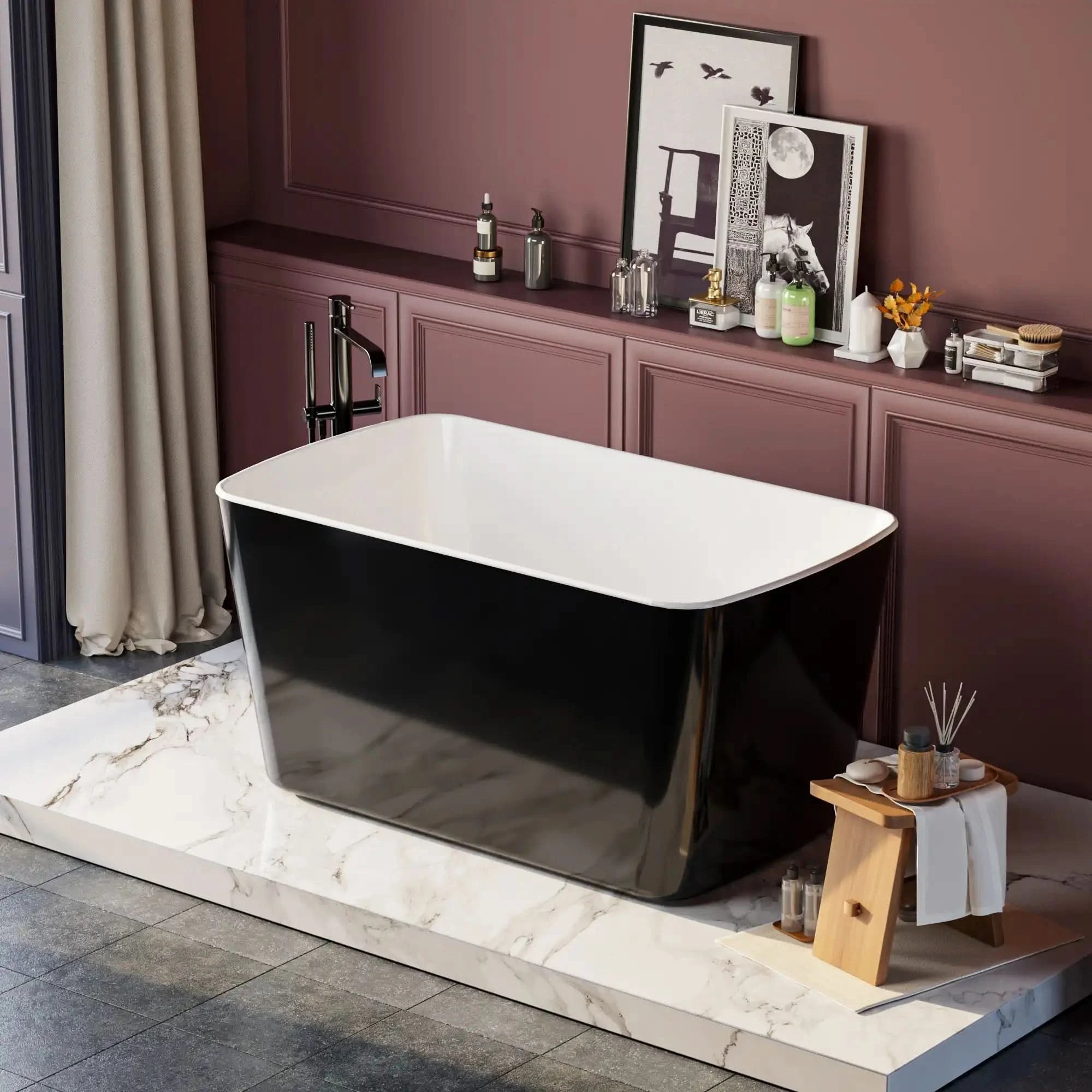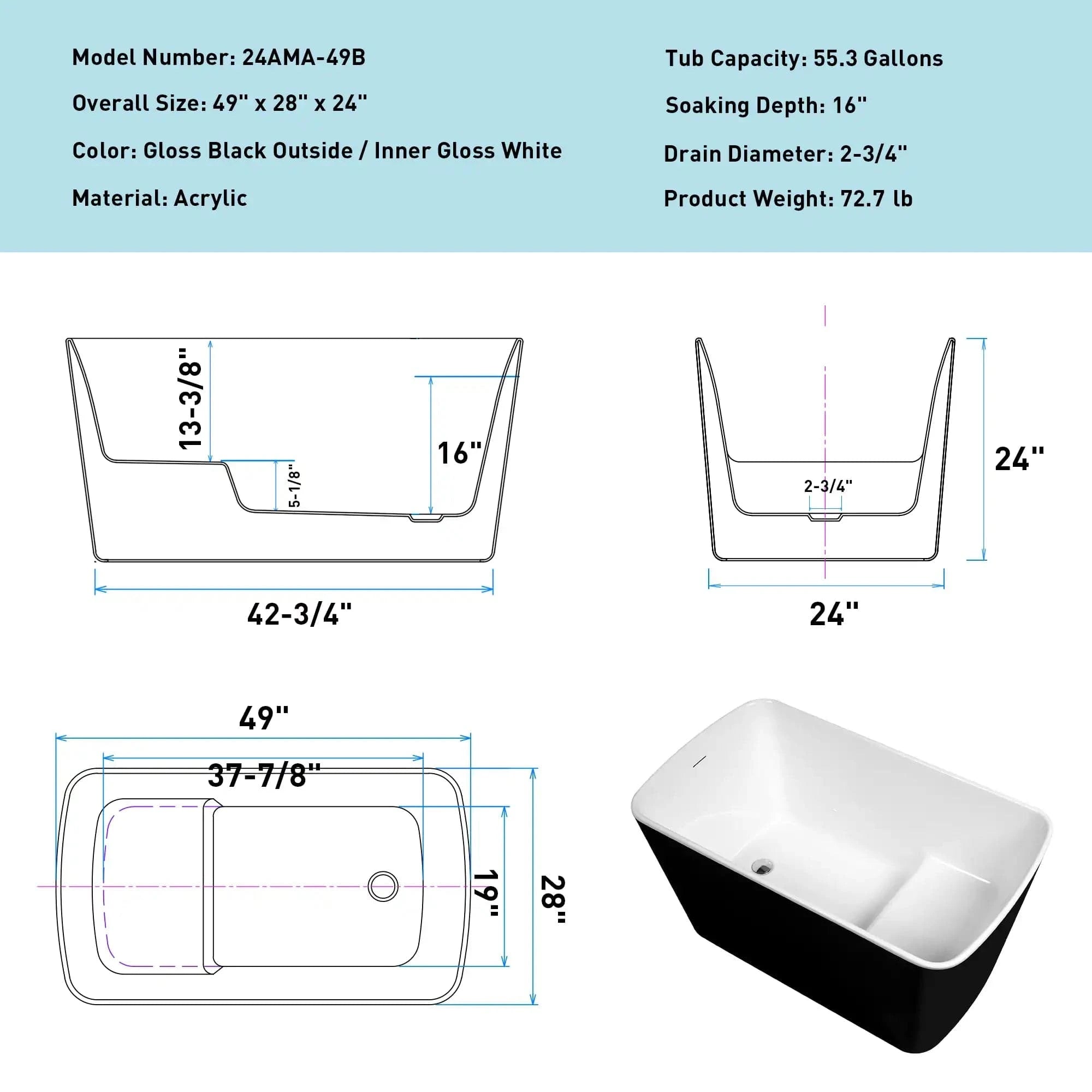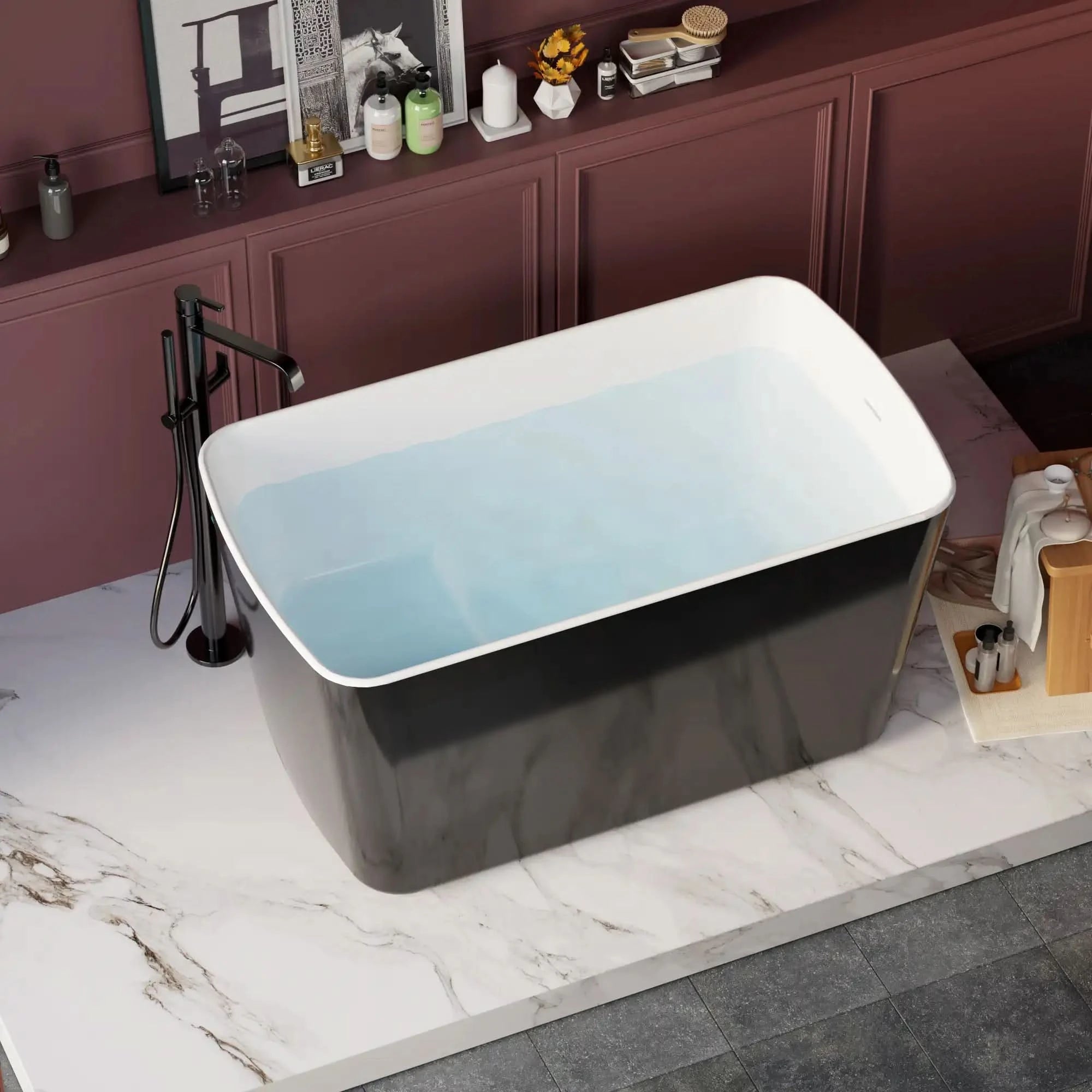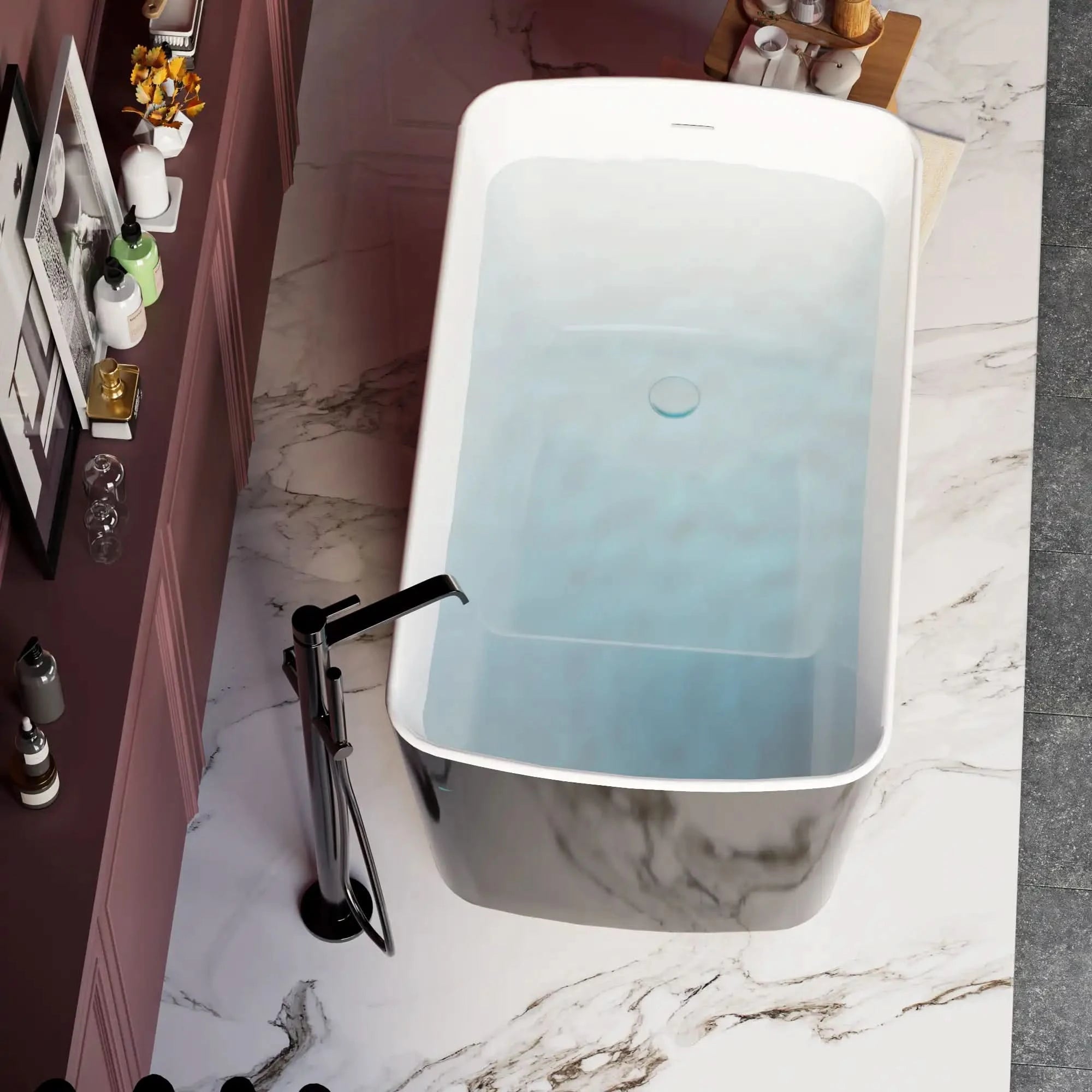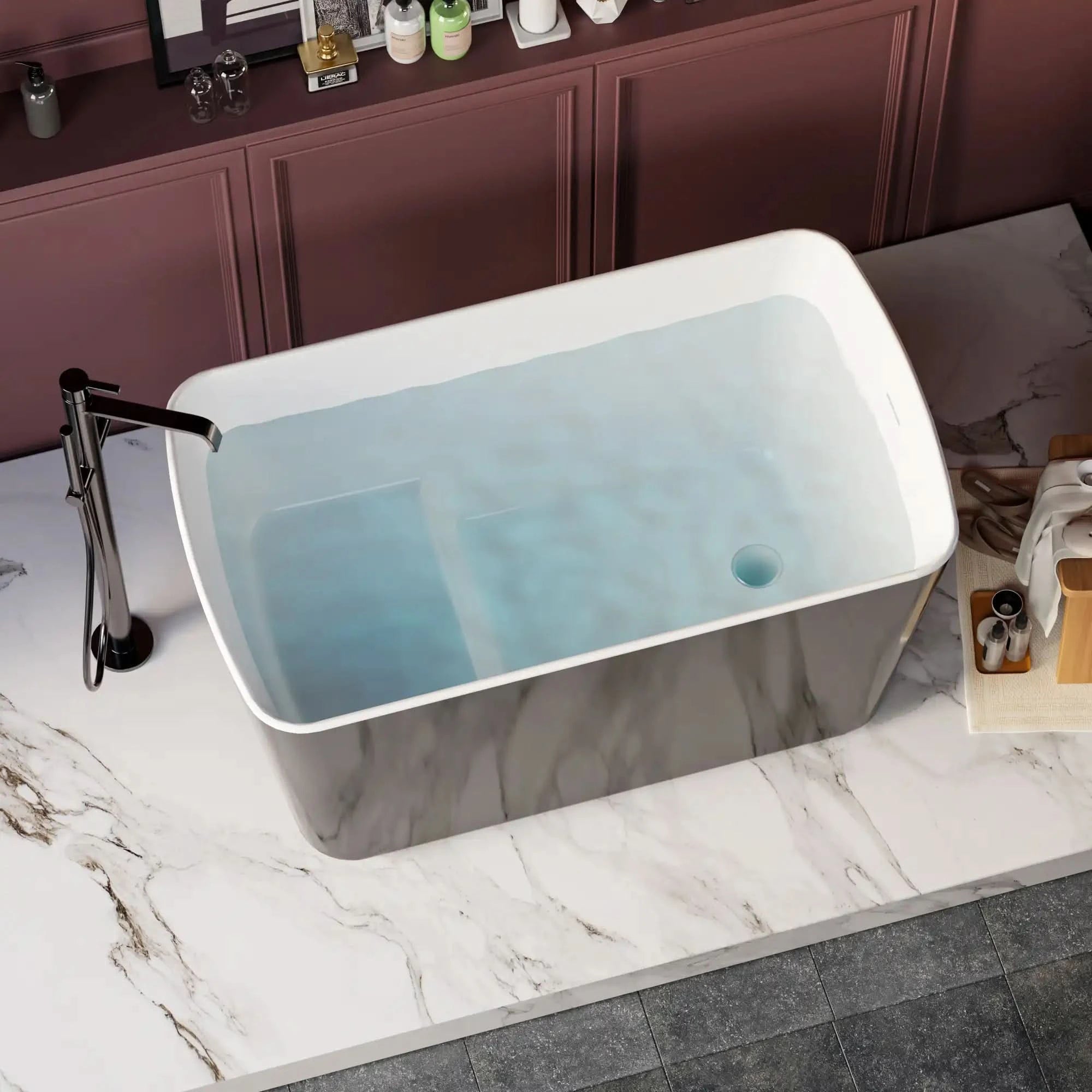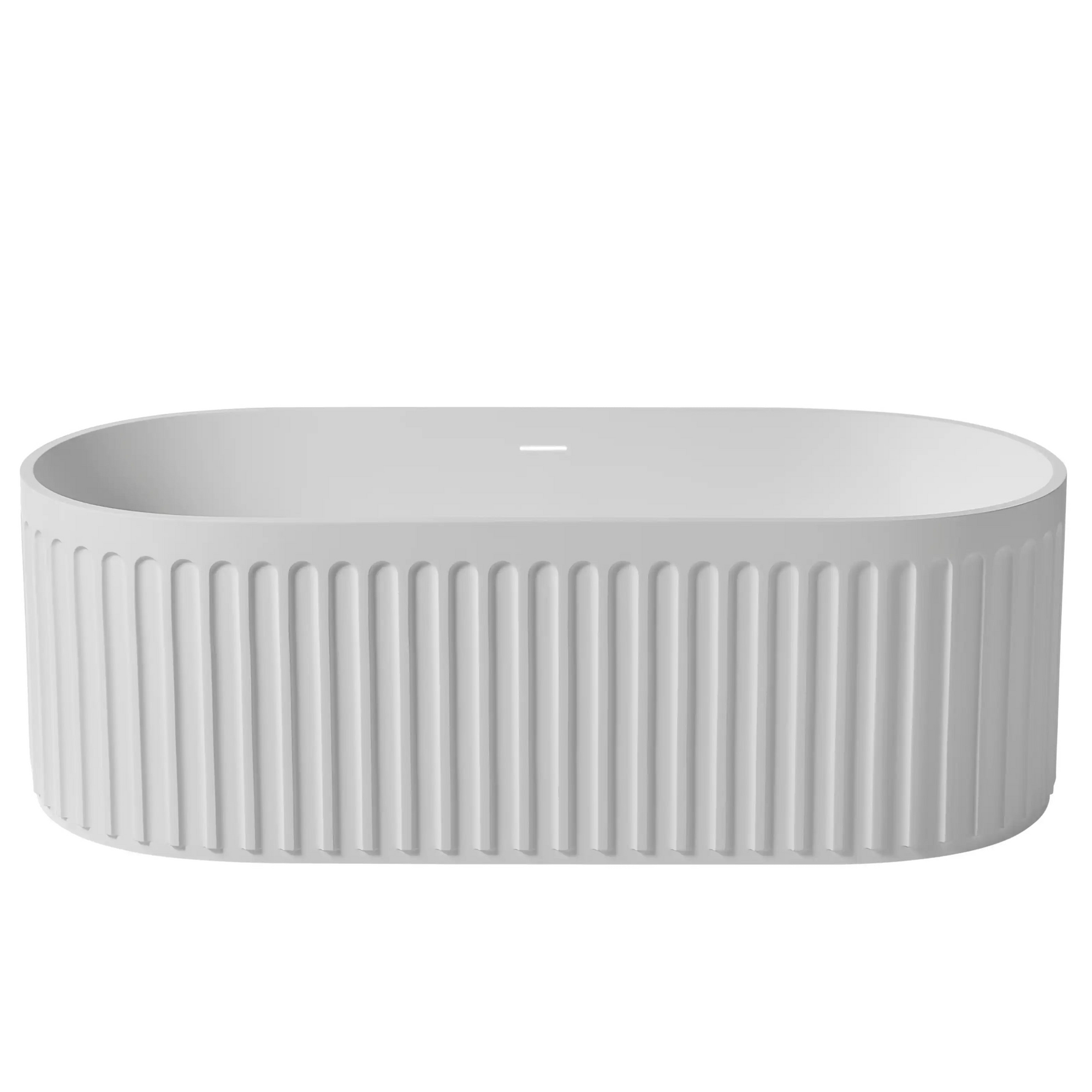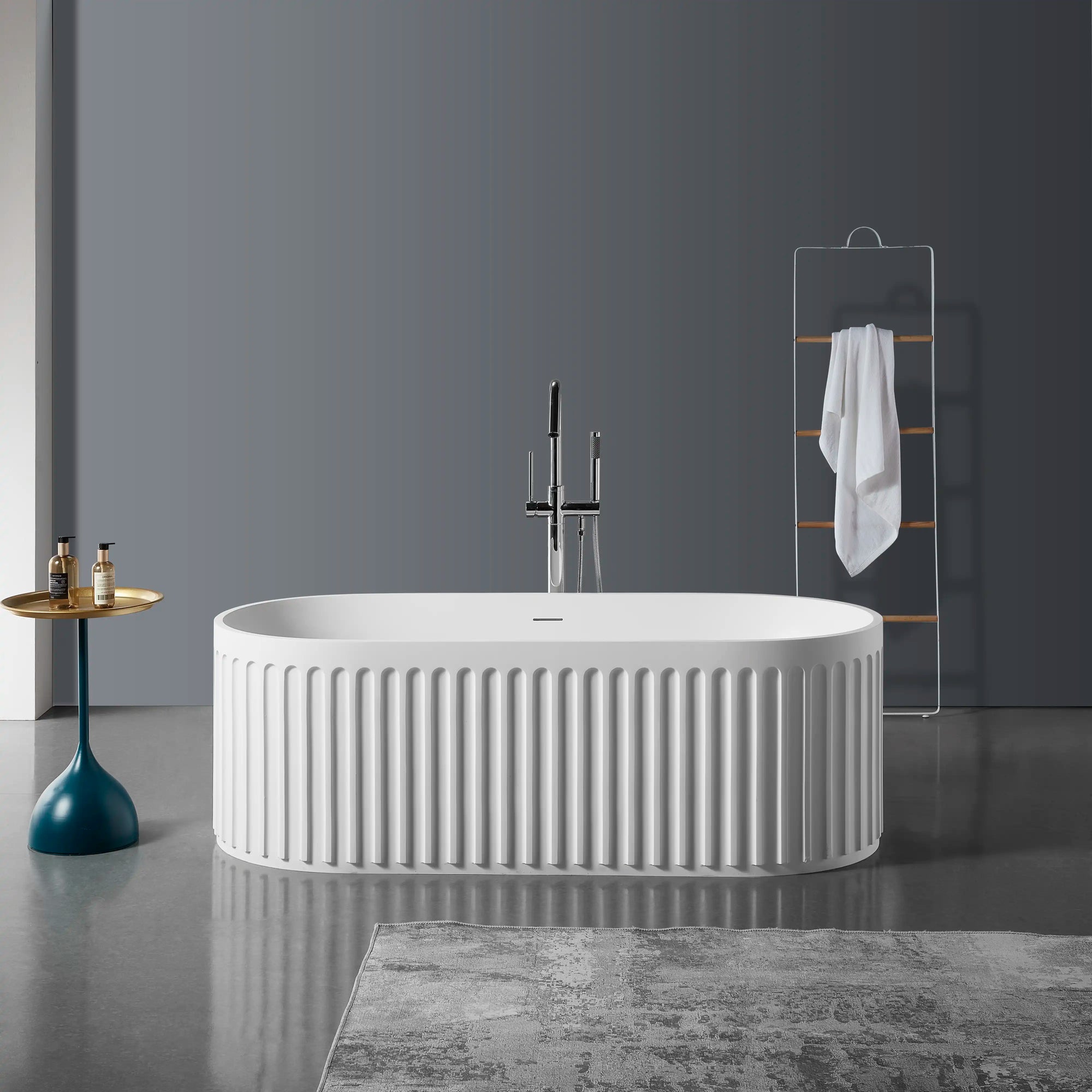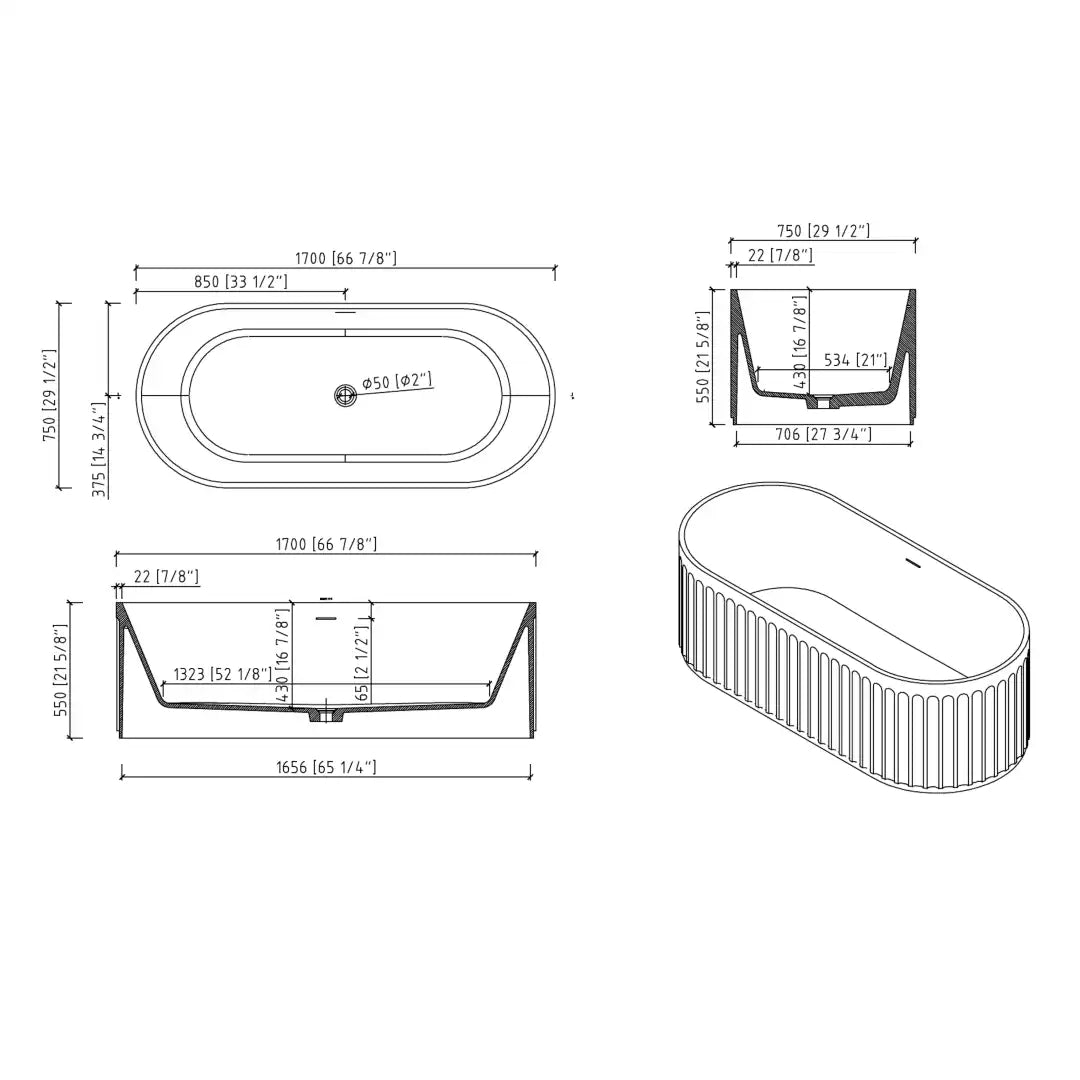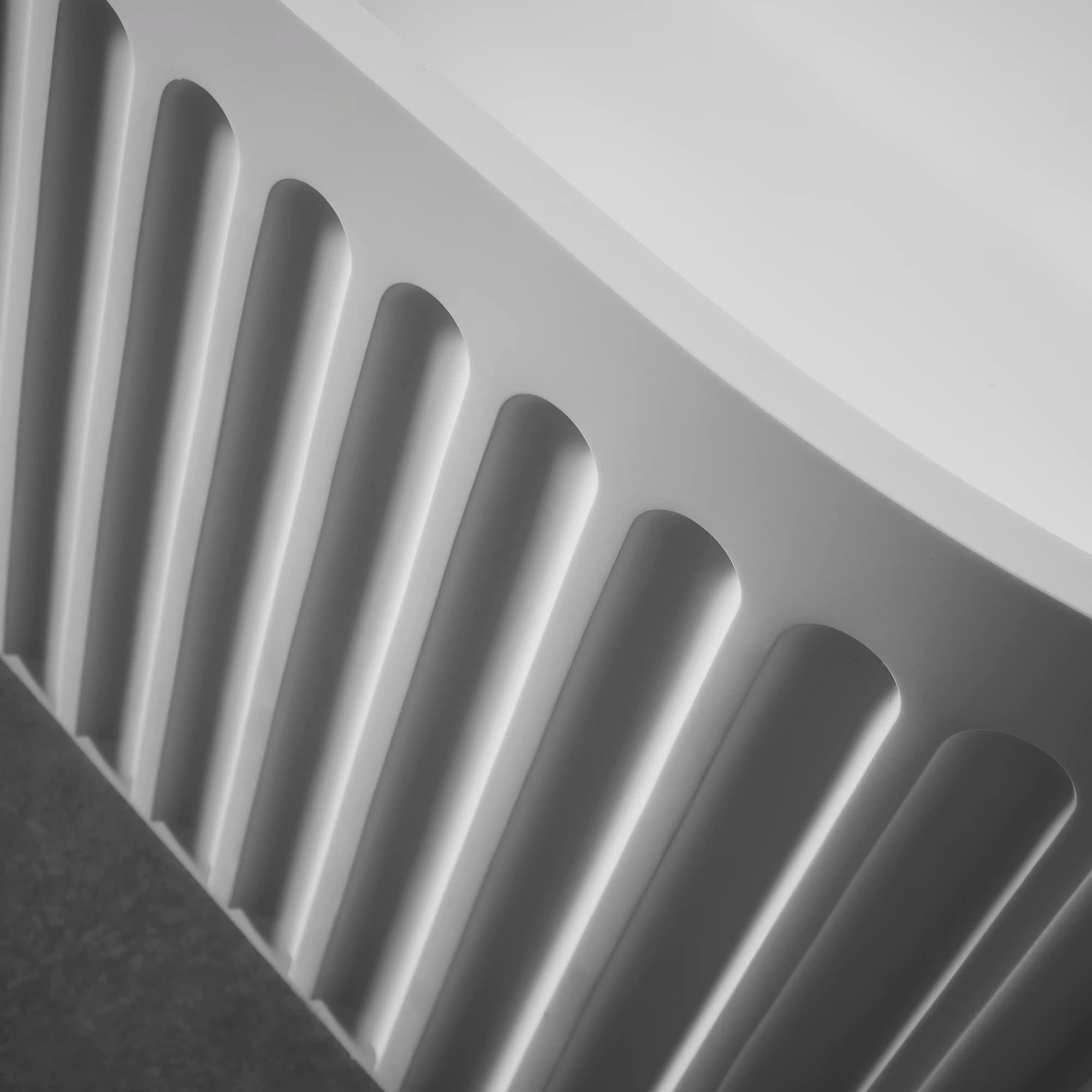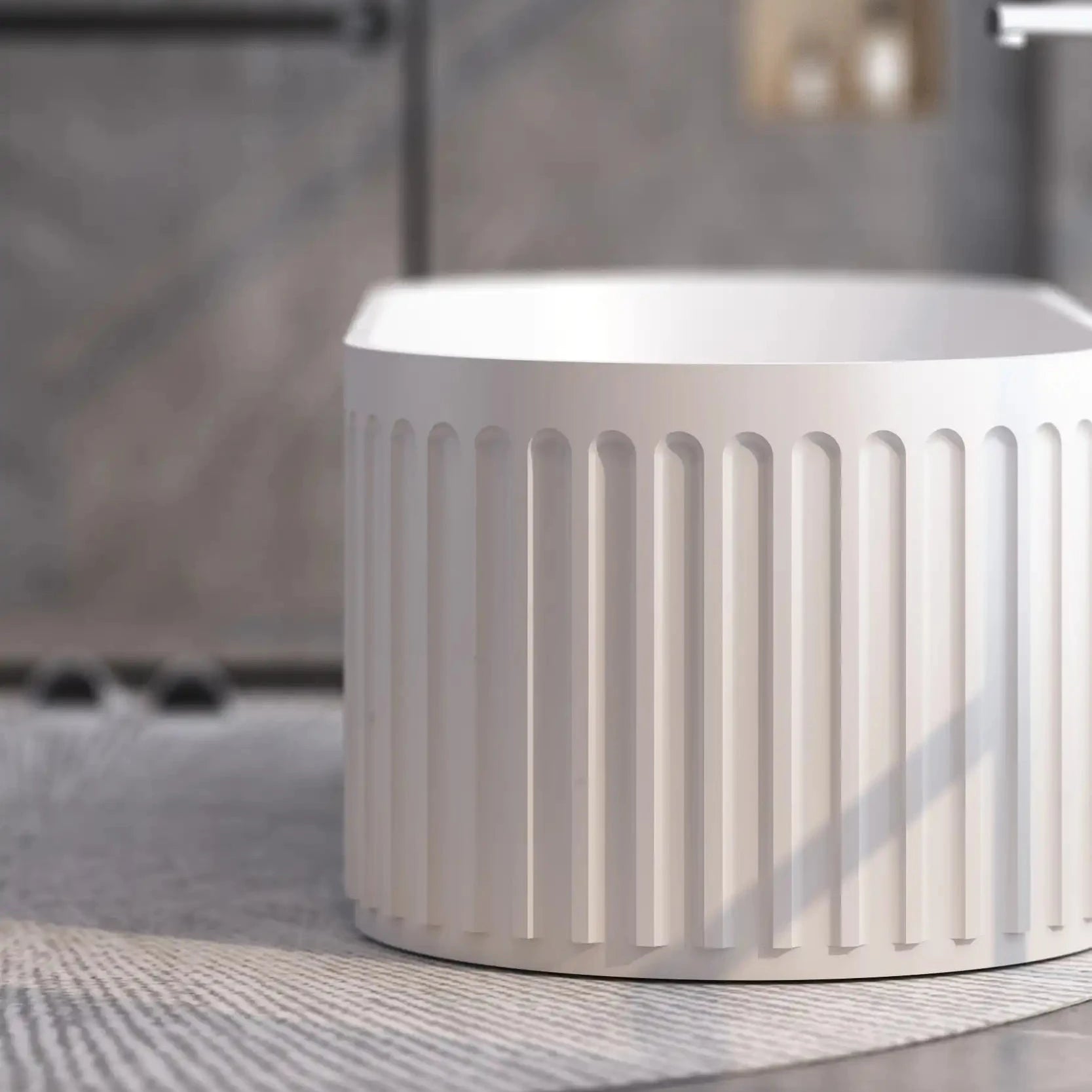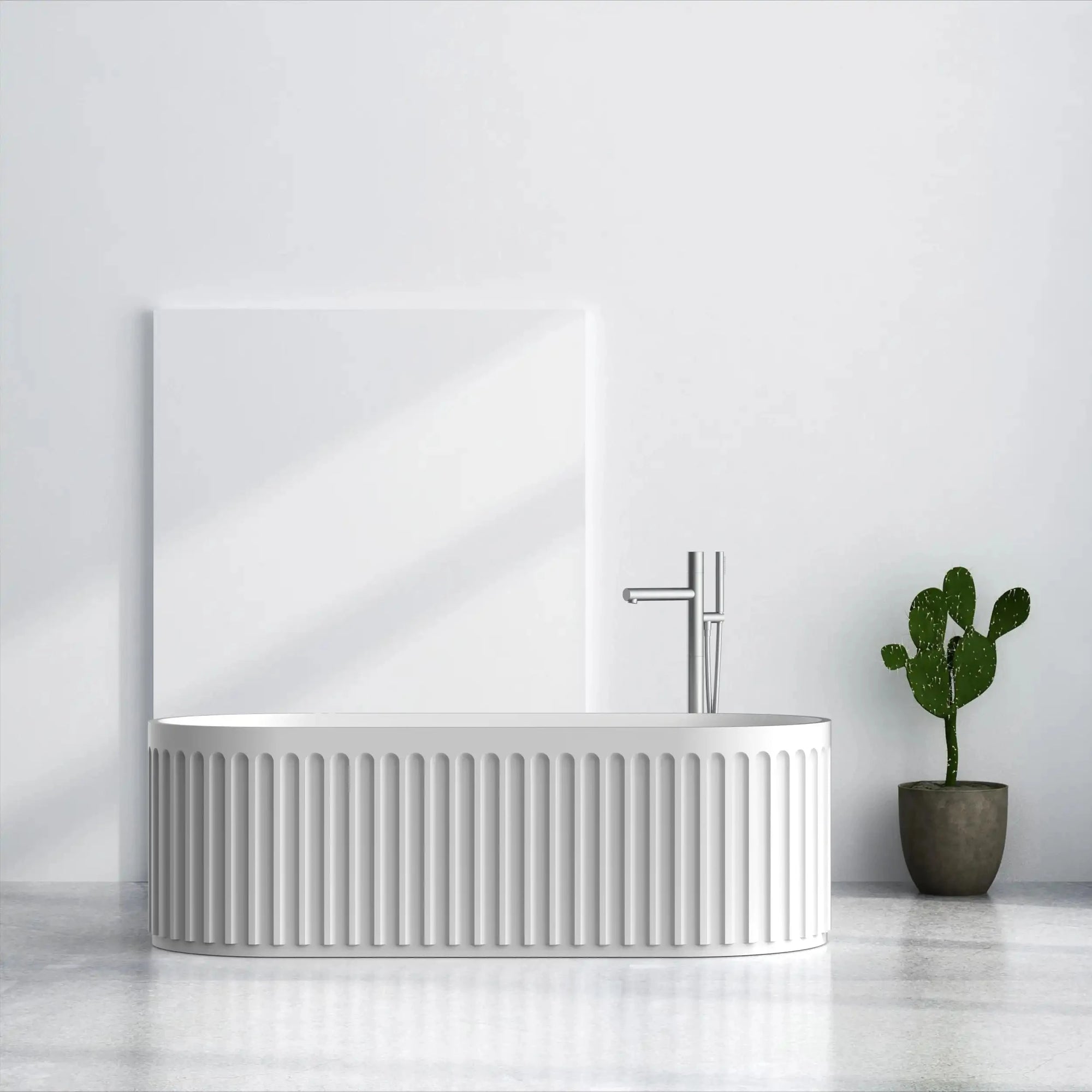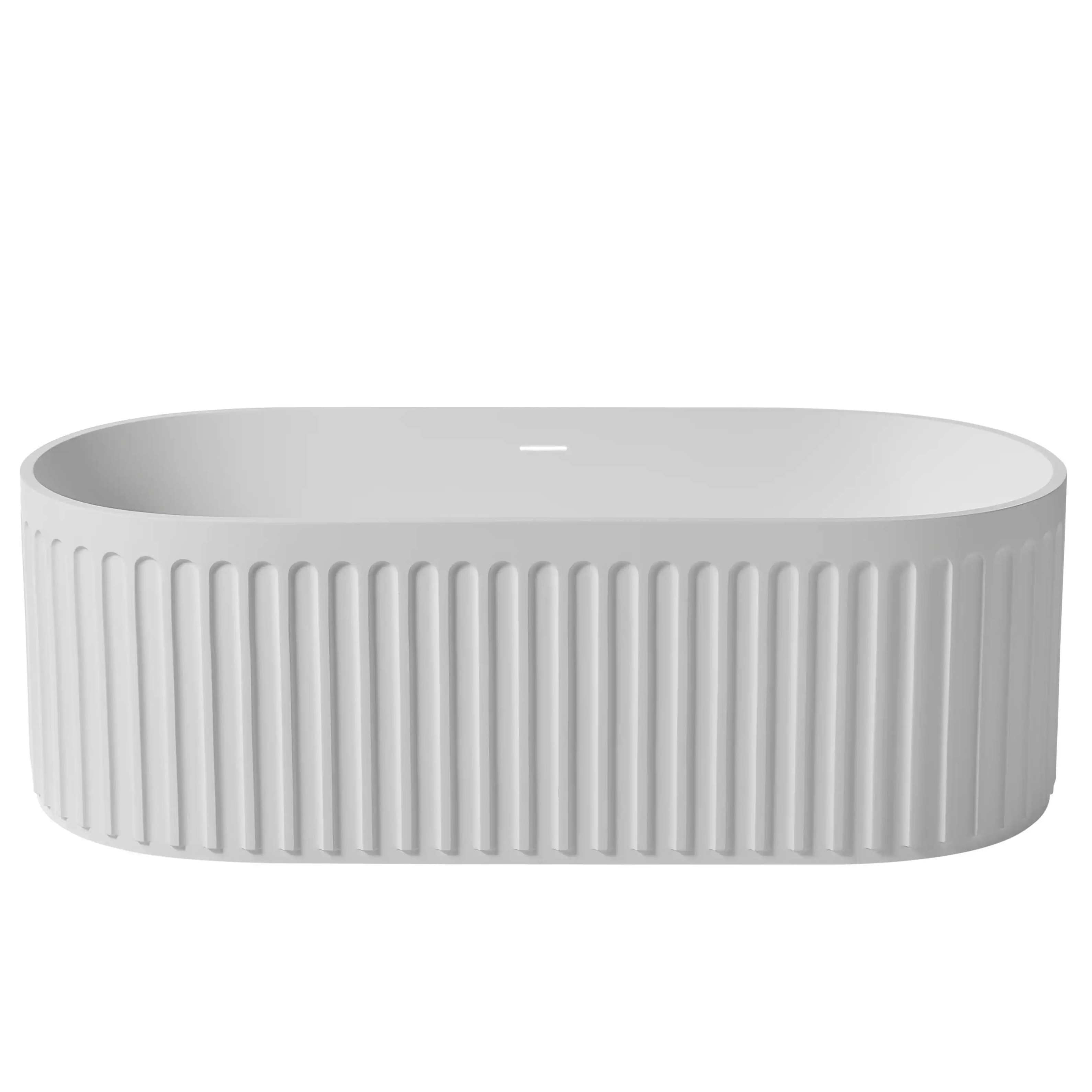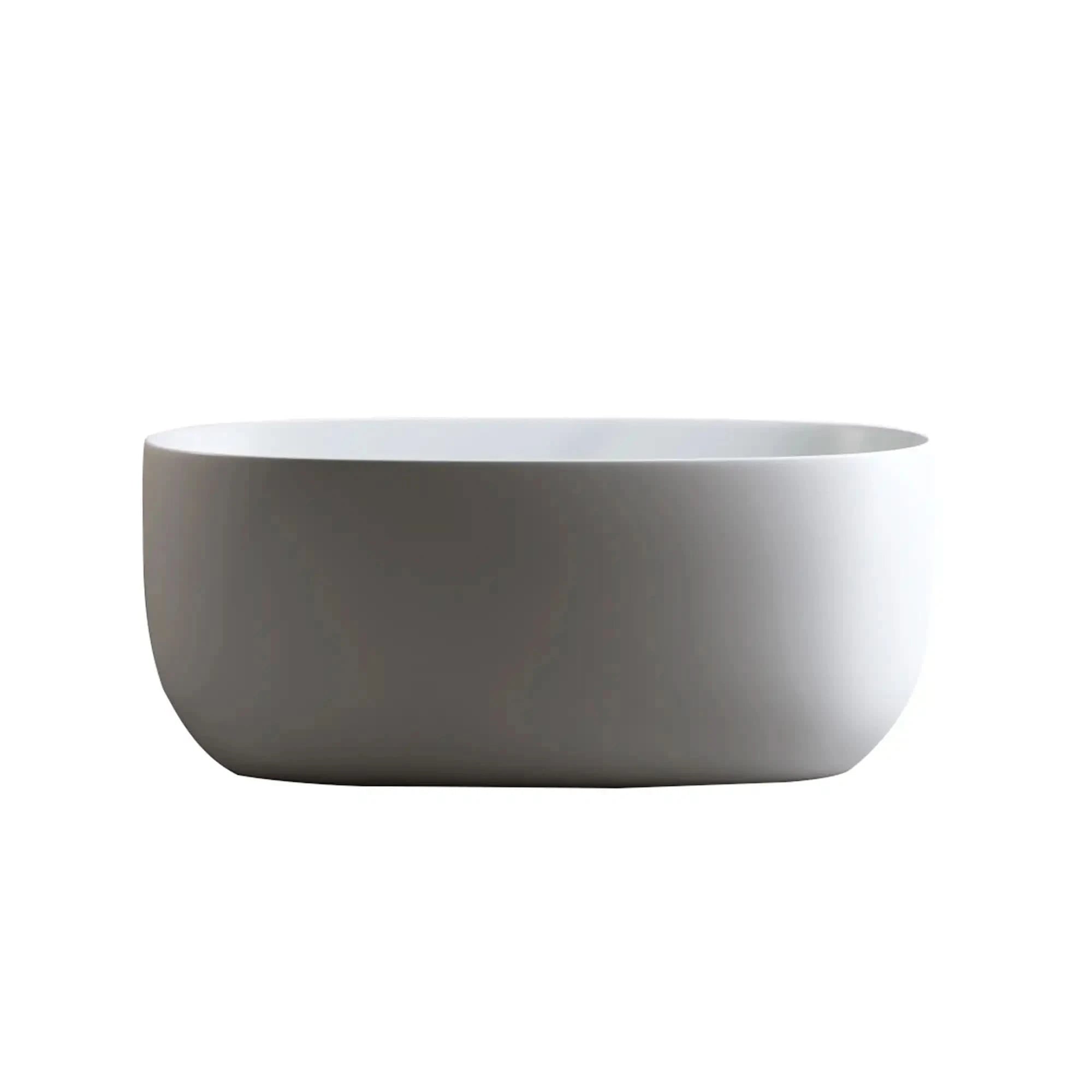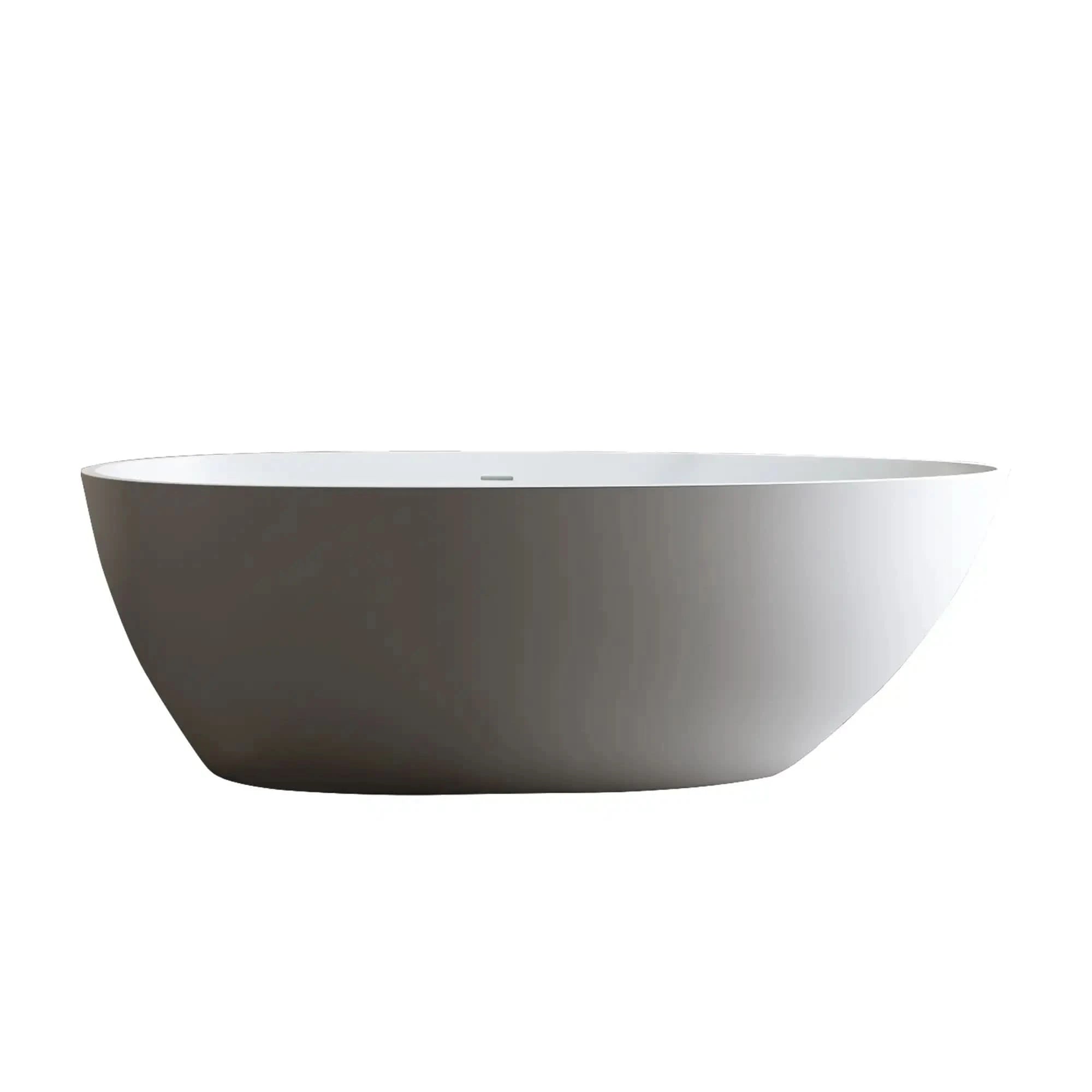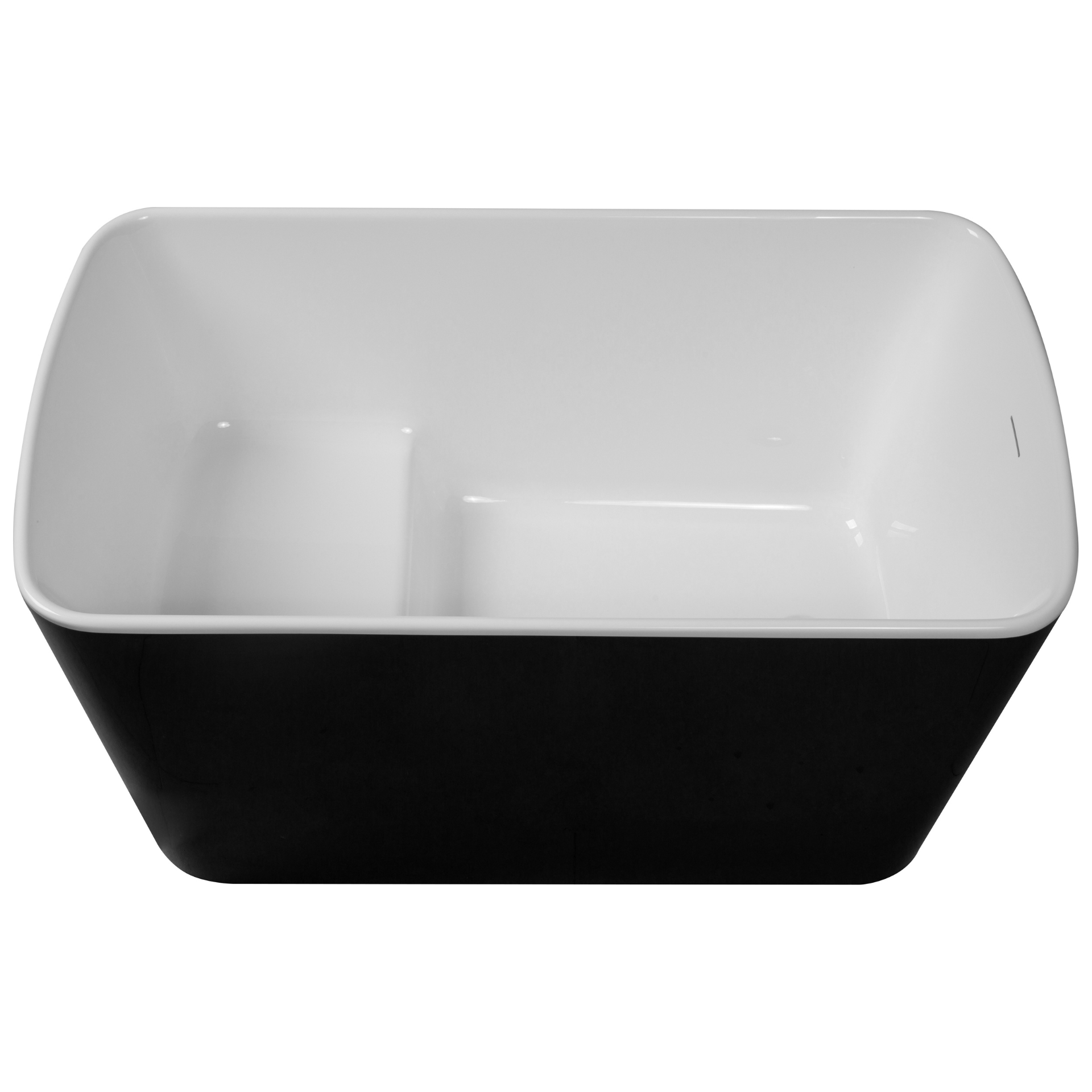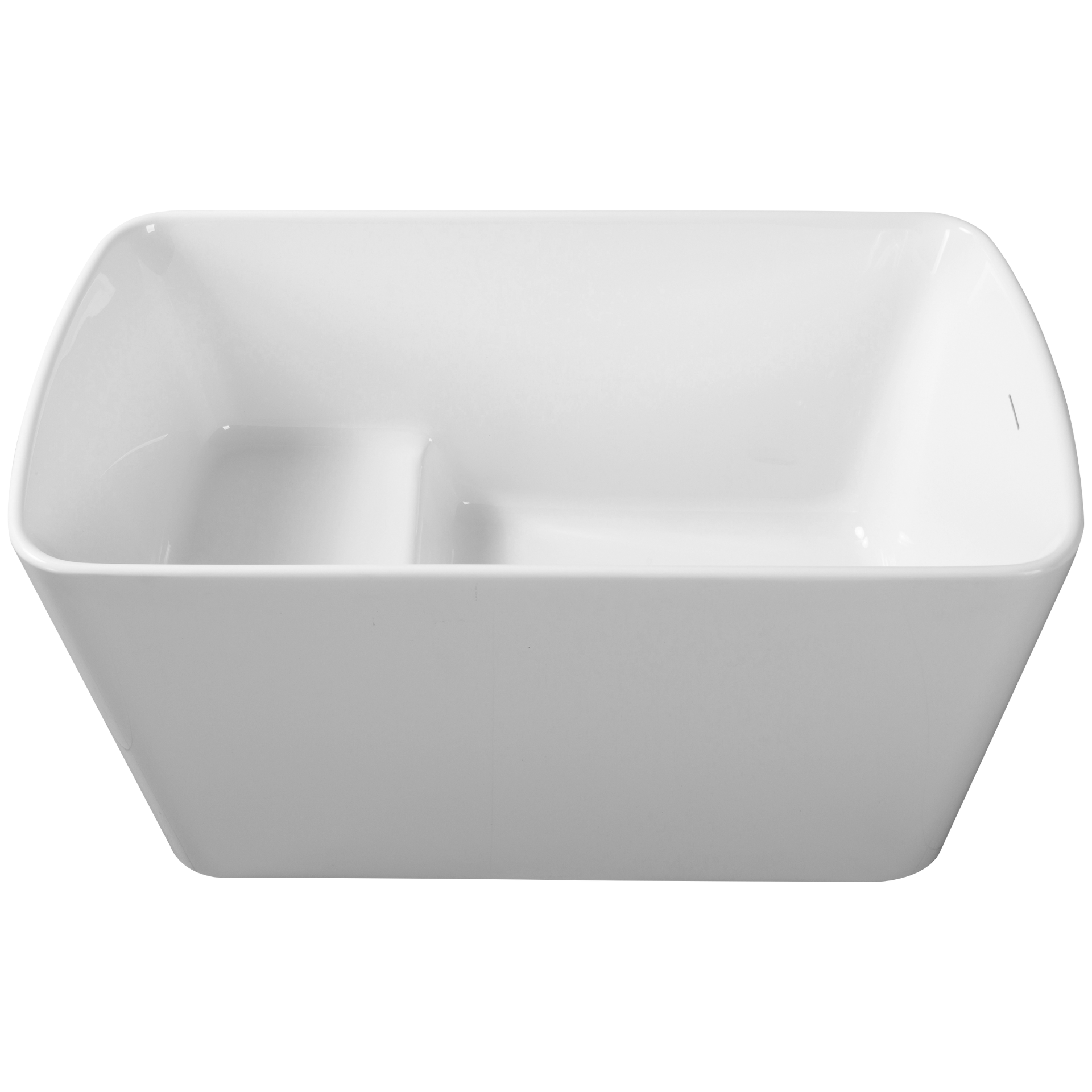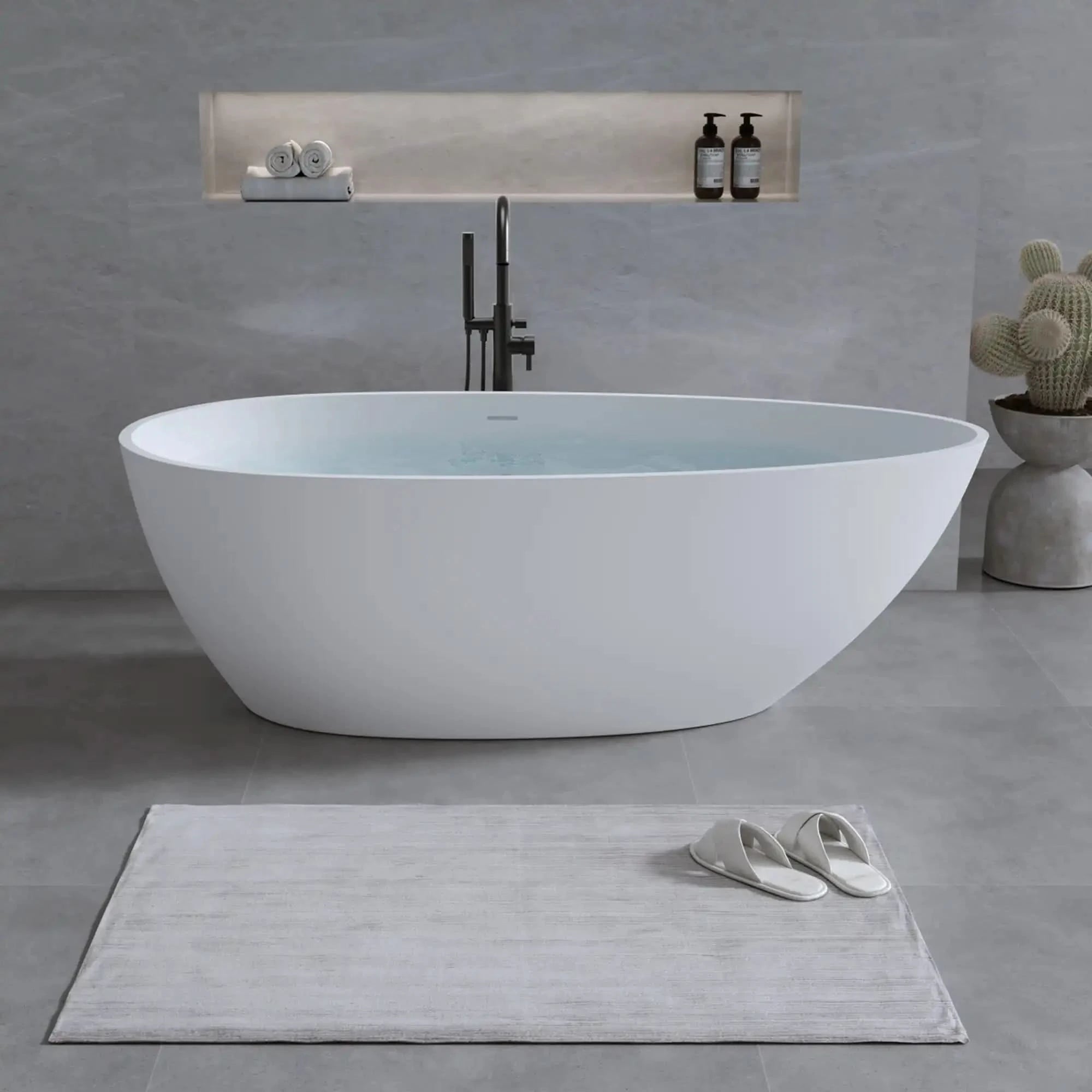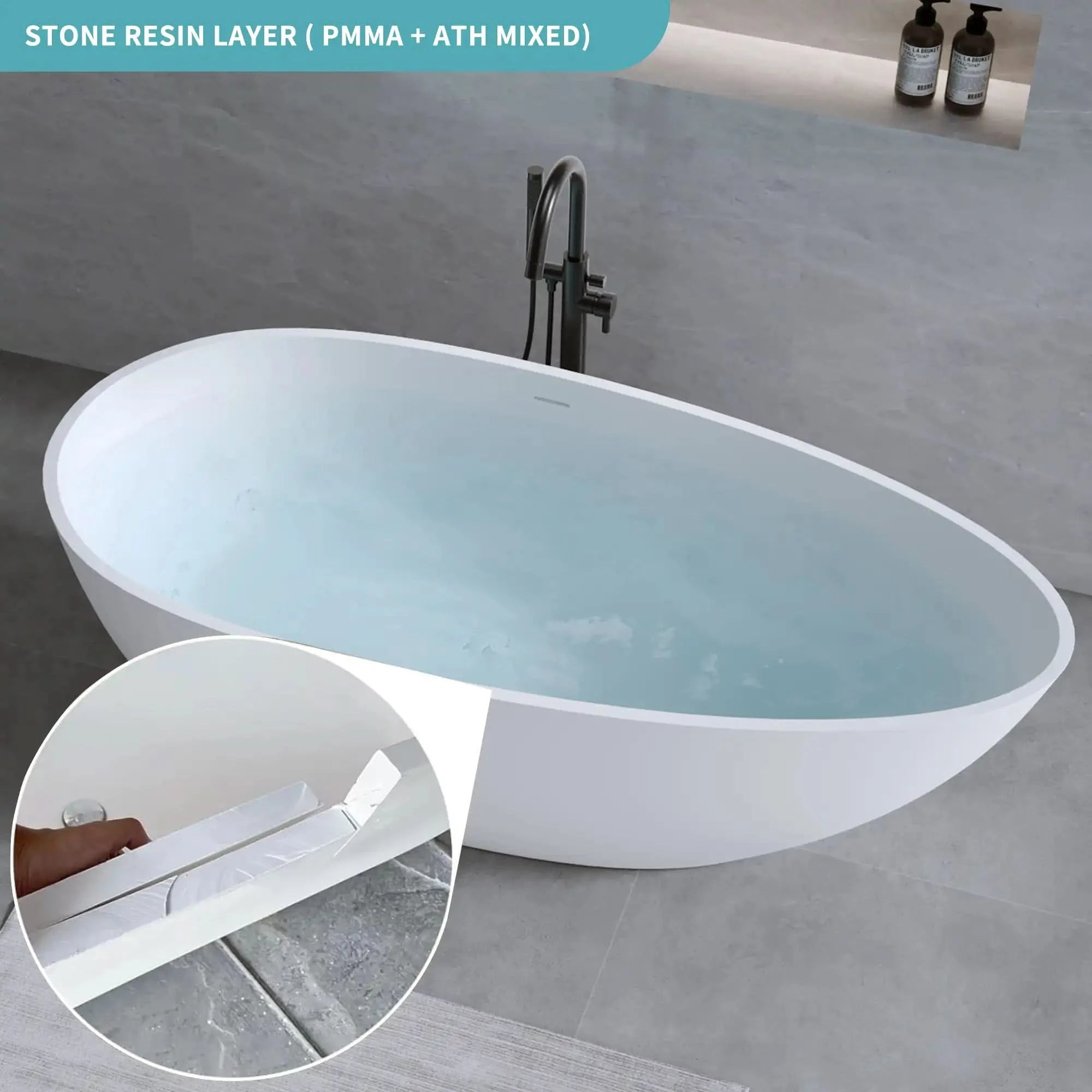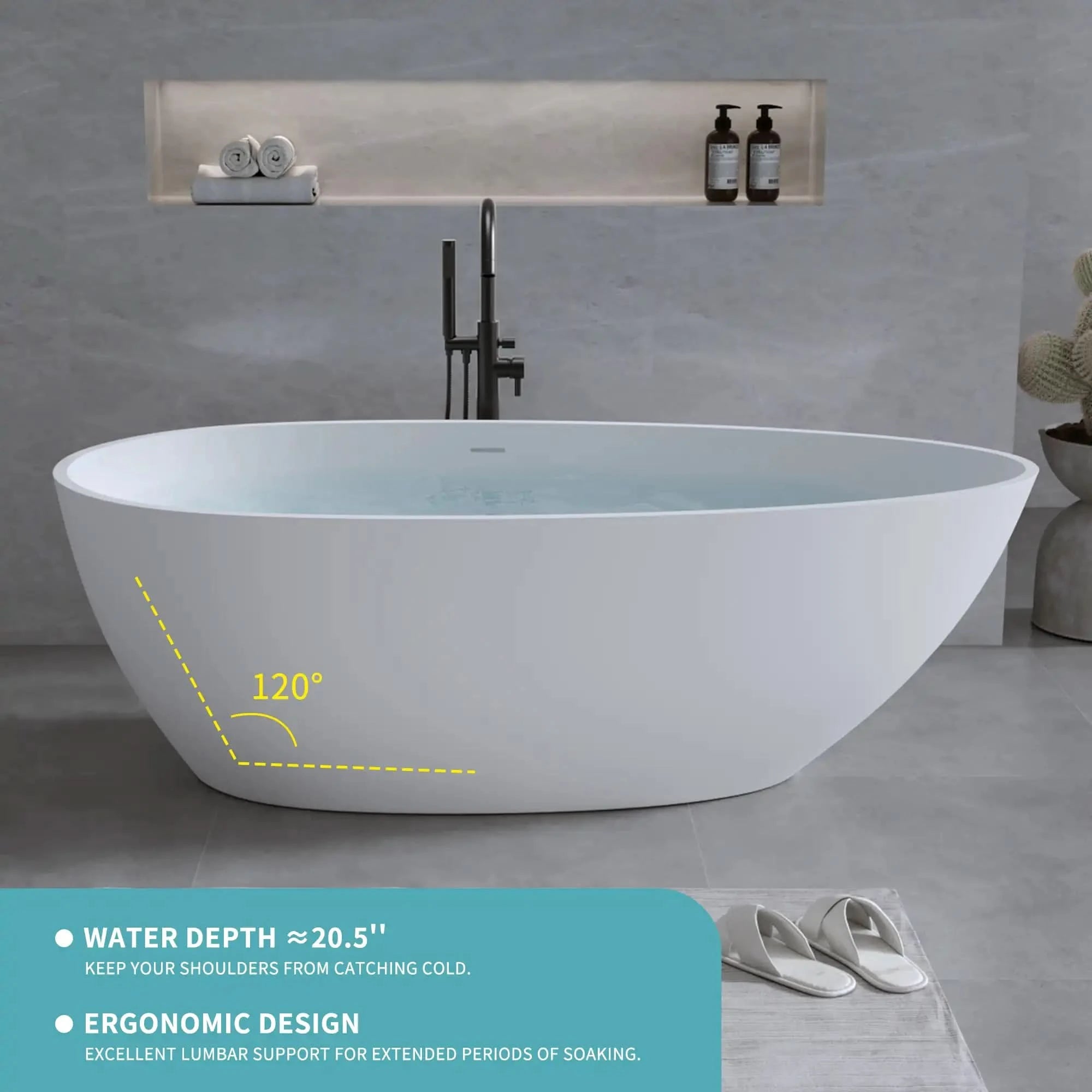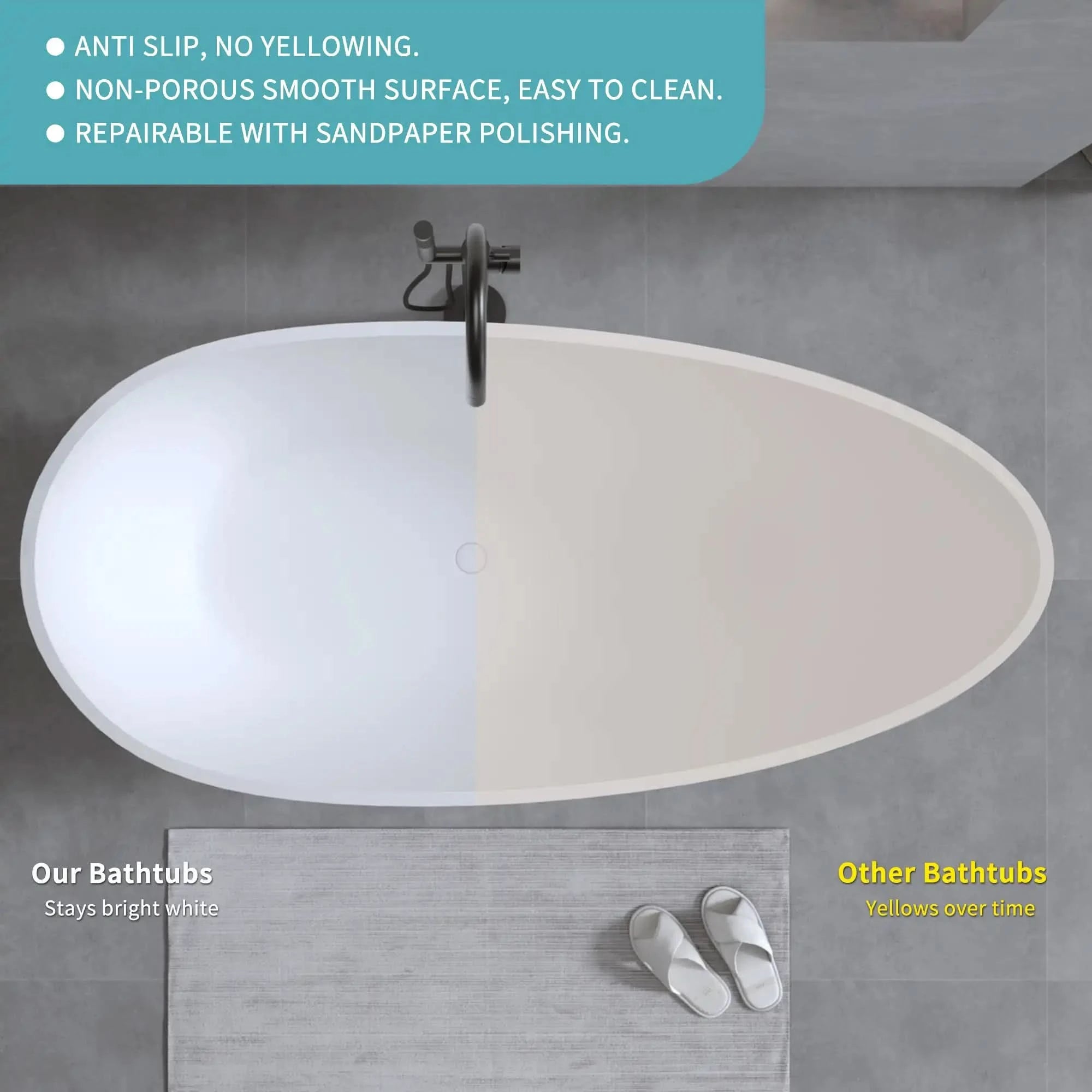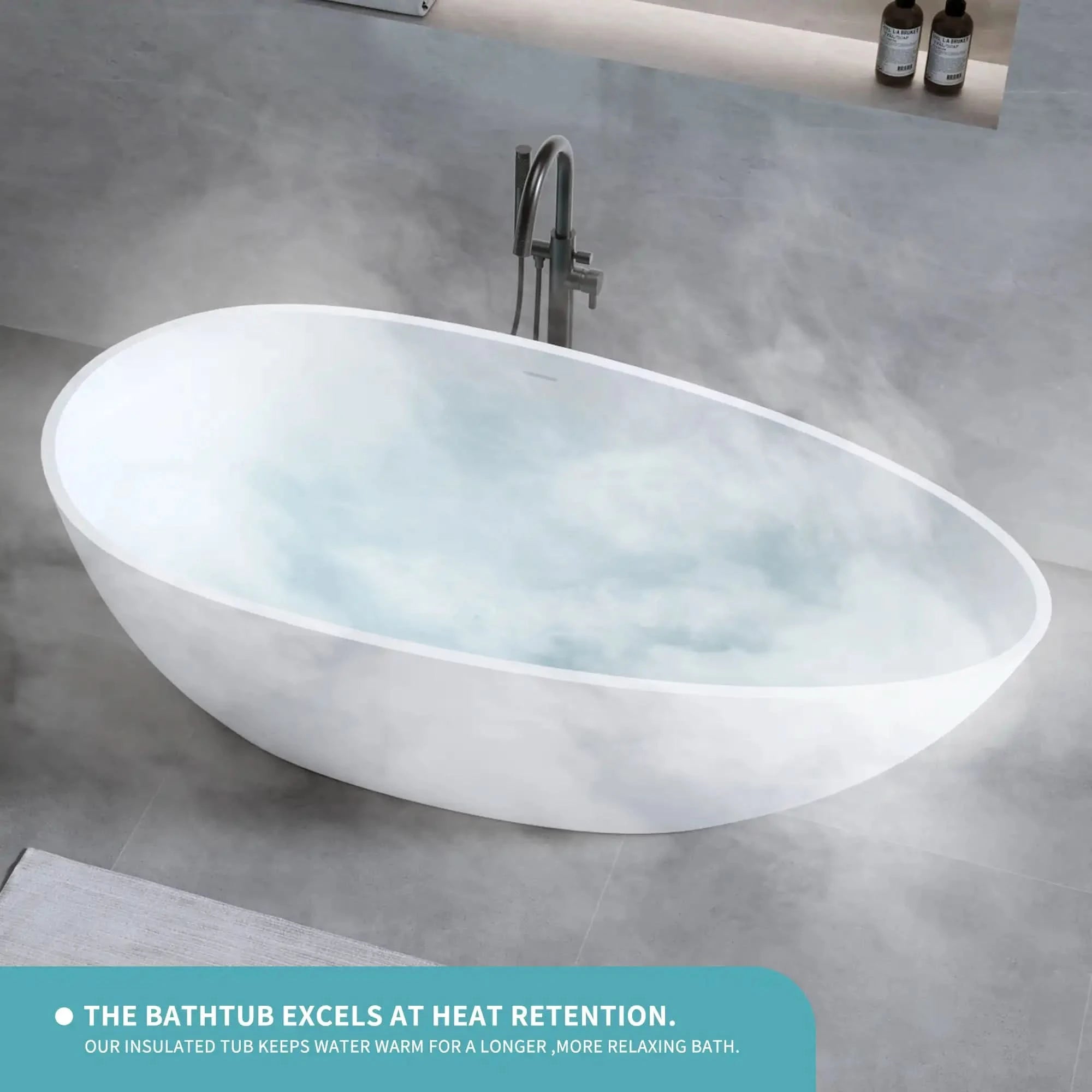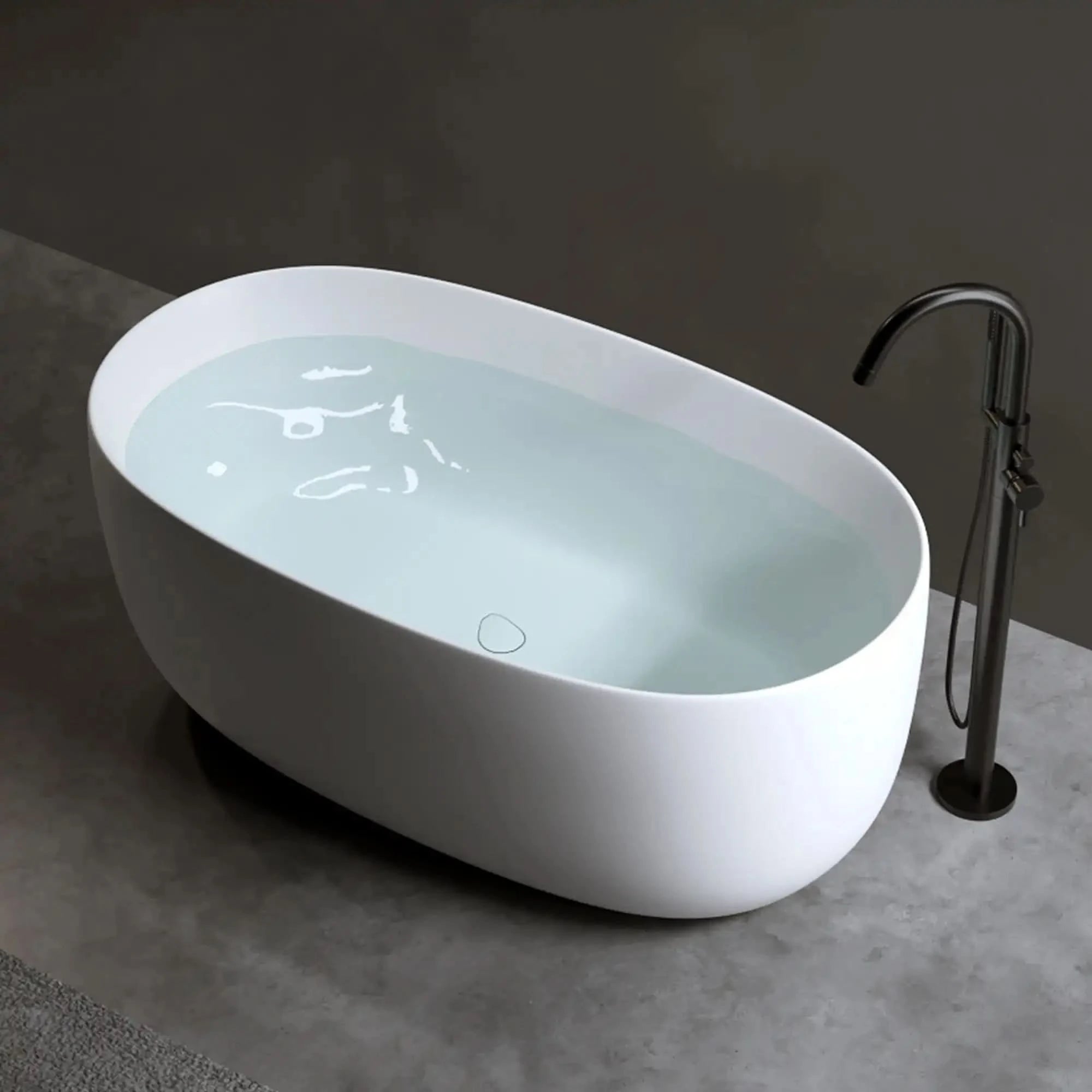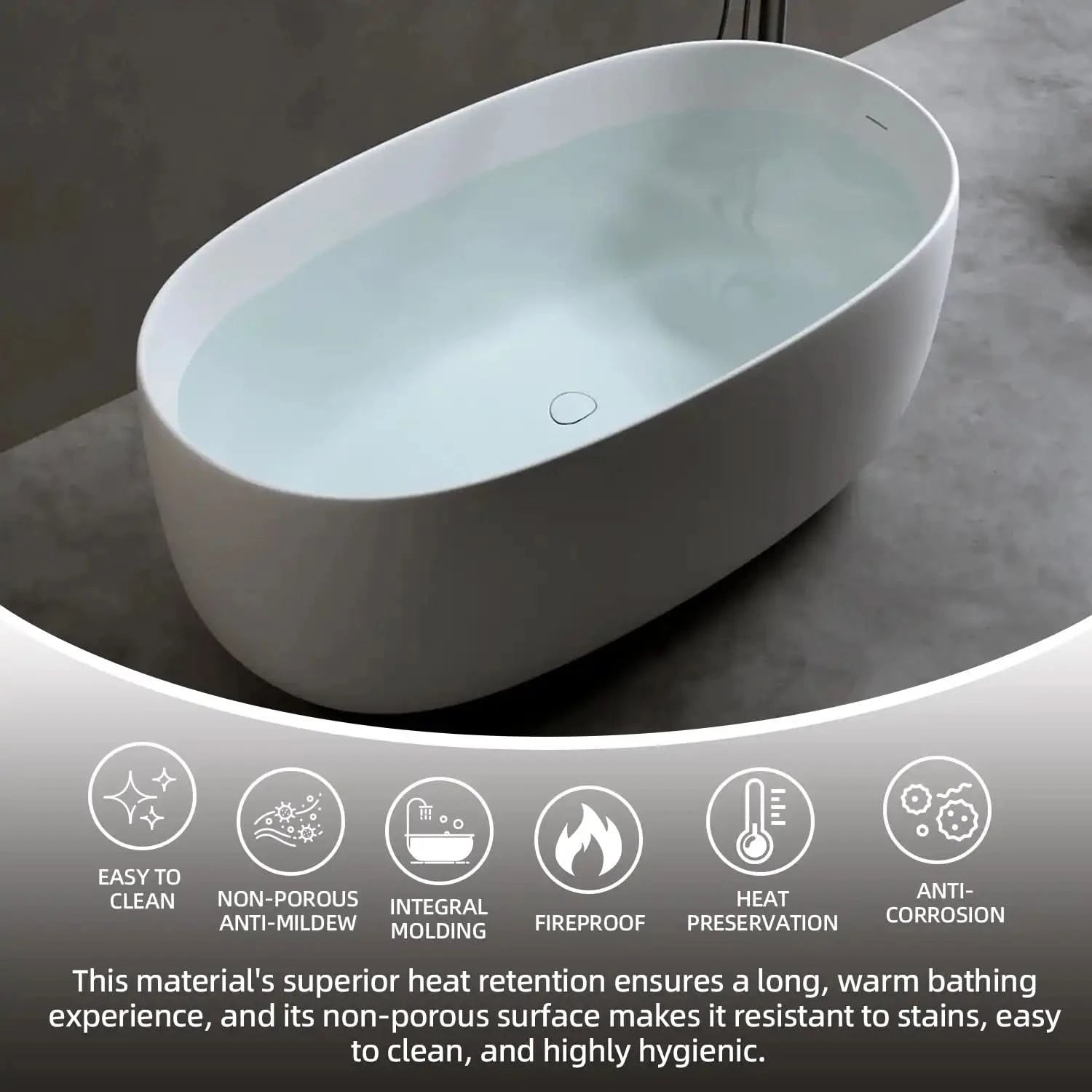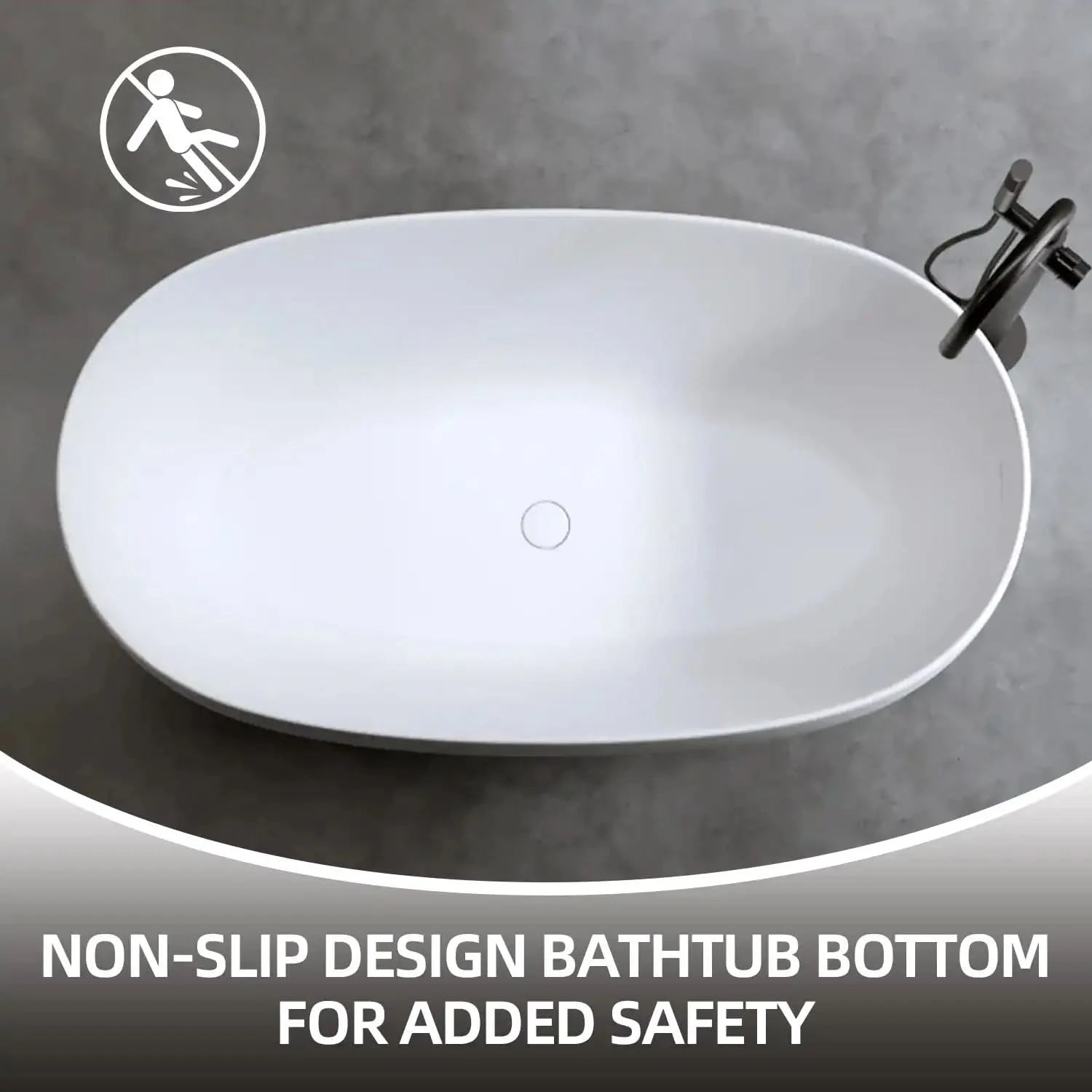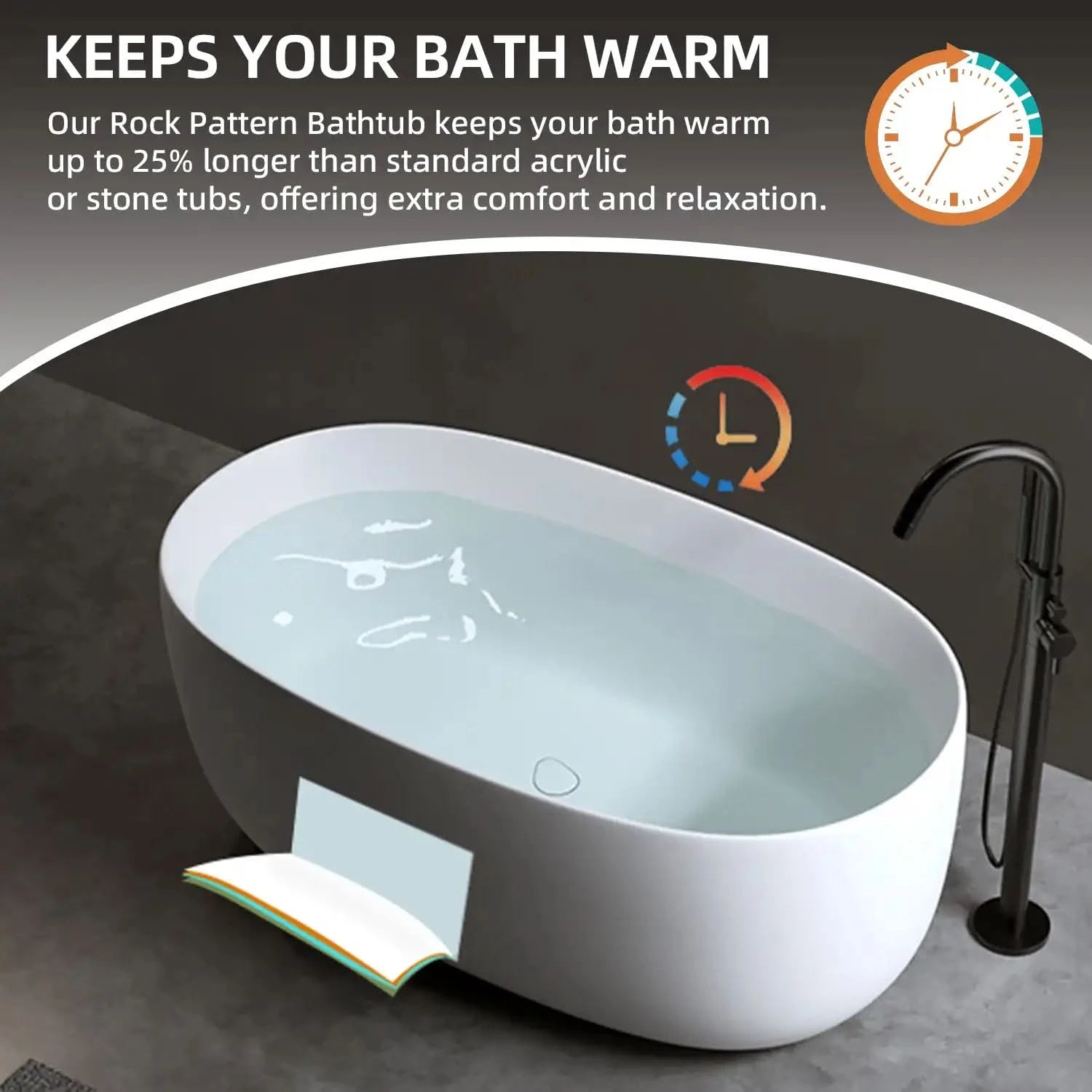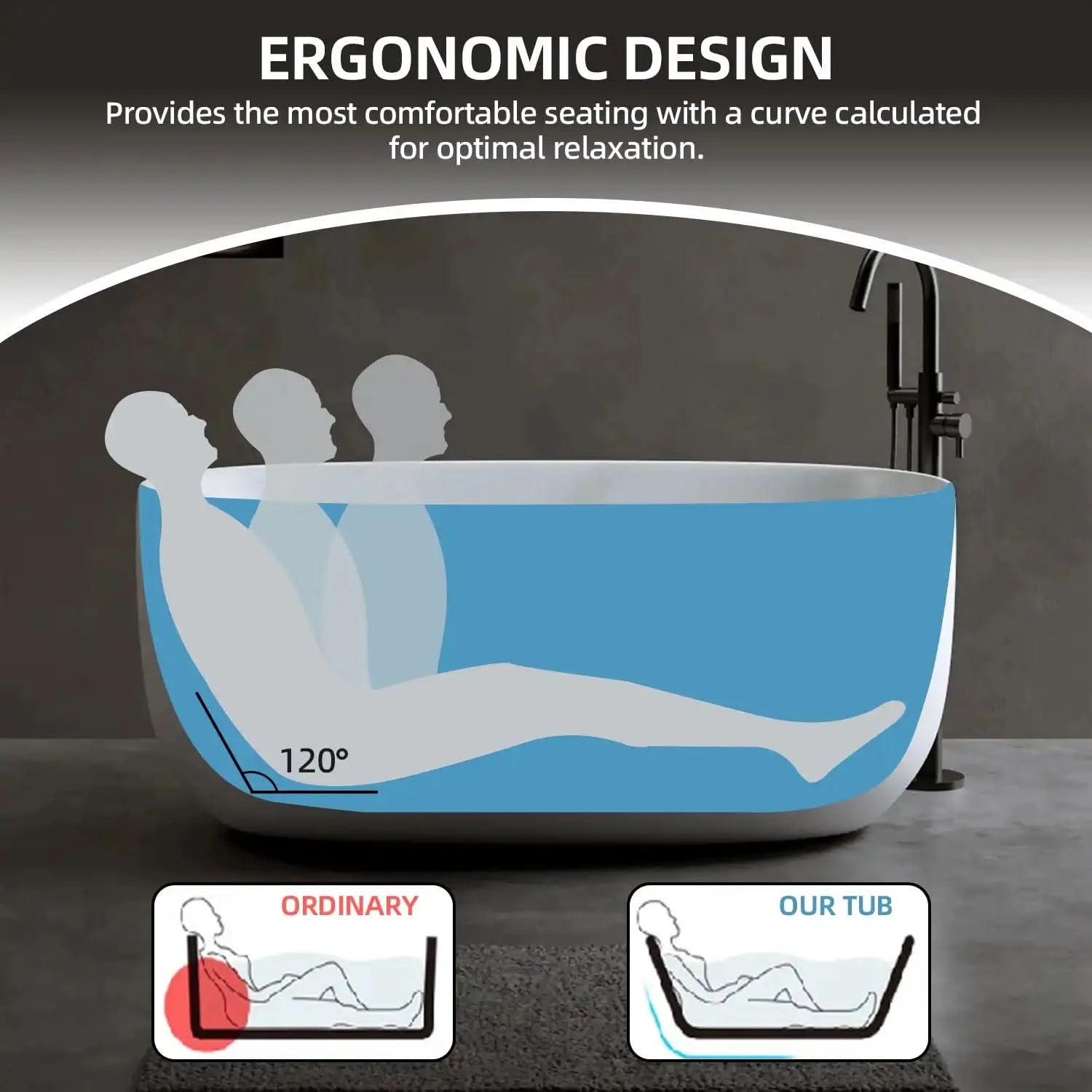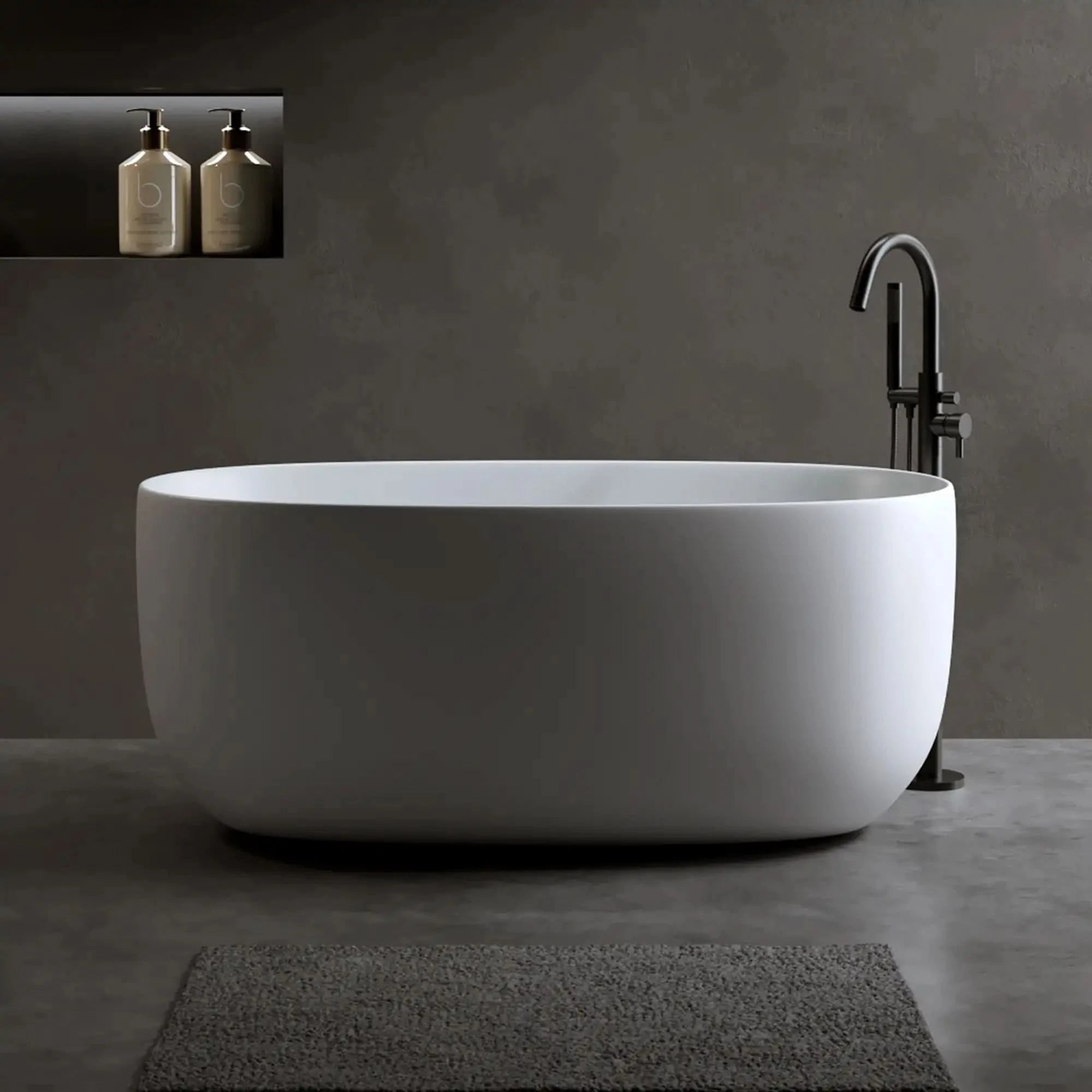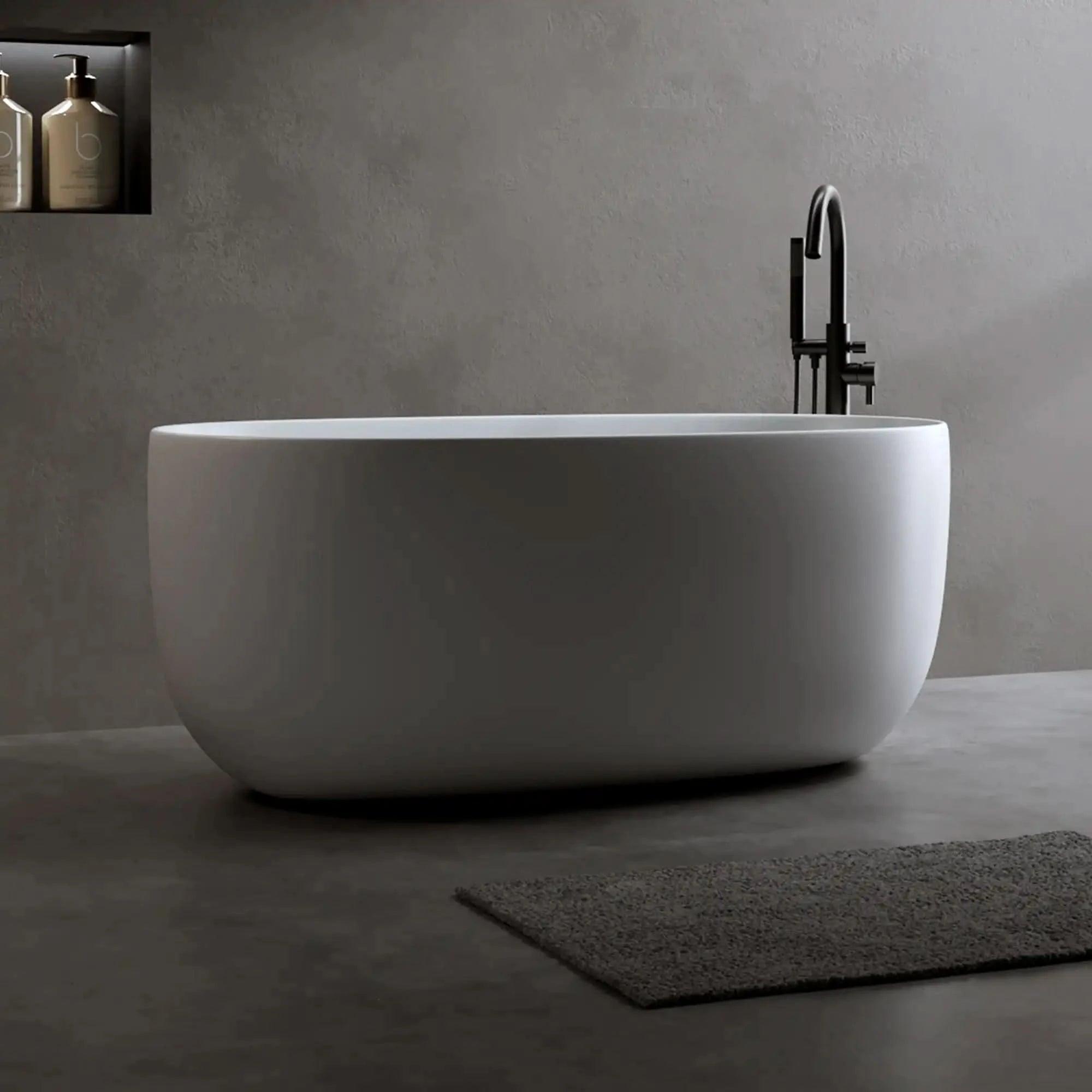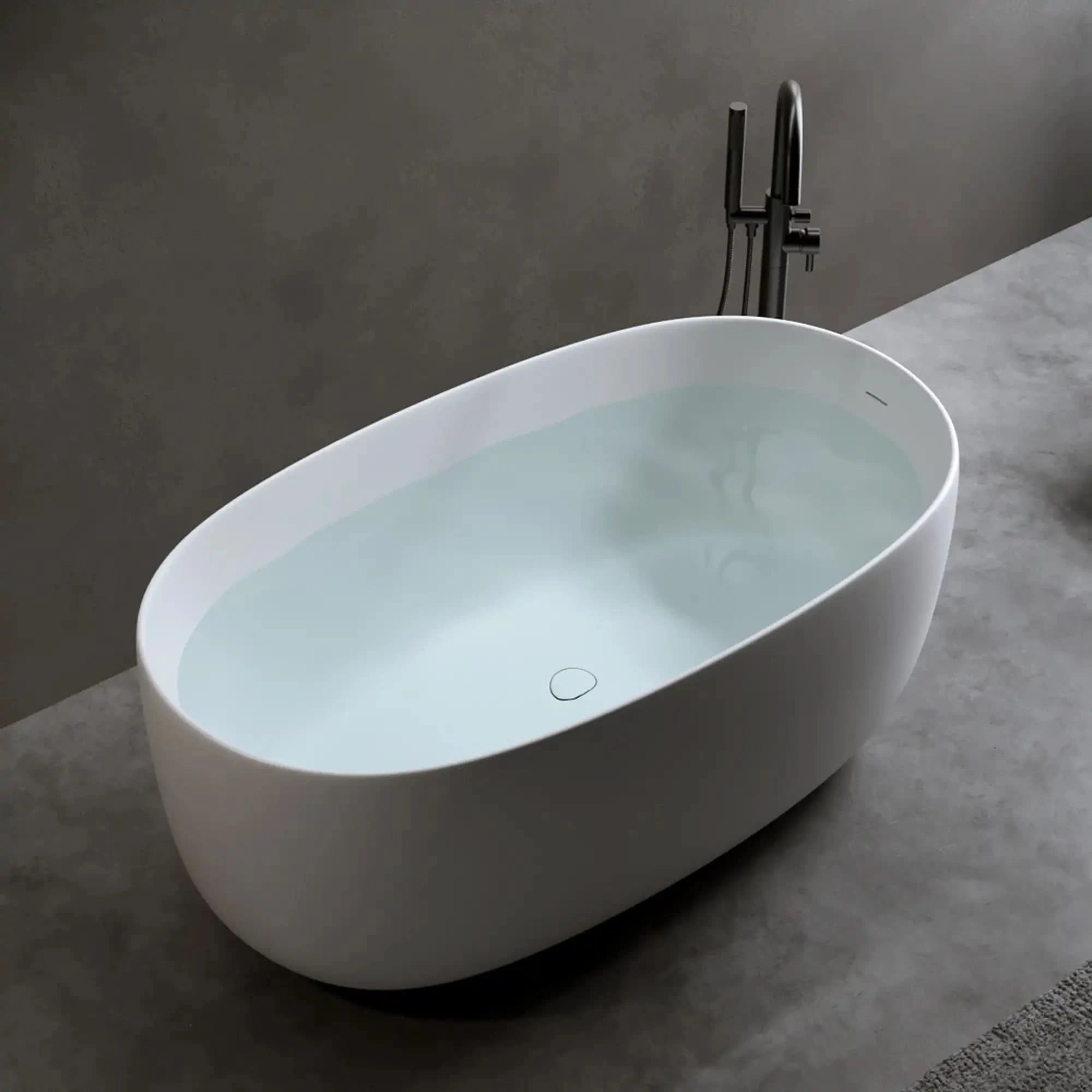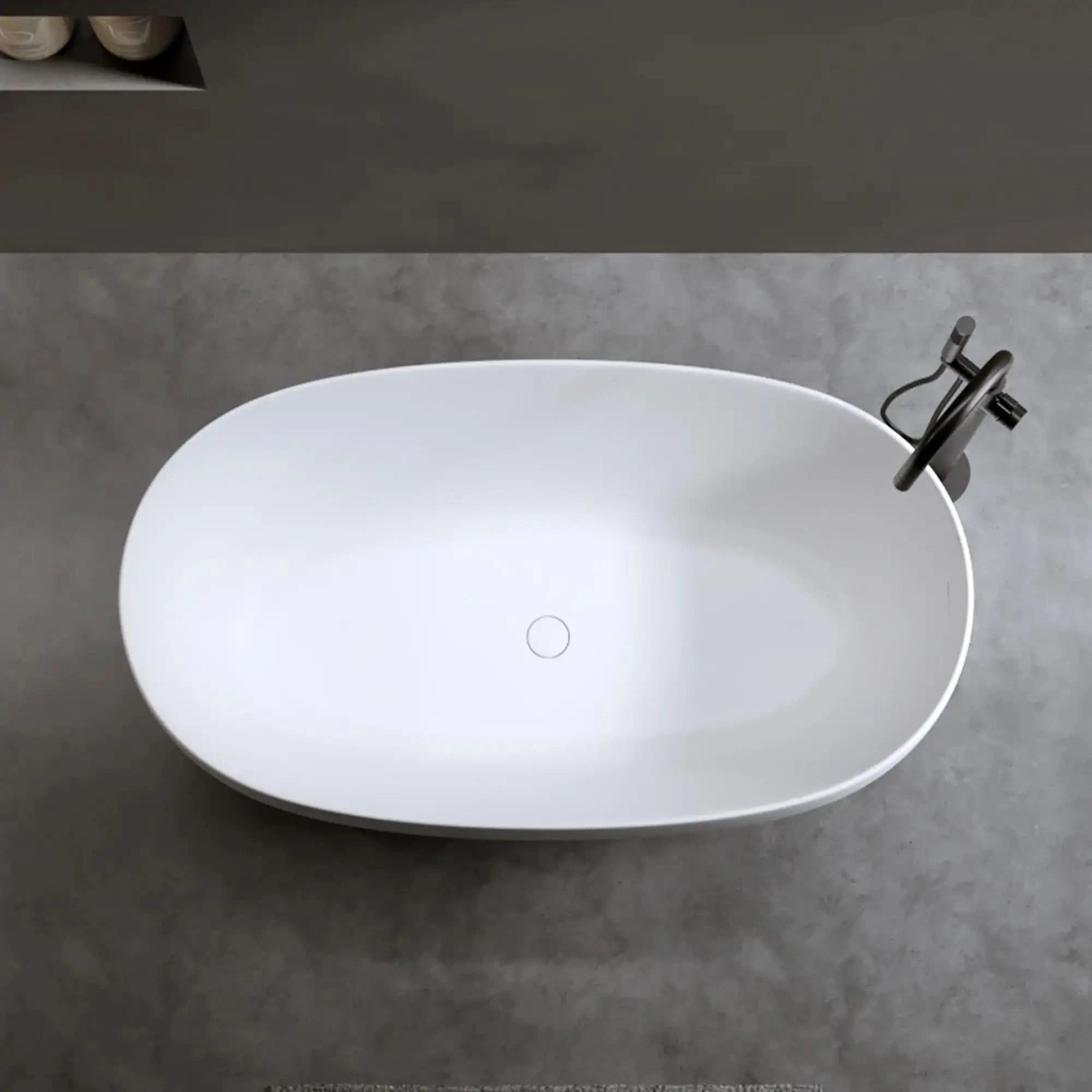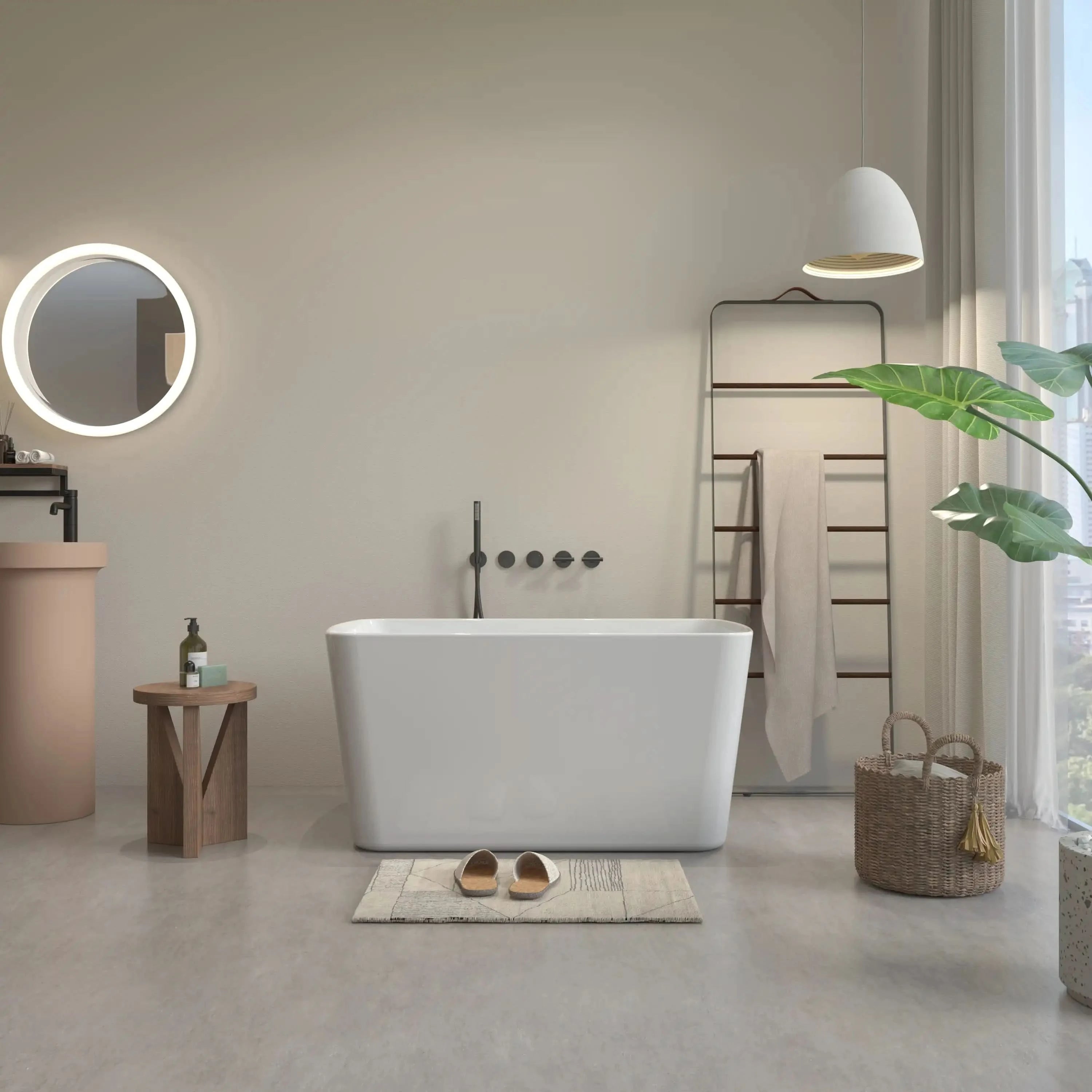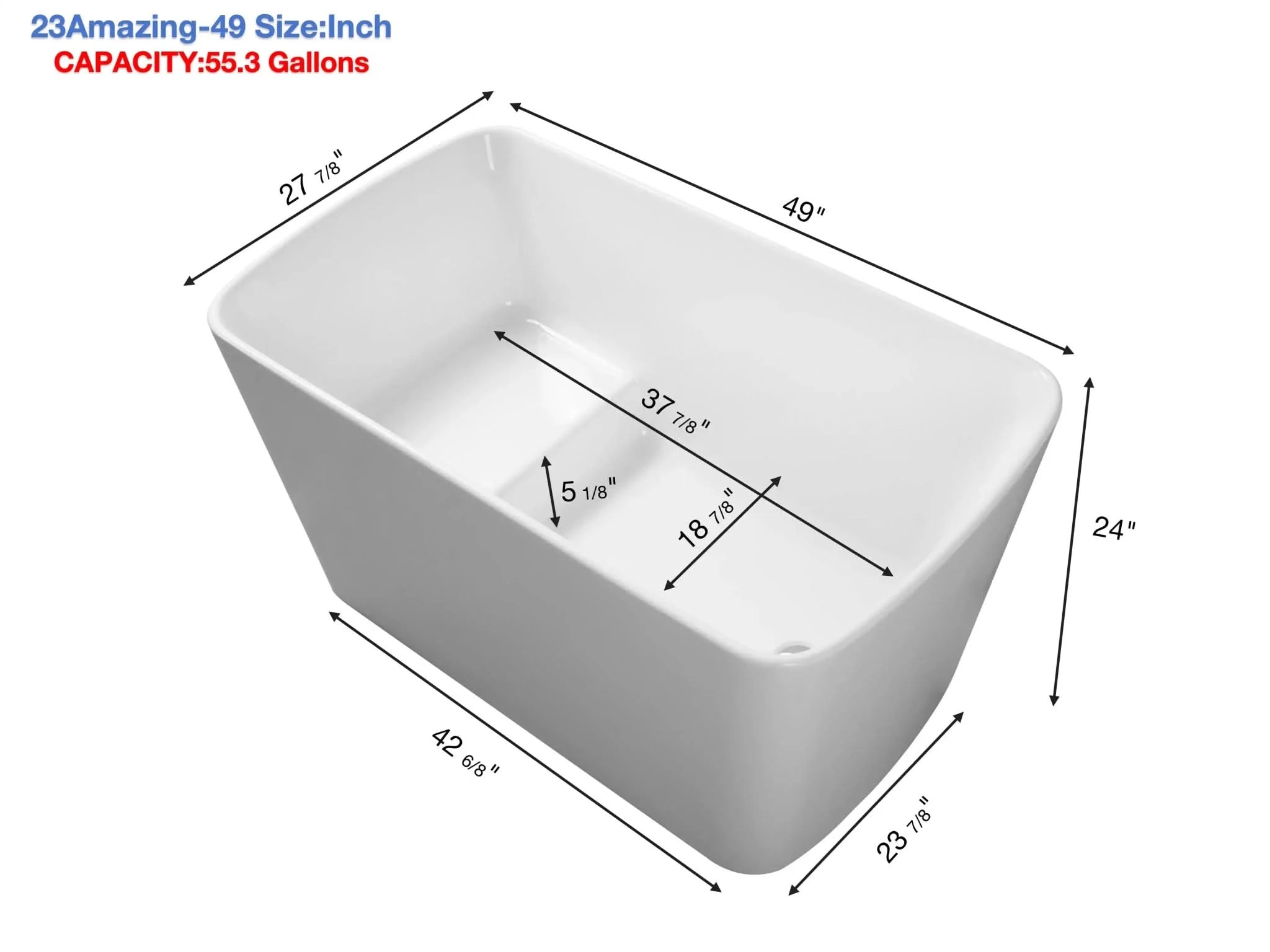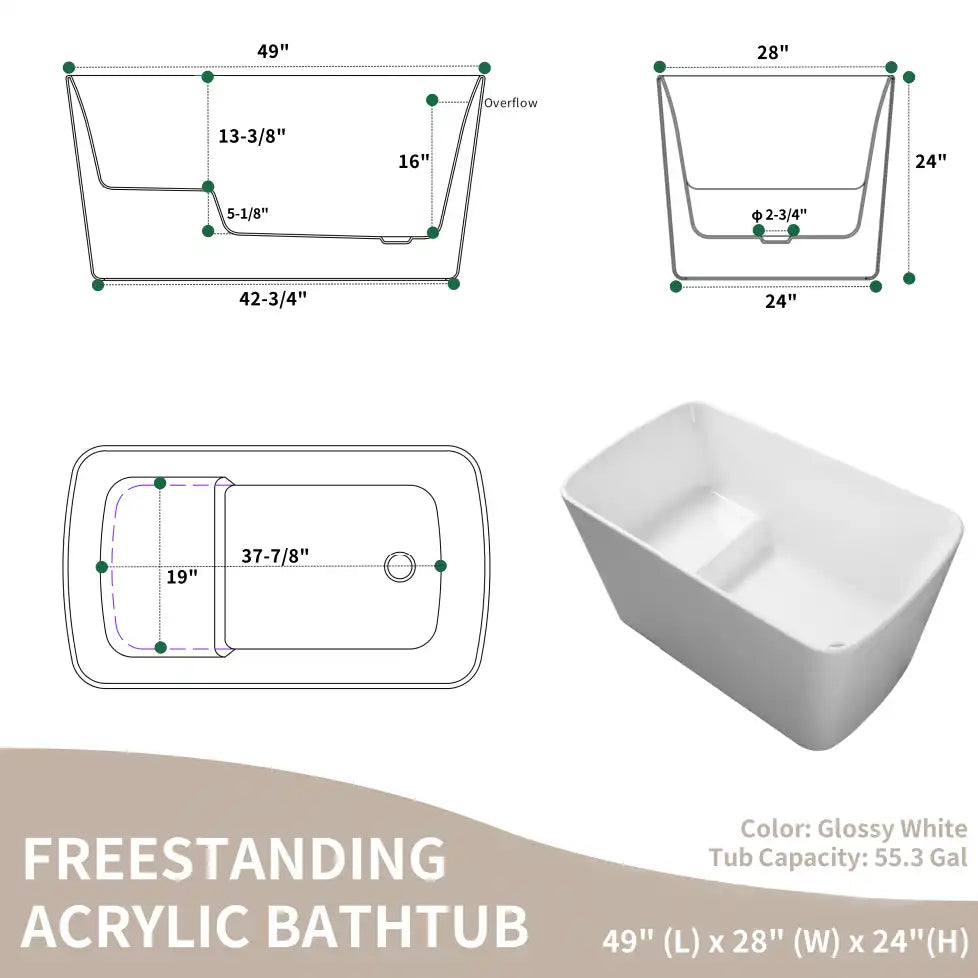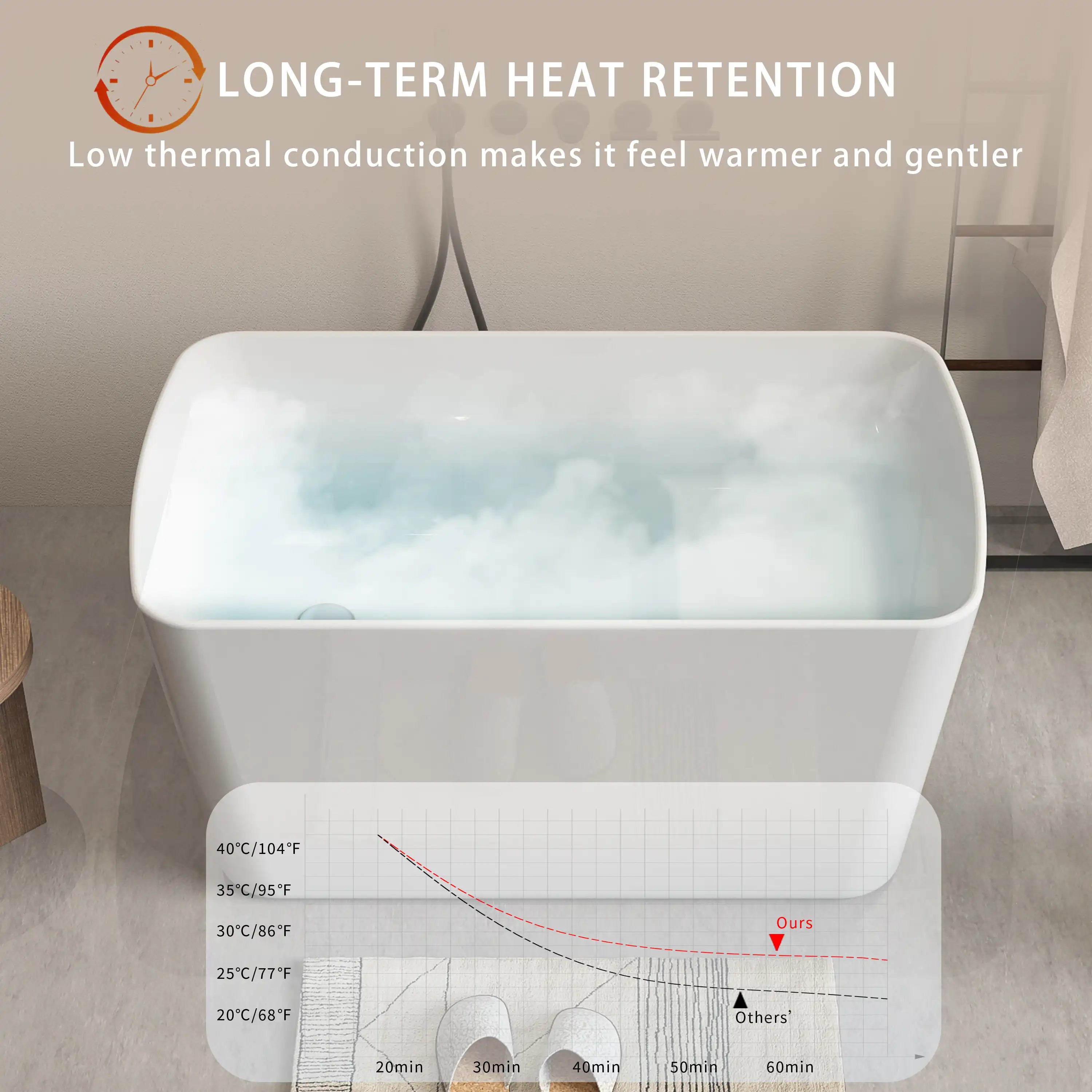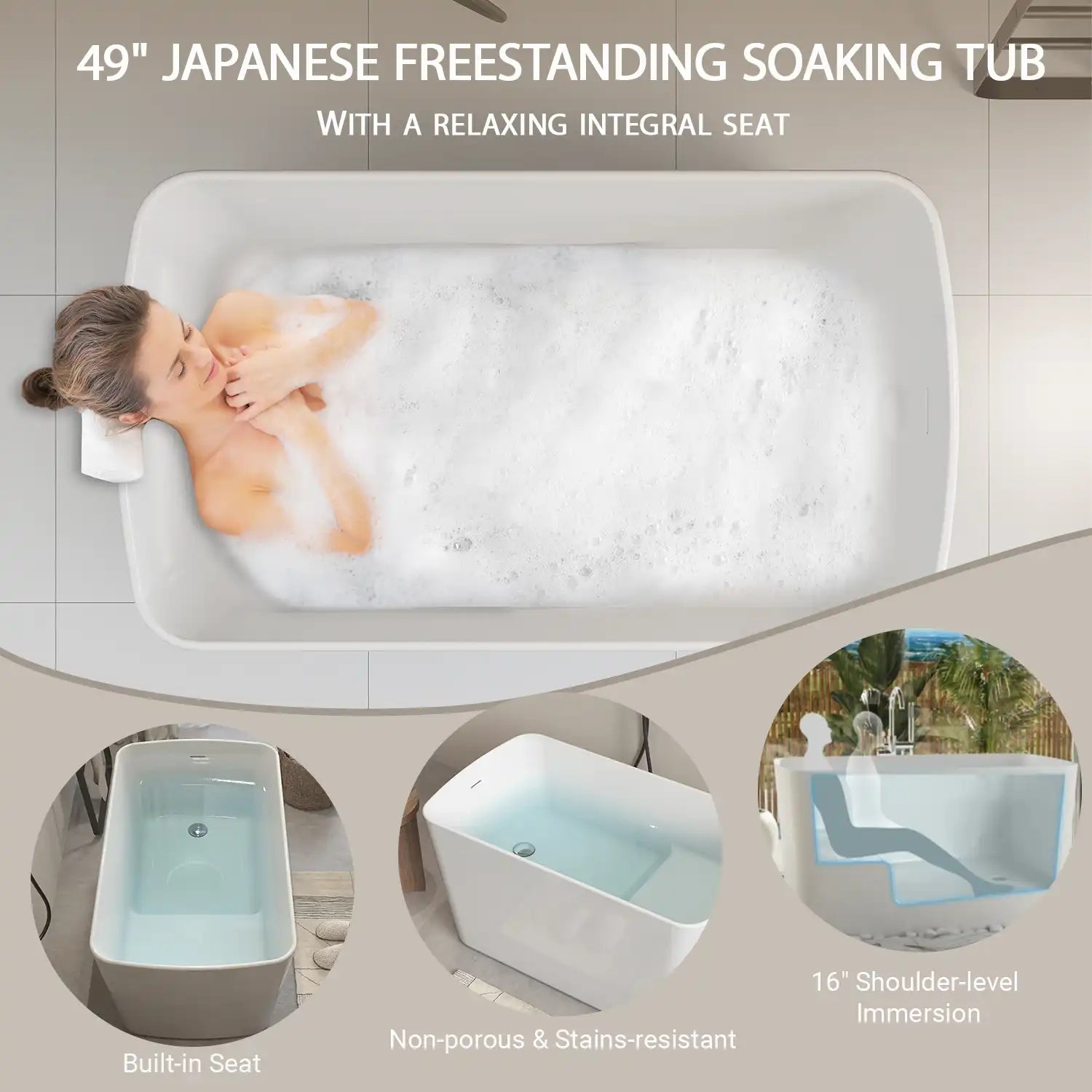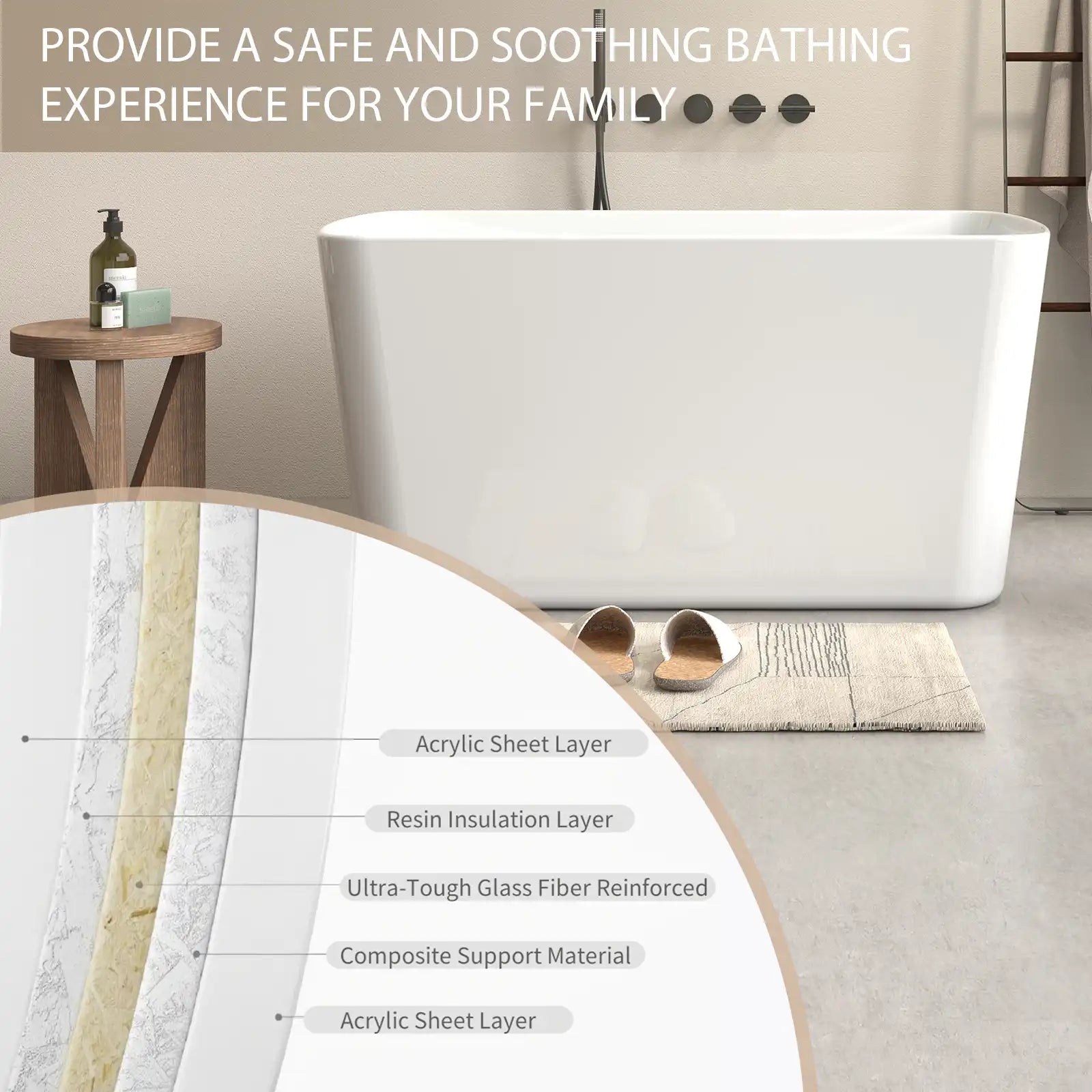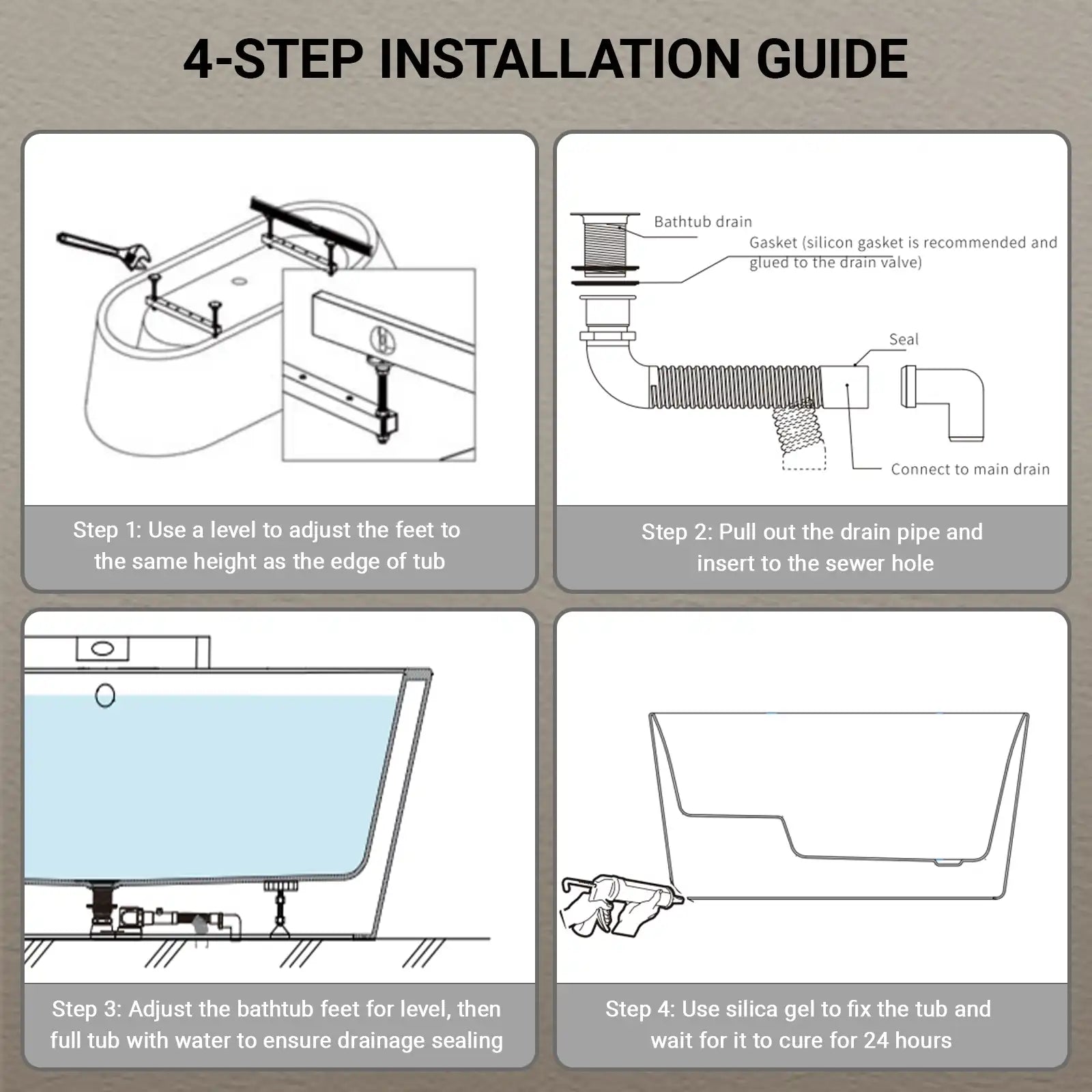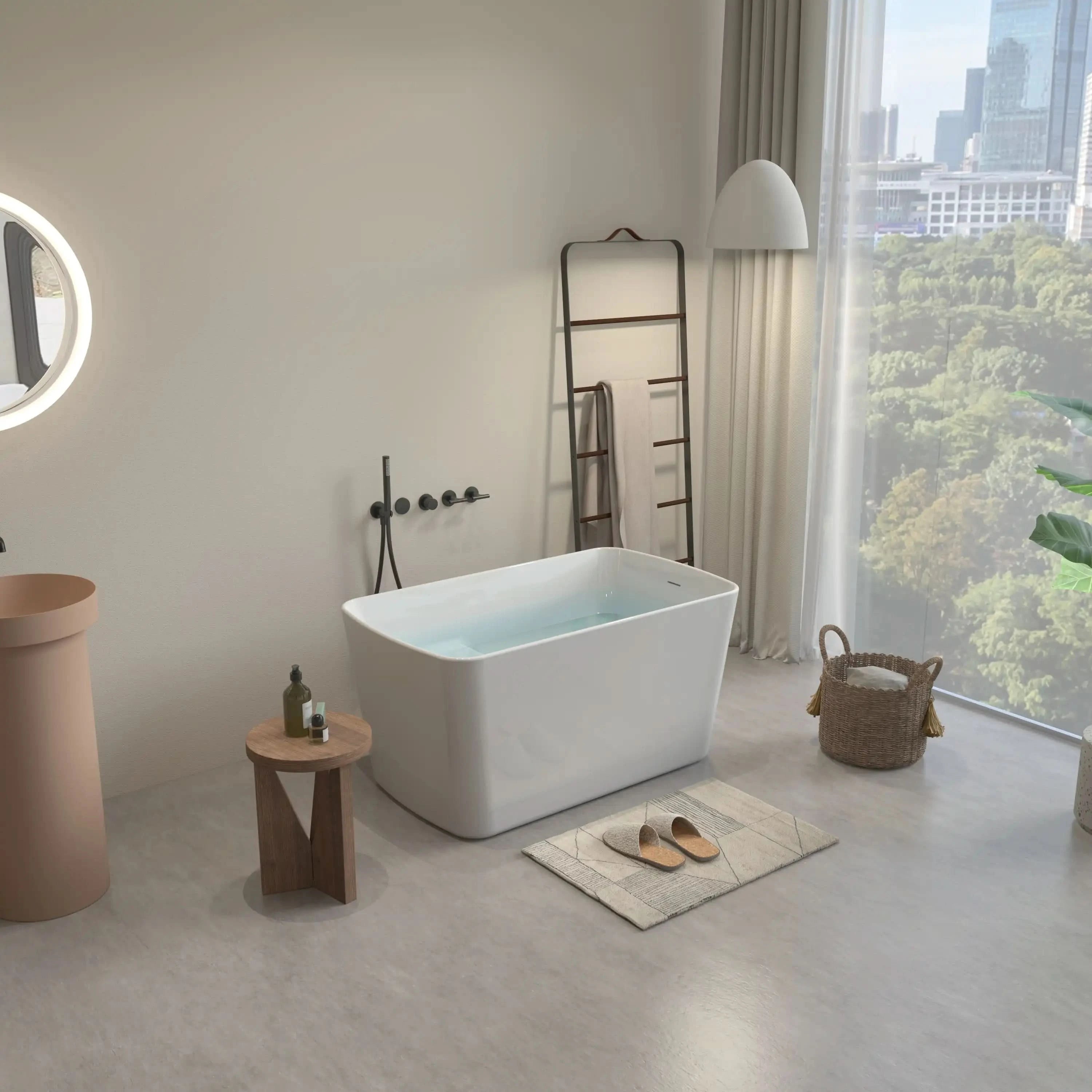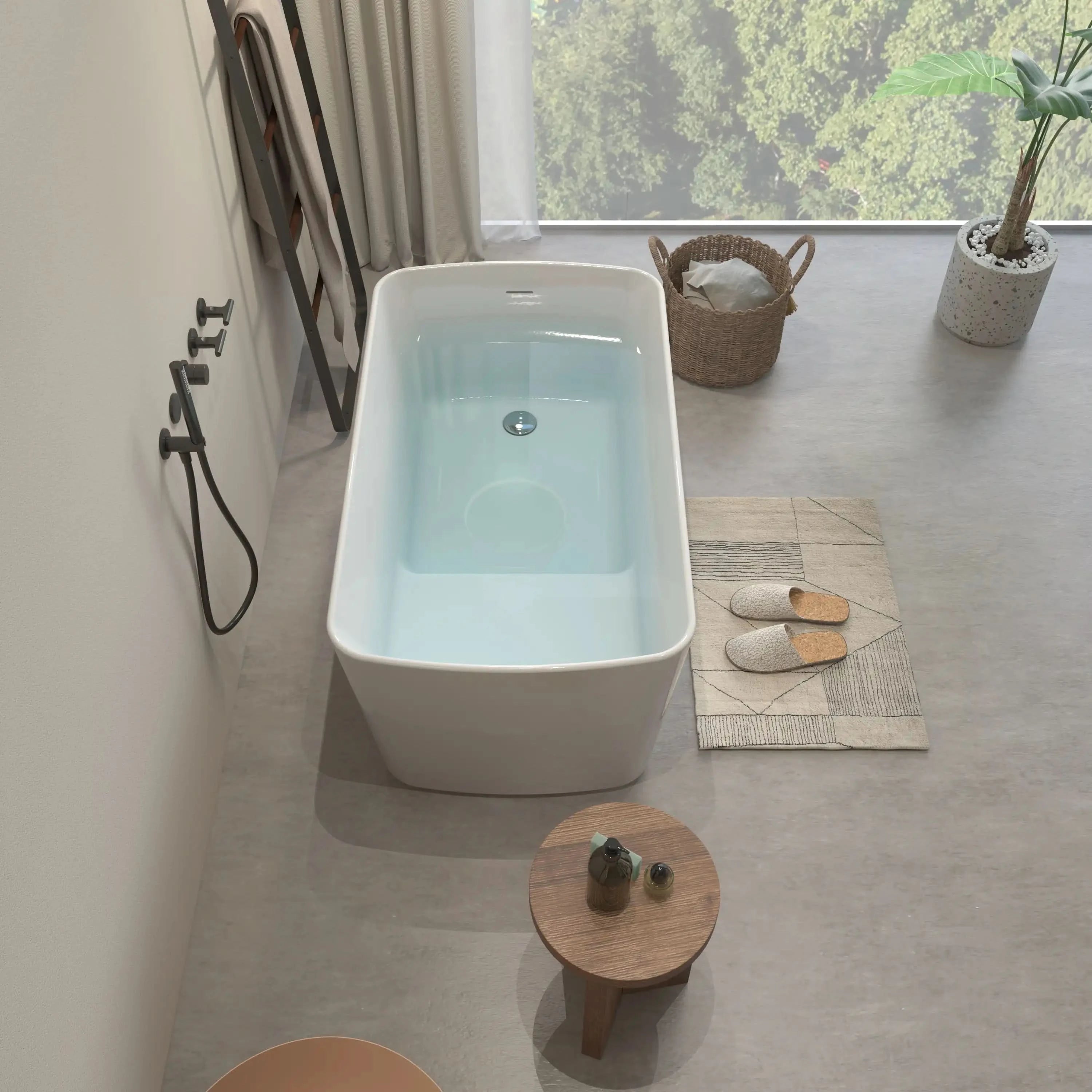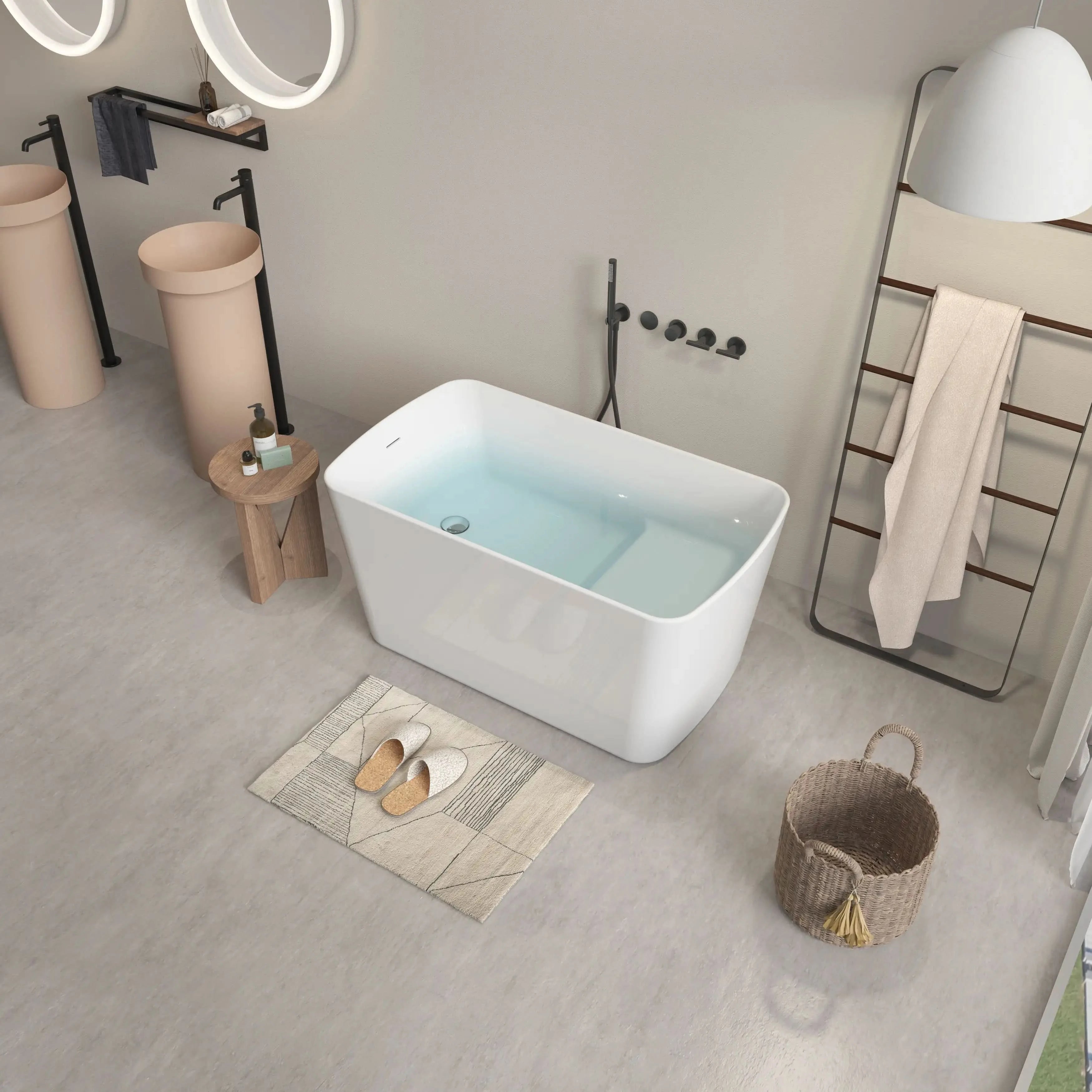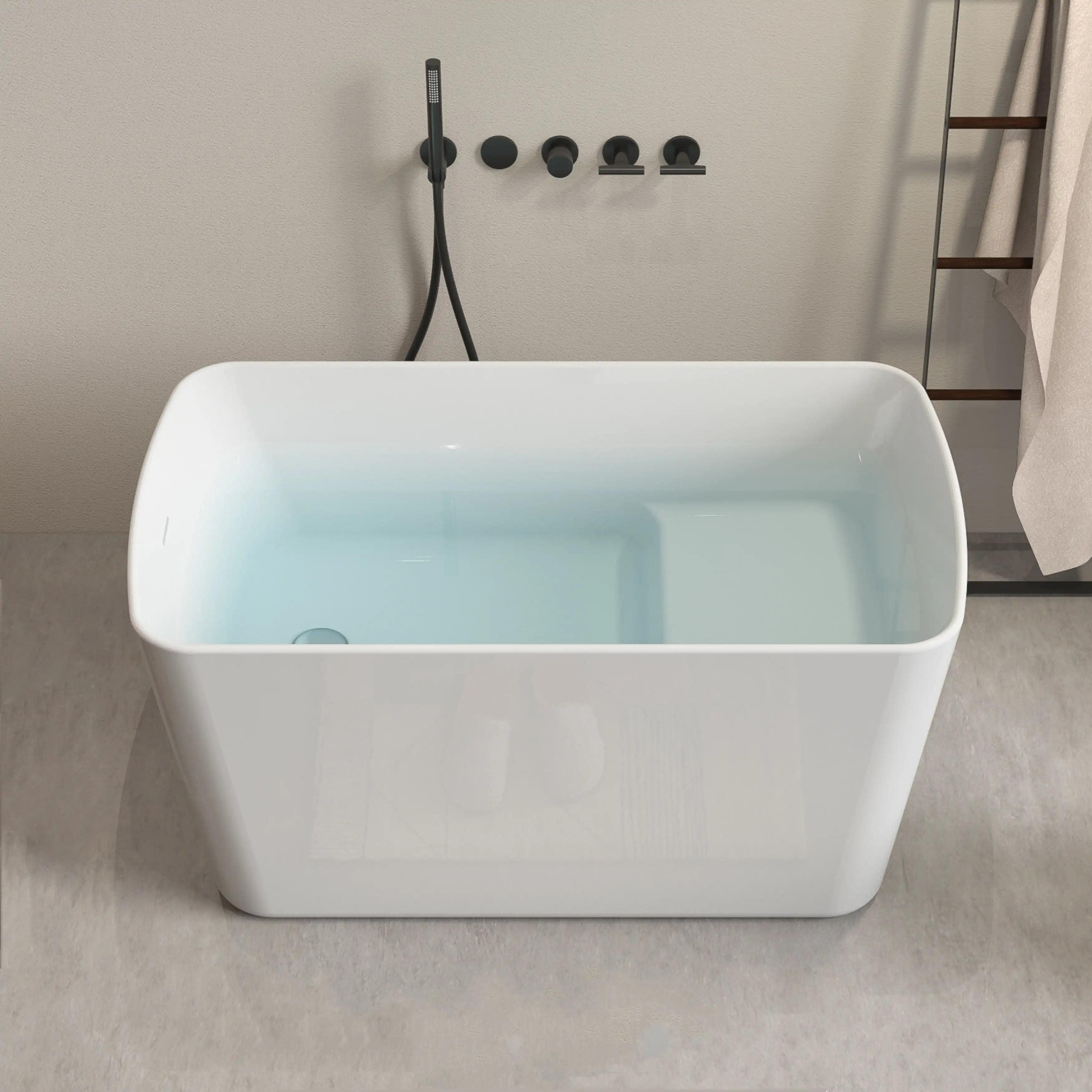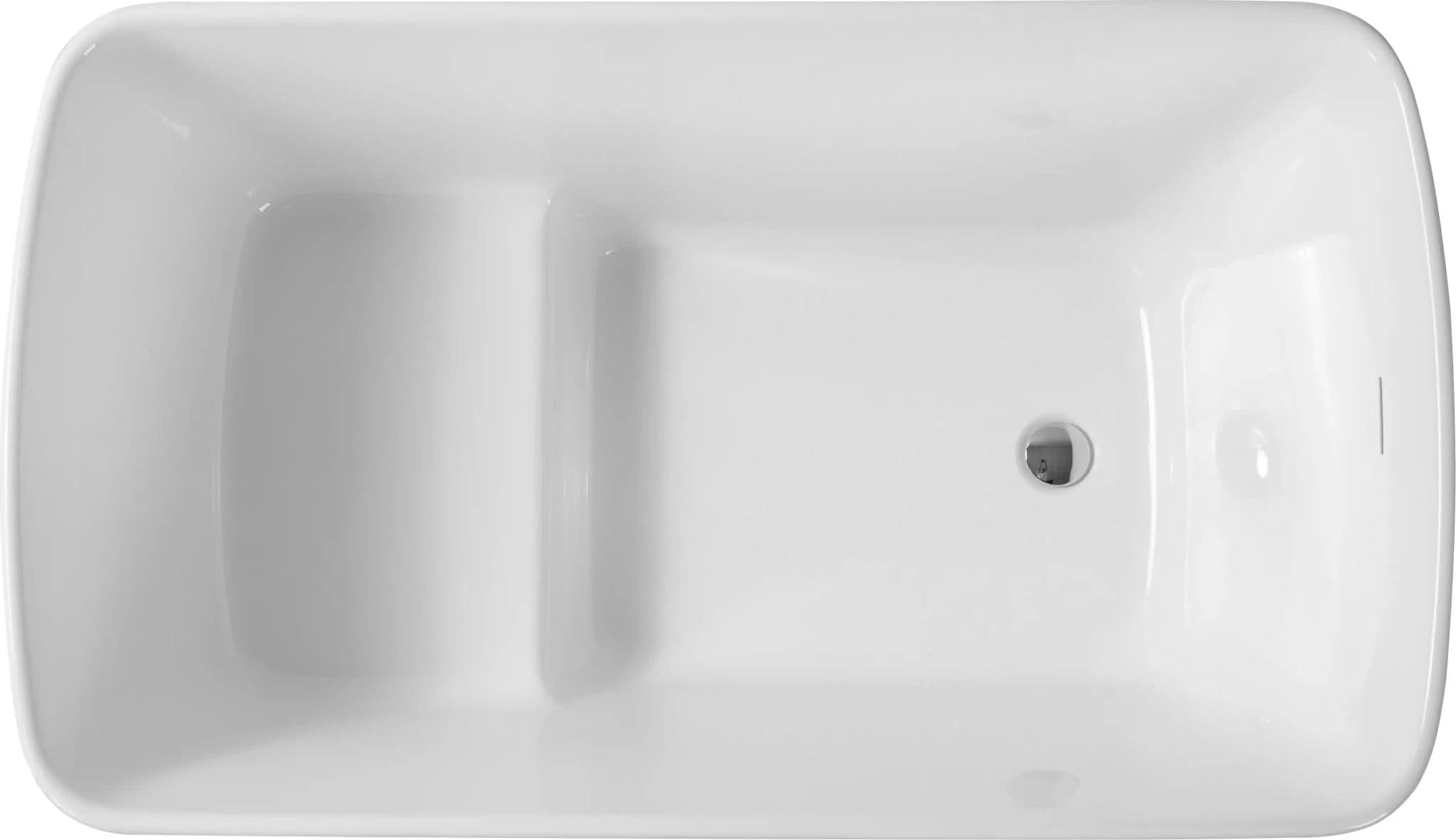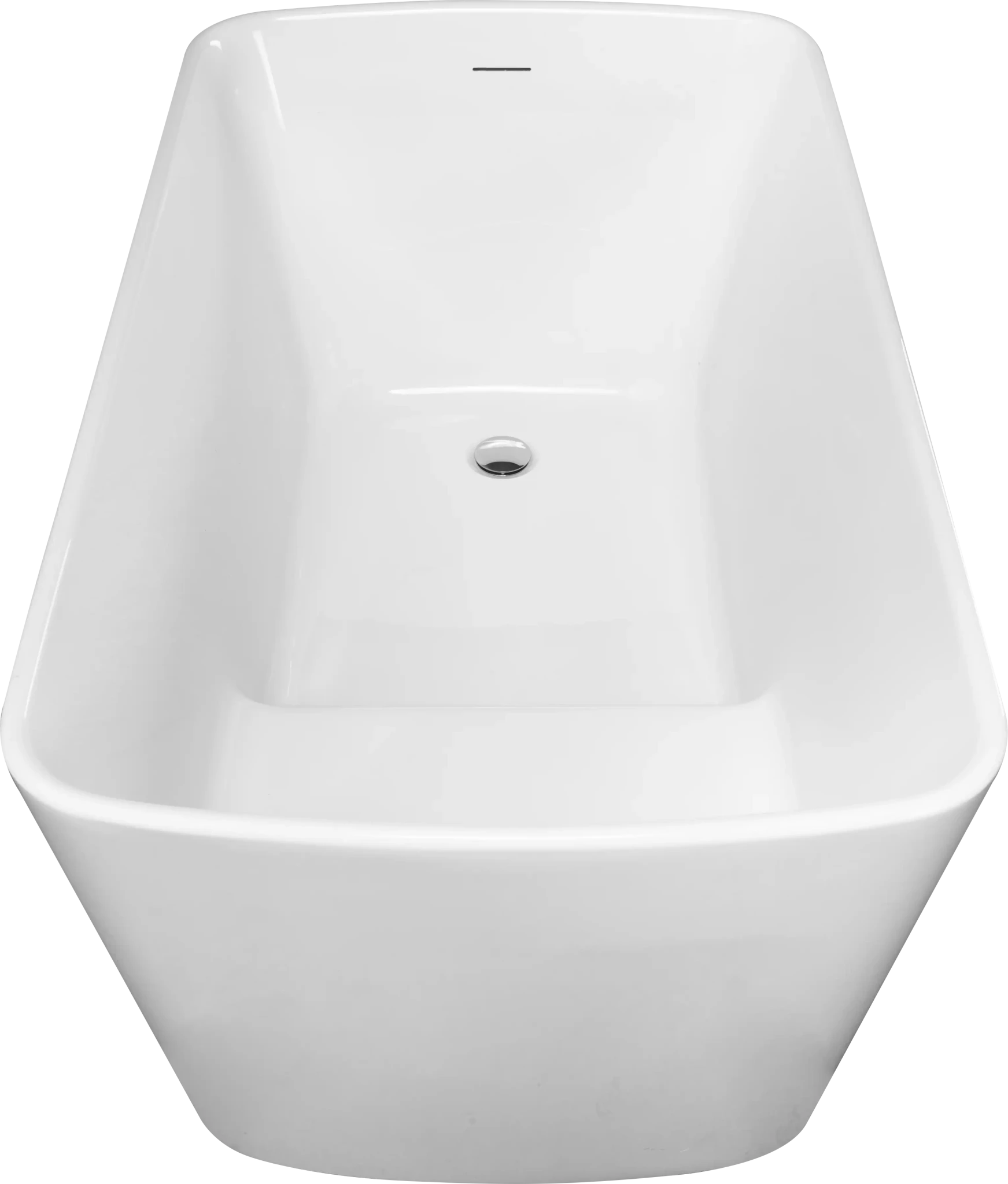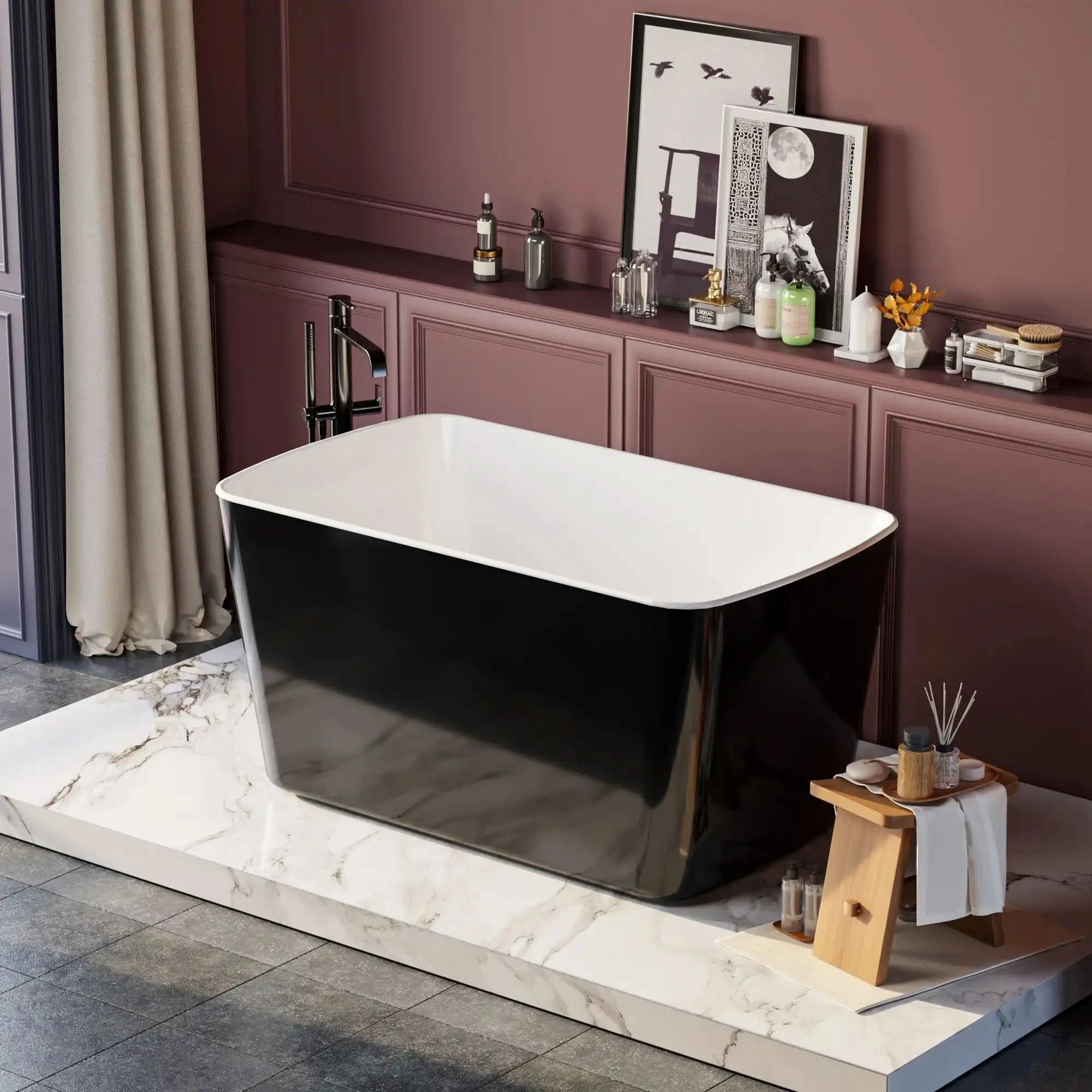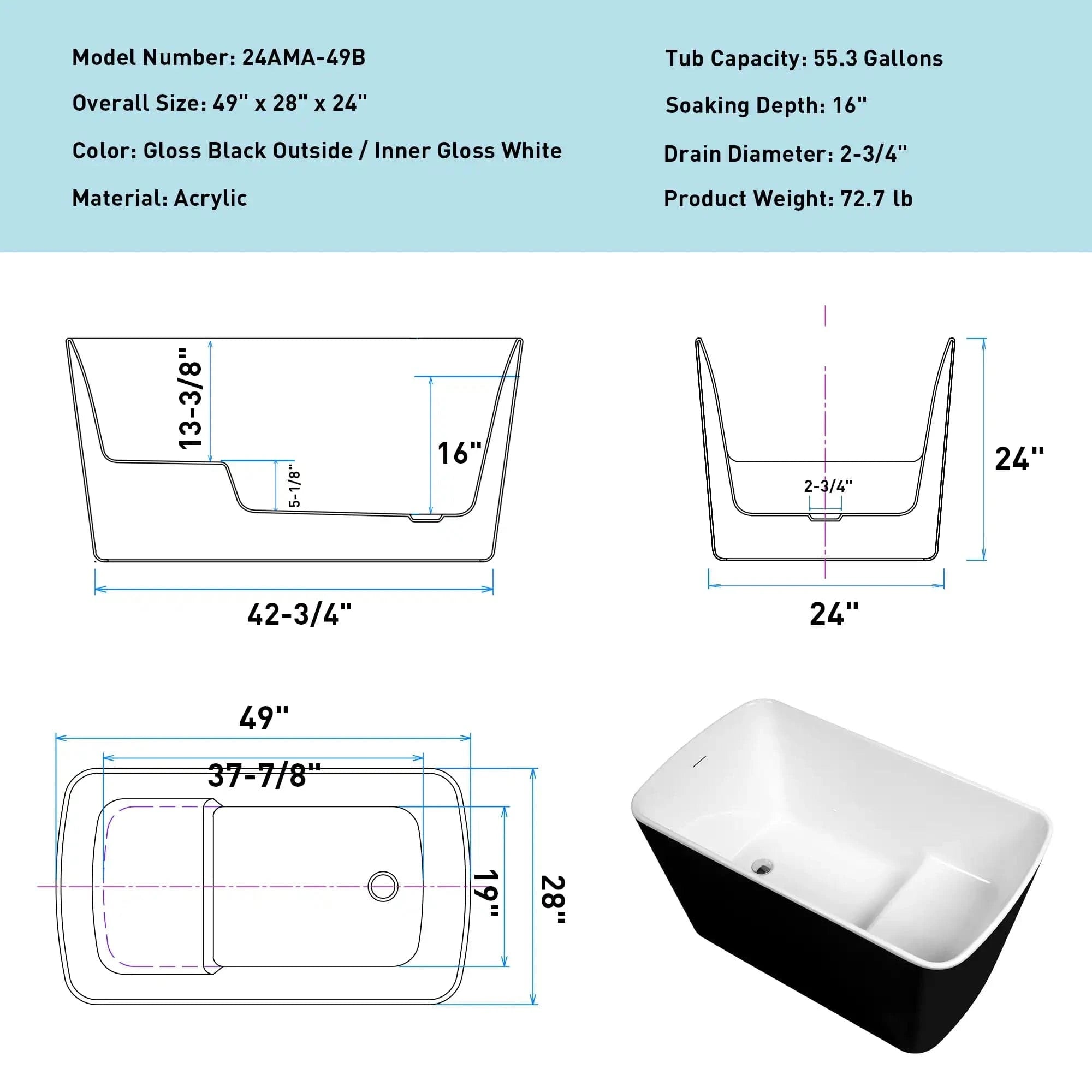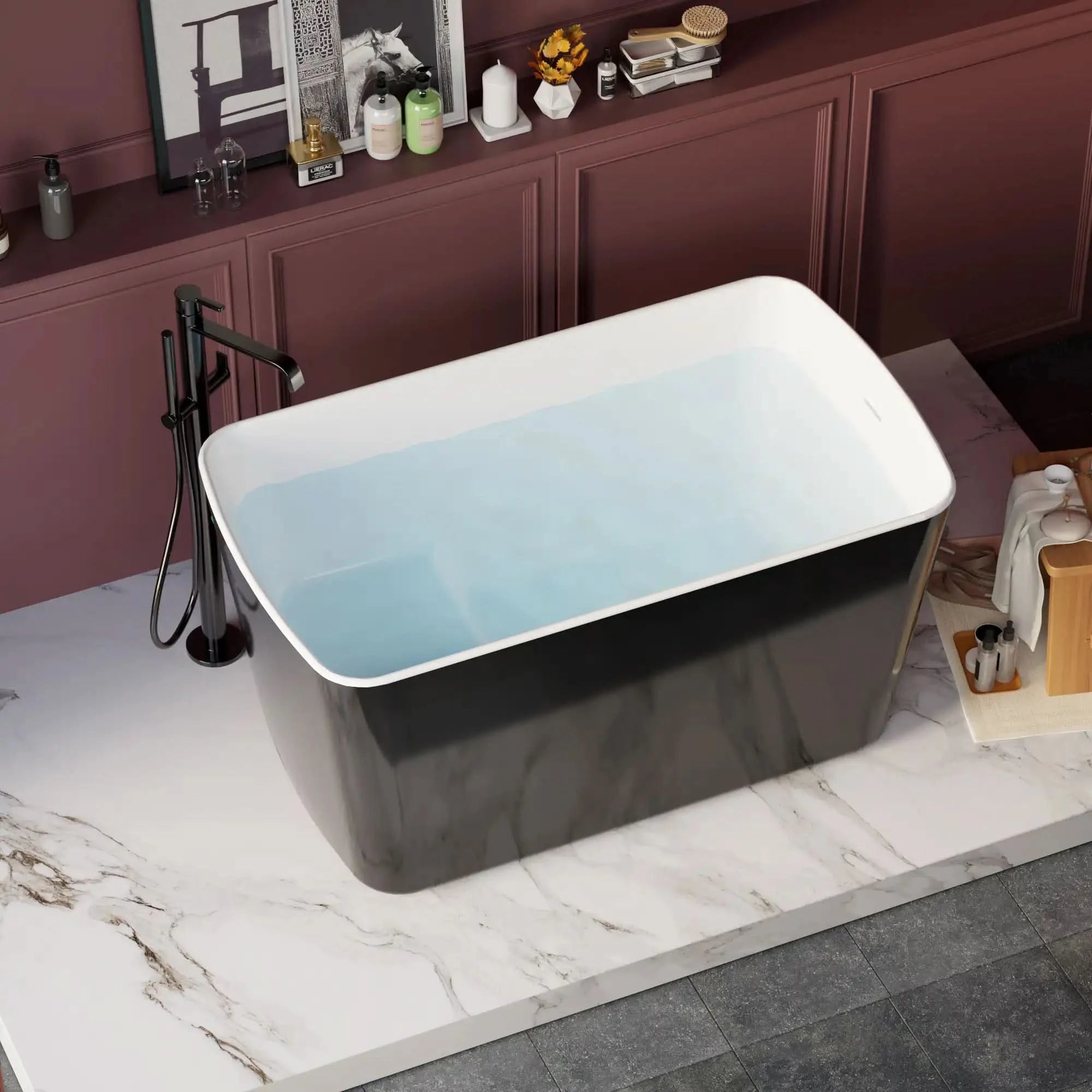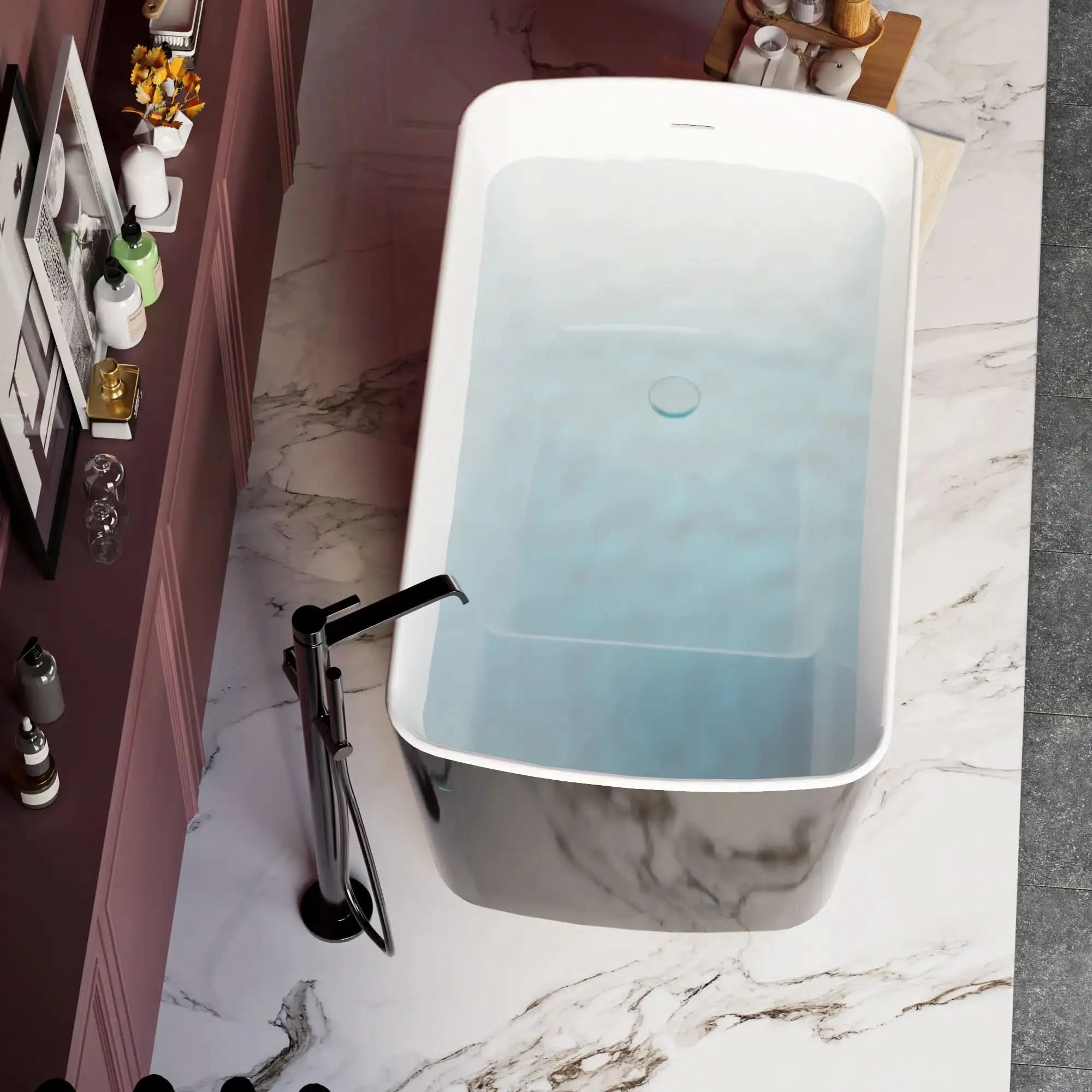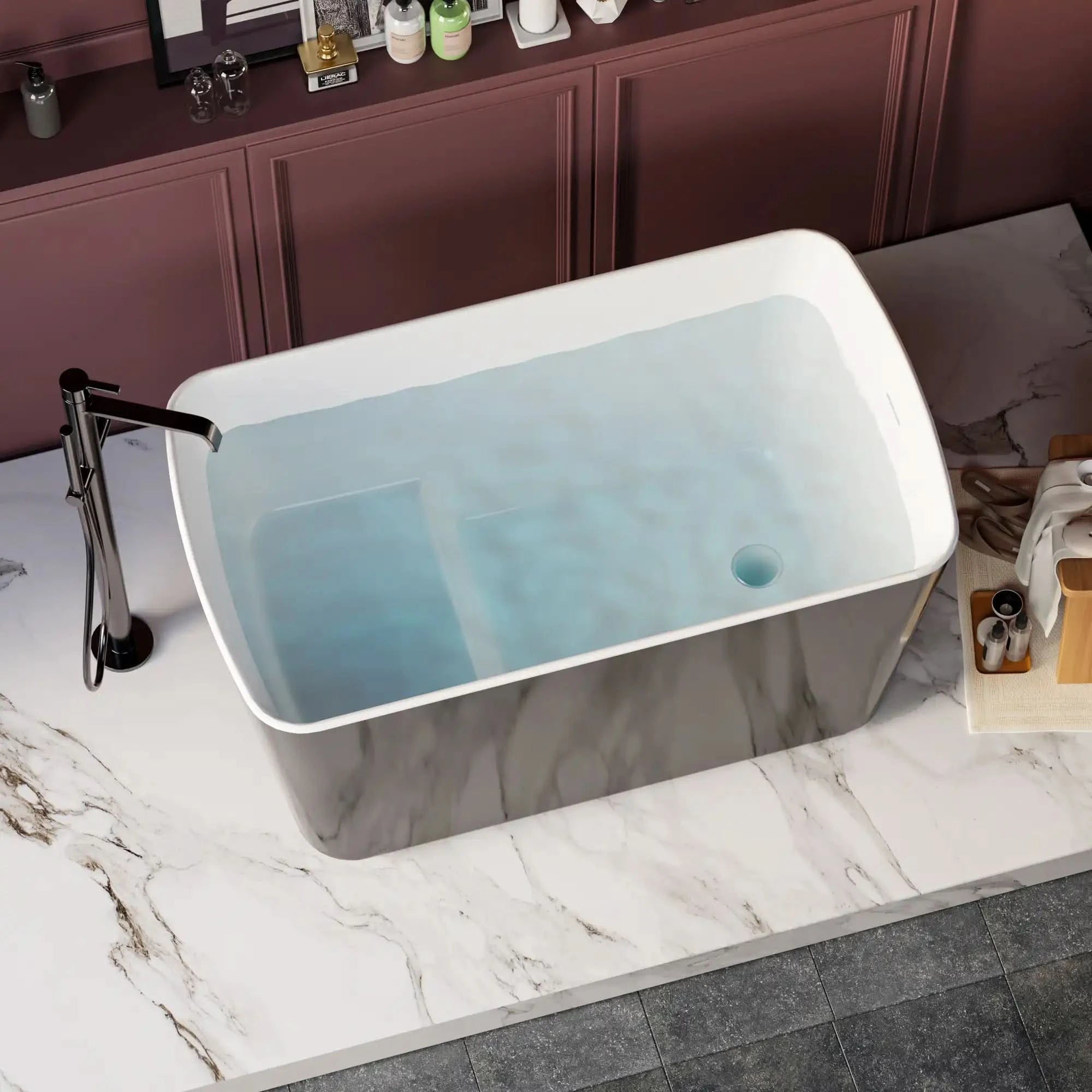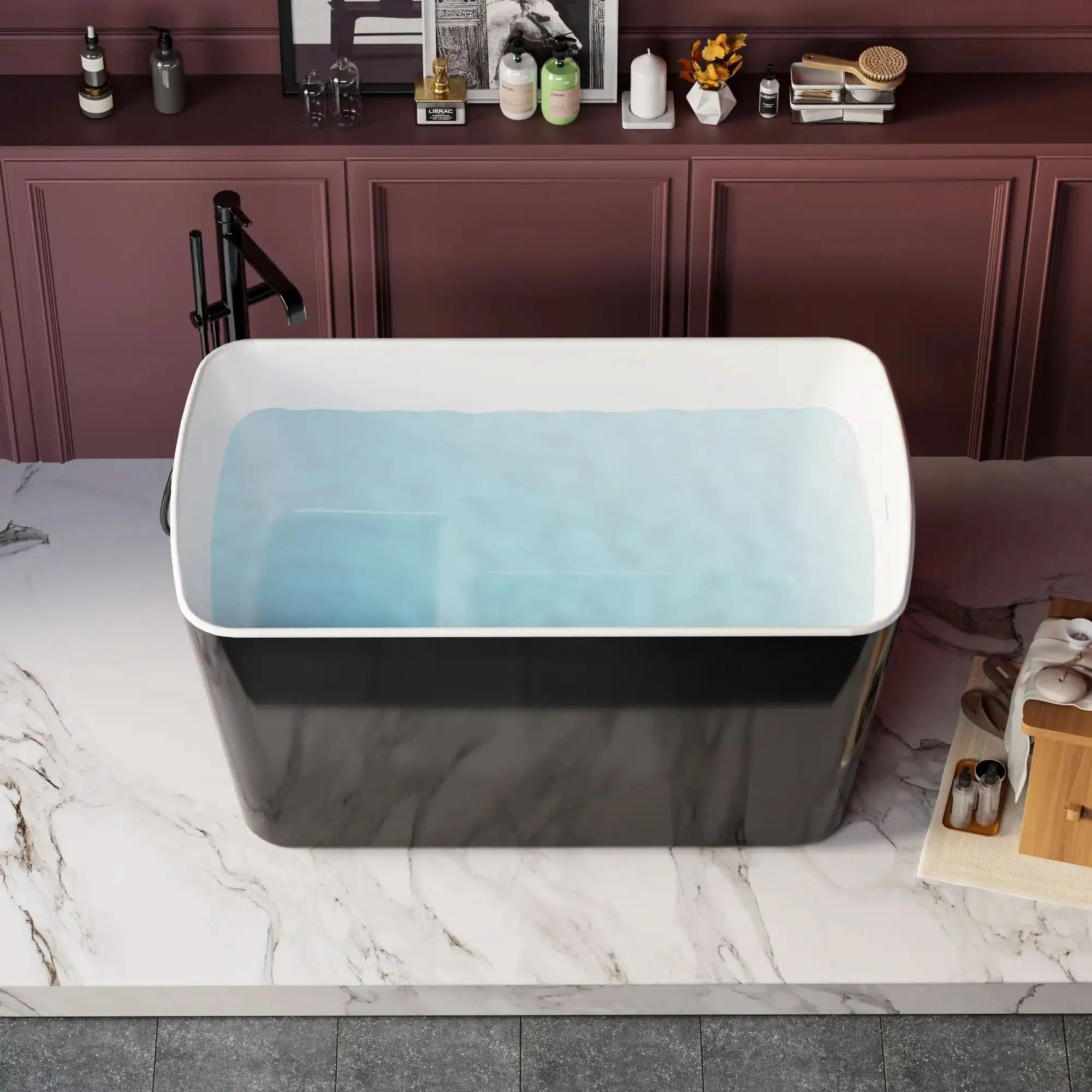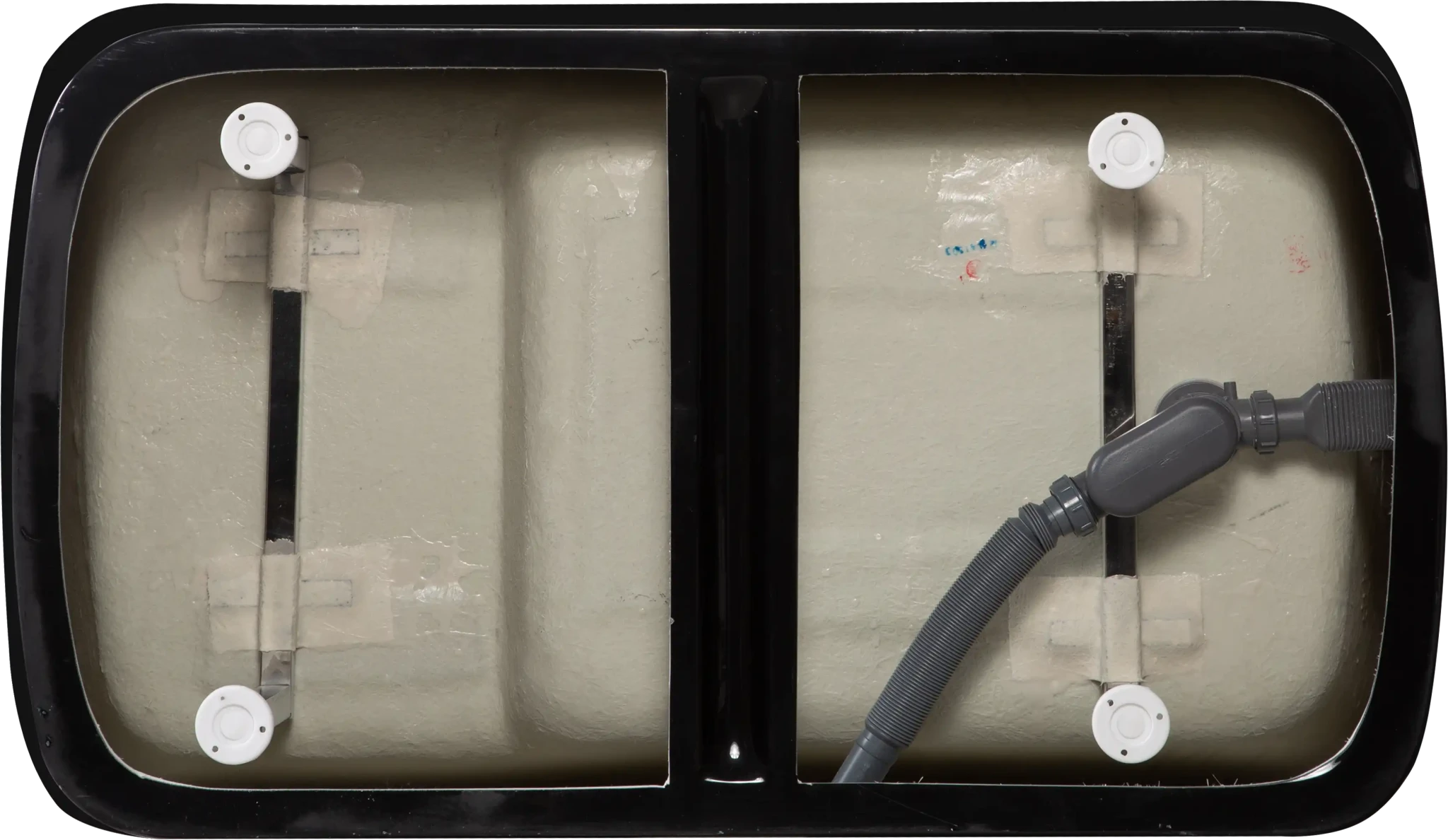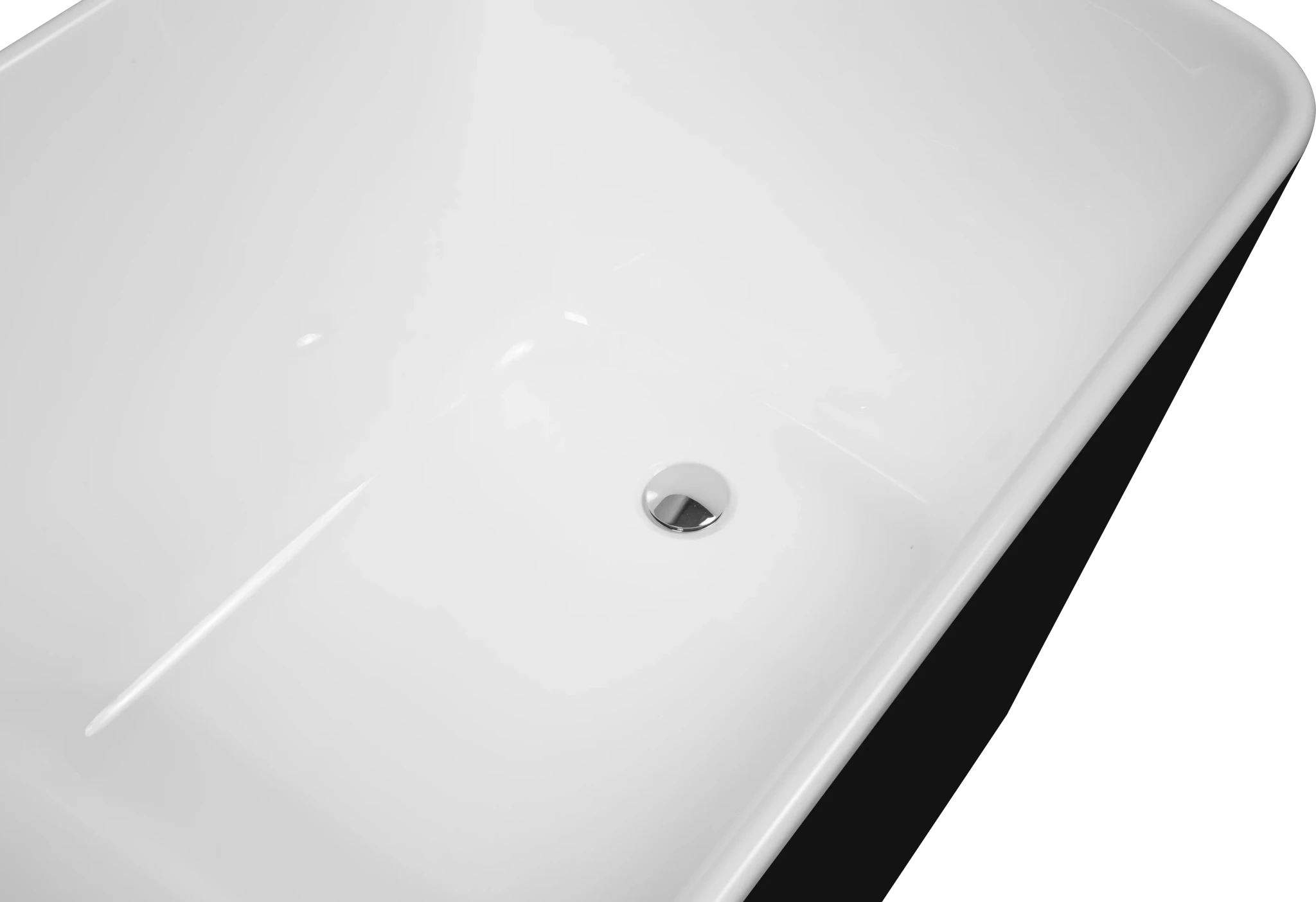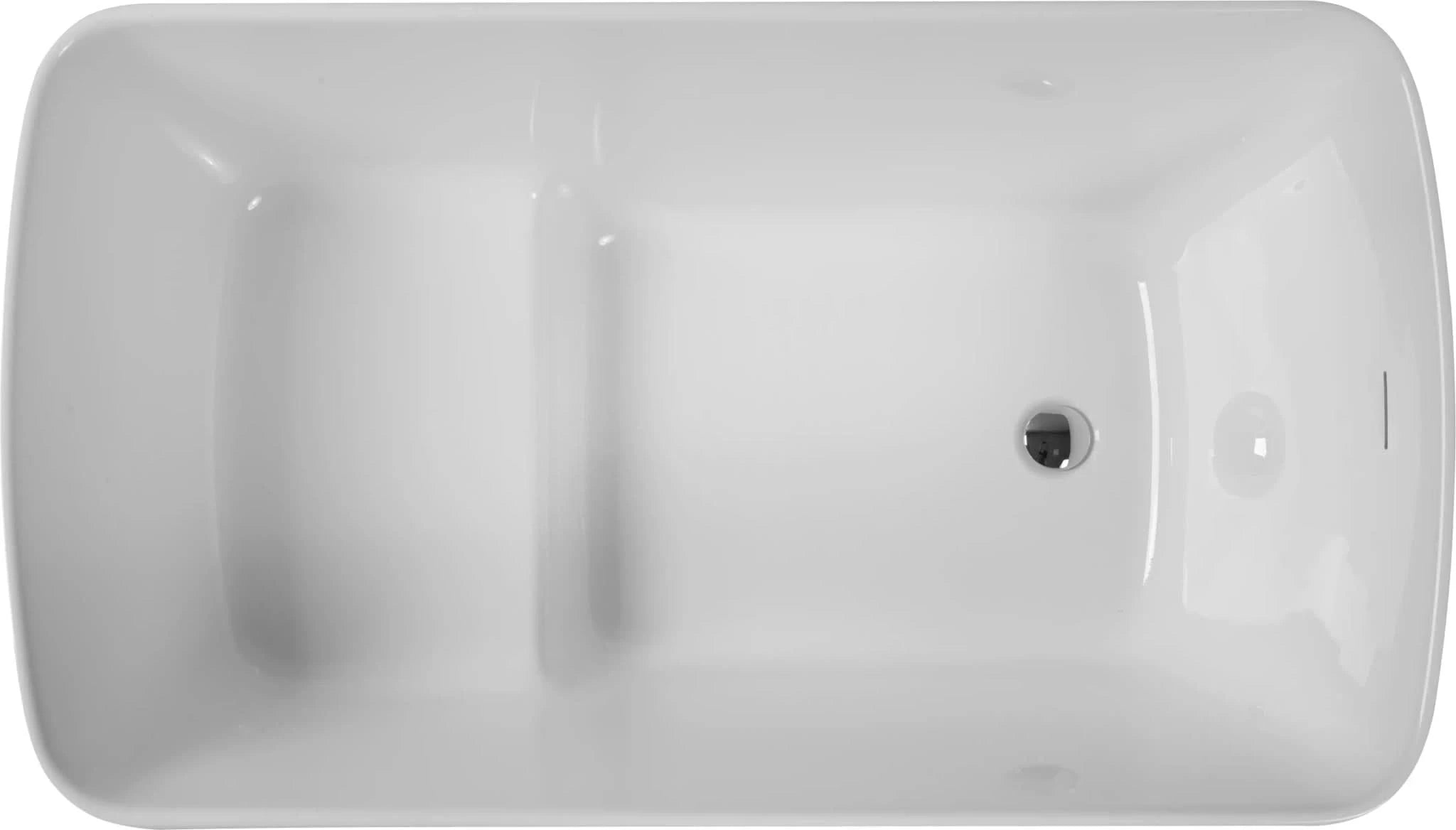Table of Contents
- Bathtub Materials Comparison
- Fiberglass
- Acrylic
- Cast Iron
- Solid Surface (Stone Resin)
- Enameled Steel
- Copper
- Wood
- Natural Stone
- Budget-to-Material Map (quick chooser)
- Practical Buying & Install Tips that Save Headaches
- FAQ
- Bottom Line
- Related Articles
When you choose a tub, you aren't just picking a shape—you're choosing how warm your bath stays, how the surface feels under your skin, how often you'll need to clean or repair it, and how long it will look "new.” Different bathtub materials carry very different trade-offs in heat retention, durability, weight, maintenance, and price. In this guide, you'll get a practical, field-tested comparison so you can choose once and be happy for years.
Bathtub Materials Comparison (at a glance)
| Material | Durability | Heat Retention | Maintenance | Typical Price* | Weight | Design Variety |
|---|---|---|---|---|---|---|
| Fiberglass | ★★☆☆☆ | ★★☆☆☆ | ★★★★☆ | $300–$600 | Light | High |
| Acrylic | ★★★☆☆ | ★★★☆☆ | ★★★★☆ | $500–$1,200 | Light | Very High |
| Cast Iron | ★★★★★ | ★★★★★ | ★★★★★ | $1,500–$6,000+ | Very Heavy | Medium |
| Solid Surface | ★★★★☆ | ★★★★☆ | ★★★★☆ | $1,200–$3,000+ | Heavy | High |
| Enameled Steel | ★★★★☆ | ★★★☆☆ | ★★★★☆ | $400–$1,200 | Medium | Medium |
| Copper | ★★★★★ | ★★★★★ | ★★★☆☆ | $3,000–$7,000+ | Heavy | Medium |
| Wood | ★★★☆☆ | ★★★★☆ | ★★☆☆☆ | $2,000–$5,000+ | Medium | Low |
| Natural Stone | ★★★★★ | ★★★★★ | ★★★☆☆ | $4,000–$10,000+ | Very Heavy | Medium |
*Street prices vary by size, finish, brand, and region.
1. Fiberglass — Budget Hero for Quick Upgrades
Fiberglass tubs are built by spraying or laying glass fibers into a mold and saturating them with resin, then finishing with a gelcoat. The result is a very lightweight shell with decent stiffness for the price. You'll find fiberglass everywhere—from starter homes to rental refreshes—because it ships and installs easily (great for tight stairwells and upper floors). Expect a bright, glossy look on day one. Over time, the gelcoat can lose sheen and show wear if you scrub aggressively or use abrasive cleaners. For bathtub materials on a tight budget or fast project timelines, fiberglass delivers the quickest win, but it's not the forever tub.
| Attribute | Notes |
|---|---|
| Fit Types | Alcove, skirted, shower-tub combos, some drop-ins |
| Feel | Light, slightly hollow if wall is thin |
| Repairability | Small chips/scratches repairable with resin kits |
| Typical Lifespan | ~5–8 years before visible aging in high-use homes |
| Best For | Budget refreshes, rentals, upper floors |
Pros
- Lowest upfront cost; often the cheapest bathtub material that still looks clean
- Very easy to transport and install; ideal for multi-story homes
- Wide availability and fast lead times
- Moldable into many standard sizes and combos
- Basic repairs (chips, scratches) are DIY-friendly
Cons
- Lower structural rigidity; thin shells can flex underfoot
- Heat leaves quickly; not the best for long soaks
- Gloss may fade in ~4–5 years with heavy use
- More prone to scratching/cracking from impacts
- Feels less "substantial" than heavier materials
Buying Advice
If you're optimizing for cost and speed, fiberglass earns its place. To avoid the common regrets, pick a thicker shell with a smooth, even gelcoat and insist on a slip-resistant floor. We also suggest a proper mortar bed under the base to eliminate flex and creaks—and to protect your caulk lines from movement over time.

2. Acrylic — The Versatile Daily-driver
Acrylic tubs start as thermoformed acrylic sheets, then get fiberglass reinforcement to stiffen the structure. That combo keeps weight low while delivering a non-porous, easy-clean surface that resists mildew. Acrylic is the sweet spot for family bathrooms: warmer to the touch than steel, easier to maintain than porous stone, and available in almost any shape—alcove, drop-in, freestanding, even asymmetrical designs. The downside? Ultra-cheap models sometimes use thin walls that flex; mid-range builds with thicker reinforcement feel much more solid and age better.
| Attribute | Notes |
|---|---|
| Fit Types | Alcove, drop-in, freestanding |
| Feel | Warm, smooth, comfortable on skin |
| Repairability | Light scratches can be polished; deeper damage needs pro |
| Typical Lifespan | ~10–15 years with proper care |
| Best For | Busy households, modern shapes, easy cleaning |
Pros
- Huge range of sizes and silhouettes; high design variety
- Comfortable, warm touch and better heat retention than fiberglass
- Easy routine cleaning; non-porous surface resists grime build-up
- Light weight simplifies upstairs installations
- Competitive pricing across many collections
Cons
- Thin shells can flex; can feel "plasticky" if too lightly built
- Less impact-resistant than cast iron or stone
- Cheaper finishes may dull with harsh chemicals
- Can creak if not bedded properly during install
Buying Advice
Go mid-to-upper tier for thicker reinforcement and a sturdier feel—this directly tackles the "flimsy" complaint you hear about bargain acrylic. During install, set the base in mortar, not just foam, to remove flex and squeaks. If you love long soaks, consider an inline heater or choose a deeper soaking model to offset moderate heat loss.
3. Cast Iron — Heirloom Toughness and Spa-level Warmth
Cast iron tubs are poured from molten iron into heavy molds and finished with a thick enamel. The mass is the magic: it soaks up heat and radiates it back, creating the longest, most luxurious soaks of almost any bathtub material. Surfaces are remarkably resistant to scratching and household chemicals, and the finish holds its luster for decades. The catch is weight—delivery, stair turns, and floor load all need planning. Expect to hire pros and, in some cases, add subfloor reinforcement.
| Attribute | Notes |
|---|---|
| Fit Types | Freestanding (clawfoot/roll-top), alcove, drop-in |
| Feel | Dense, rock-solid, premium enamel gloss |
| Repairability | Enamel is tough; pro repair for chips is possible |
| Typical Lifespan | 30–50+ years |
| Best For | Forever homes, vintage looks, serious soakers |
Pros
- Top-tier durability and scratch resistance
- Unmatched heat retention for long, relaxing baths
- Feels substantial and quiet underfoot
- Elevates property value; timeless aesthetic
- Finish maintains gloss with minimal fuss
Cons
- Very heavy; logistics and structure must be considered
- Higher purchase + installation cost
- Fewer adventurous shapes vs. acrylic/solid surface
- Cold to the touch before filling (quickly warms in use)
Buying Advice
If you want a "buy once, keep forever" tub and the best heat feel, this is it. Plan delivery path measurements carefully; discuss weight and joist span with your installer. For upstairs installs, factor reinforcement. A quality slip-resistant floor texture is a smart add for comfort and safety.

4. Solid Surface (Stone Resin) — Modern Luxury without The Downsides of Stone
Solid surface (often called stone resin) blends mineral stone powders with high-performance resin, poured into molds and cured, then hand-finished to a silky matte or soft-sheen surface. You get the sculpted, monolithic look of stone with more manageable weight and excellent dimensional consistency. The material feels pleasantly warm and smooth, and its thermal mass keeps water comfortable noticeably longer than acrylic. Minor scratches or yellowing can typically be sanded and refinished, restoring a like-new surface—something natural stone can't offer as easily. For many premium bathrooms, solid surface sits in the sweet spot: designer shapes, luxurious feel, and reasonable maintenance.
| Attribute | Notes |
|---|---|
| Fit Types | Freestanding showpieces, some drop-ins |
| Feel | Silky, substantial, gently warm |
| Repairability | Light abrasions refinishable with sanding |
| Typical Lifespan | 15–20+ years with routine care |
| Best For | Contemporary spa aesthetics, deep soaking designs |
Pros
- High-end sculpted look; seamless curves and thin-edge profiles
- Better heat retention than acrylic; comfortable long soaks
- Refinishable surface extends service life
- Stiffer and more substantial feel than most plastics
- Wide palette of matte whites and stone-like tones
Cons
- Heavier than acrylic; check stairs and floor bearing
- Costs more than fiberglass/acrylic; premium models can climb
- Matte finishes need non-abrasive cleaners to avoid sheen changes
- Less common at big-box; lead times vary by brand/finish
Buying Advice
Choose reputable makers with consistent casting quality—this improves color uniformity and avoids micro-pitting. Ask for a refinishing kit or service instructions up front; it's a major ownership benefit. For upstairs installs, pre-plan move-in path and consider removable door casings to protect edges. If you want a centerpiece without the weight and porosity of real stone, solid surface is a fantastic value.
5. Enameled Steel — Crisp, Glassy Finish with Strong Value
Enameled steel tubs start with a stamped steel body that's coated in porcelain enamel and fired. Think of it as a lighter, more attainable cousin to cast iron: you get the glassy, hard surface and a reassuringly solid feel underfoot, but at a fraction of the weight and cost. Heat retention is decent (not iron-level), and the surface is more scratch-resistant than most plastics. The main caution is chipping if you drop something heavy—chips can expose steel and require prompt touch-up to prevent rust.
| Attribute | Notes |
|---|---|
| Fit Types | Alcove and some freestanding/drop-in |
| Feel | Solid, smooth, “porcelain-like” |
| Repairability | Chip kits available; early repair prevents rust |
| Typical Lifespan | 10–20 years with care |
| Best For | Value builds that still want a solid, non-plastic feel |
Pros
- Crisp enamel sheen; looks more premium than price suggests
- Stiffer underfoot than thin acrylic/fiberglass
- Easy to clean; resists common stains and cleaners
- Moderate weight simplifies install vs. cast iron
- Excellent price-to-performance in standard alcoves
Cons
- Heat retention below cast iron/stone/copper
- Susceptible to chips from dropped heavy objects
- Fewer dramatic shapes; many models are classic rectangles
- Can feel cool initially before water warms the shell
Buying Advice
Ask about steel gauge—thicker (lower gauge number) means a firmer, quieter feel. We recommend adding an anti-slip floor texture and bedding the base to reduce sound and improve rigidity. Keep a chip-repair kit on hand; early touch-ups are quick and prevent corrosion. For standard alcove remodels where you want "real porcelain" vibes without cast-iron logistics, this is a smart pick.

6. Copper — Living Metal, Living Warmth
Copper tubs are typically hand-formed and hammered from thick copper sheets, then finished in bright polished, medium, or dark patina. Copper's high thermal conductivity means the shell quickly equalizes with hot water, and its mass helps keep water warm for leisurely soaks—on par with the best bathtub materials for heat. The surface develops character over time; you can either embrace the patina or maintain a bright finish with periodic polishing. Naturally antimicrobial properties are a subtle plus in busy homes.
| Attribute | Notes |
|---|---|
| Fit Types | Freestanding statement pieces |
| Feel | Warm, organic, softly textured if hammered |
| Repairability | Re-patination/polish possible; dents can sometimes be worked out |
| Typical Lifespan | Decades; ages beautifully |
| Best For | Rustic, artisanal, or luxe spa statements |
Pros
- Striking, artisanal aesthetics that anchor a room
- Top-tier heat feel—quick warmth and long comfort
- Surface naturally resists bacterial growth
- Ages into a unique patina; can be refreshed if desired
- Durable when crafted with thick copper stock
Cons
- Expensive; premium freight and crating common
- Requires care choices: live with patina or polish periodically
- Finish can react to harsh chemicals; use gentle cleaners
- Heavier than acrylic/steel; plan handling and floor loads
Buying Advice
Look for thick-gauge copper and skilled hammering for structural strength and even curves. Align expectations: if you love living finishes, let the patina evolve; if you want mirror-bright, commit to occasional polish. Use pH-neutral cleaners and soft cloths. Because these are showpieces, confirm clearances and faucet reach on paper to avoid surprises on install day.

7. Wood — Zen-spa Ritual with Real Maintenance
Wood tubs—often cedar or teak—are crafted with moisture-resistant species and marine-grade joinery. Nothing beats the warmth of real timber, the scent in warm steam, and the calm it brings to a bathing ritual. Wood has decent thermal mass and feels naturally warm to the touch. But unlike synthetic bathtub materials, wood is a living material: it needs regular sealing, careful cleaning, and respectful use to last. In low-ventilation bathrooms or heavy daily use, upkeep becomes non-negotiable.
| Attribute | Notes |
|---|---|
| Fit Types | Freestanding soakers (often deeper, Japanese-style) |
| Feel | Warm, tactile, aromatic |
| Repairability | Sanding/refinishing possible; pro repairs for joints |
| Typical Lifespan | Highly usage- and care-dependent |
| Best For | Ritual soaks, spa rooms, design statements |
Pros
- Unmatched sensory experience—look, scent, and touch
- Good warmth; water feels cozy and inviting
- Customizable forms and bench seats are common
- Can be refinished to renew appearance
Cons
- High maintenance: sealing, gentle cleaning, drying discipline
- Sensitive to standing water and harsh chemicals
- Not ideal for heavy daily showering without excellent ventilation
- Upfront cost plus ongoing care products/time
Buying Advice
Commit to the ritual: wipe down after use, maintain ventilation, and follow a sealing schedule. Choose trusted makers who use stable joinery and proven finishes. If your household takes mostly showers, consider pairing a dedicated shower zone and reserving the wood tub for baths to extend its life.

8. Natural Stone — Sculpture You Can Soak in
Natural stone tubs are carved from marble, granite, or travertine blocks or assembled from thick stone panels. The presence they bring is undeniable: each piece is unique, with veining and color that read as art. As a bathtub material, stone offers extreme mass and best-in-class heat retention—the water stays comfortable for a very long time. But stone is porous to varying degrees, can etch or stain if you use the wrong cleaners, and is extremely heavy. Logistics, floor loading, and sealing protocols must be sorted before you fall in love with a slab.
| Attribute | Notes |
|---|---|
| Fit Types | Freestanding monoliths, some panel-built designs |
| Feel | Monumental, cool to touch dry, warms in use |
| Repairability | Professional resurfacing/sealing for etches/stains |
| Typical Lifespan | Generational with proper care |
| Best For | Luxury primary baths, hotel-level spa experiences |
Pros
- One-of-a-kind aesthetics; dramatic focal point
- Elite heat retention for slow, indulgent baths
- Incredible durability against scratches and wear
- Long service life when sealed and cared for
Cons
- Heaviest option; requires structural verification and pro install
- Porosity varies; needs sealing and gentle cleaners
- Highest total cost (tub + shipping + reinforcement + install)
- Delivery and access planning can be complex
Buying Advice
Engage your contractor early to evaluate joist loads, access paths, and likely sealing schedule. Test the exact slab or sample for porosity and choose a stone-safe, pH-neutral care kit. If you want stone presence with fewer headaches, also consider solid surface—you'll trade some uniqueness for manageability and refinishing ease.

Budget-to-Material Map (quick chooser)
| Your Budget | Shortlist |
|---|---|
| Under $600 | Fiberglass, entry Enameled Steel |
| $600–$1,200 | Acrylic (thicker shells), Enameled Steel |
| $1,200–$3,000 | Solid Surface, premium Acrylic |
| $3,000+ | Cast Iron, Copper, Natural Stone, boutique Wood |
Practical Buying & Install Tips that Save Headaches
- Thickness matters: thicker acrylic shells and lower-gauge (thicker) steel feel quieter and sturdier.
- Bed the base: set tubs in mortar, not foam only, to eliminate flex/creaks and protect caulk lines.
- Slip resistance: choose a textured floor or add a compliant, drain-friendly mat.
- Big-box vs. pro supply: similar model names can hide spec differences; pro plumbing suppliers often have thicker builds and better warranties—and contractor pricing can be surprisingly competitive.
- Check structure early: for cast iron and stone, verify joist capacity and stair turns before you buy.
- Care kits on day one: enamel chip kits, solid-surface refinishing pads, stone-safe cleaners—own them before you need them.
FAQ
1. Which bathtub material lasts the longest in the U.S. West Coast?
On the West Coast, especially in coastal cities like Los Angeles, California and Seattle, Washington, cast iron and natural stone are the leaders in durability, often lasting 50 years or more with proper care. They also resist corrosion and warping in the region's varied humidity levels. Solid surface is another strong choice, especially for urban homes in areas like Portland, Oregon, where easy refinishing can extend the tub's life by decades.
2. What's the best bathtub material for heat retention and comfort in colder parts of the West?
If you live in colder western climates—such as the mountain towns of Bend, Oregon or Lake Tahoe, California/Nevada—heat retention is a top priority. Cast iron, copper, and natural stone hold warmth for up to an hour, making them ideal for long, relaxing baths after cold days. Solid surface also performs well while being lighter, which is helpful for older cabins or multi-story homes.
3. Which bathtub material is easiest to clean and maintain for busy households in the U.S. West?
For high-use bathrooms—common in suburban areas like Sacramento, California or Las Vegas, Nevada—acrylic and enameled steel are excellent choices. Their non-porous surfaces resist soap scum and hard-water stains (a common issue in the Southwest), and they need only mild soap and a sponge for cleaning. They also require less frequent maintenance than stone or copper tubs.
4. What's the cheapest bathtub material that still feels high-quality in the West Coast market?
Well-made enameled steel and thicker-shell acrylic give you a premium feel without the high price tag—perfect for remodels in competitive housing markets like San Diego, California or Phoenix, Arizona. Avoid ultra-thin shells, which can feel flimsy; upgrading to higher gauge steel or reinforced acrylic makes a big difference in comfort and lifespan.
Bottom Line
Choosing among bathtub materials is all about matching your habits and your space. If you want the coziest, longest soak, cast iron, copper, or stone are worth the planning. If you want everyday comfort and easy care with lots of shapes, acrylic and solid surface shine. For fast, tight-budget projects, fiberglass or enameled steel get the job done—with far fewer compromises if you choose the right spec.
Related Articles
Explore more bathroom design tips, material comparisons, and buying guides to help you make the perfect choice for your next renovation.
- "Why Japanese Bathtubs Are So Small — And Why You'll Love Them Anyway"
- "How Many Gallons Does a Bathtub Hold: Know Before You Choose a Bathtub"
- "How to Choose the Right Size for Your Bathroom"
- "How Much Does It Cost to Remove a Bathtub and Install a Walk-in Shower Tub?"
- "Types of Bathtub Faucet Handles: A Complete Guide for Modern Bathrooms"
- "How Do You Clean Bathtub Jets Safely After Bath Bombs? Stop Damage Early"
